Post by kerouac on Oct 24, 2011 0:22:50 GMT -5
I'm not exactly sure how tourists see Montmartre, but for Parisians it evokes 3 different things (or perhaps 3 different areas), about which everyone has differing opinions.
The first "concept" of Montmartre is the Sacré Coeur area and all of the nearby hyper-tourist places: place du Tertre, rue des Abbesses, and of course rue de Steinkerque which leads most people from the Anvers metro station to the funicular. Nobody (not even Parisians) will deny the interest of seeing this aspect of Montmartre, even if it can be a pain during the height of the tourist season. It's impressive (Sacré Coeur and the view) and it's quaint (Montmartre village around Place du Tertre and the ultra-quaint little places all along rue des Abbesses). Everybody takes their country cousins there, but Parisians will try to avoid stopping in a café or restaurant there because of the "tourist" connotation and prices. However, it must be admitted that not every place is a tourist trap. It is sort of a hit-and-miss lottery.
Another idea of Montmartre is what Parisians call "Pigalle." Basically it is the area stretching across the zone of the Blanche-Pigalle-Anvers metro stations on line 2. Both sides of the boulevard are lined with sex shops and sex shows (and also the Moulin Rouge), and the streets branching off are full of hooker bars and streetwalkers, both on the 18th arrondissement side and on the 9th arrondissement side.
People who see only this are generally horrified, and there is a huge problem with the hotels and holiday rental apartments which all use the term "Montmartre" to advertise their location here. On a lot of the travel sites, I see warnings about how sleazy and horrible Montmartre is, which implies that this is all the visitors saw. Parisians do come here, but mostly because a lot of the rock and pop music venues are here. There are a few music bars and cafés as well, but most tourists would never know the difference and go to the wrong place.
And then there is the "real" Montmartre, where people live. This morning I went to the part where the rich live. I'm not rich and don't even know any rich people anymore (I used to), but it doesn't stop me from admiring some of the aspects of their neighbourhood.
So I took the metro to Lamarck-Caulaincourt this morning and just walked around approximately a six-block area (except that Montmartre has no blocks -- just winding streets that bump into other winding streets). This is just four metro stations from where I live but it is a completely different world.
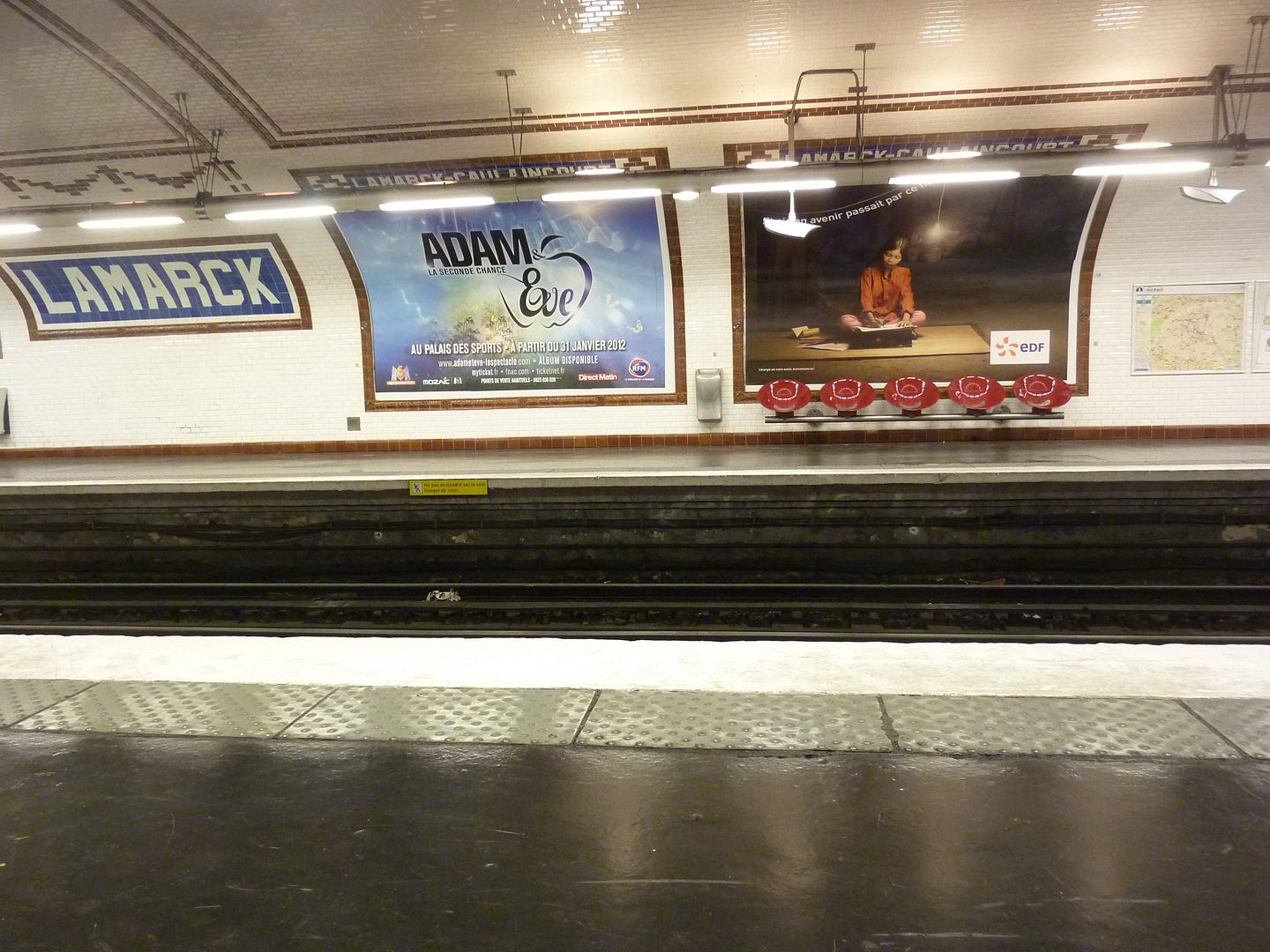
Lamarck-Caulaincourt is one of the deepest stations in Paris because the people building the metro kept the tracks at the same level everywhere and just burrowed their way to the surface from there, so they went up a long way to hit daylight in Montmartre.
Did anybody say that the metro is dirty?
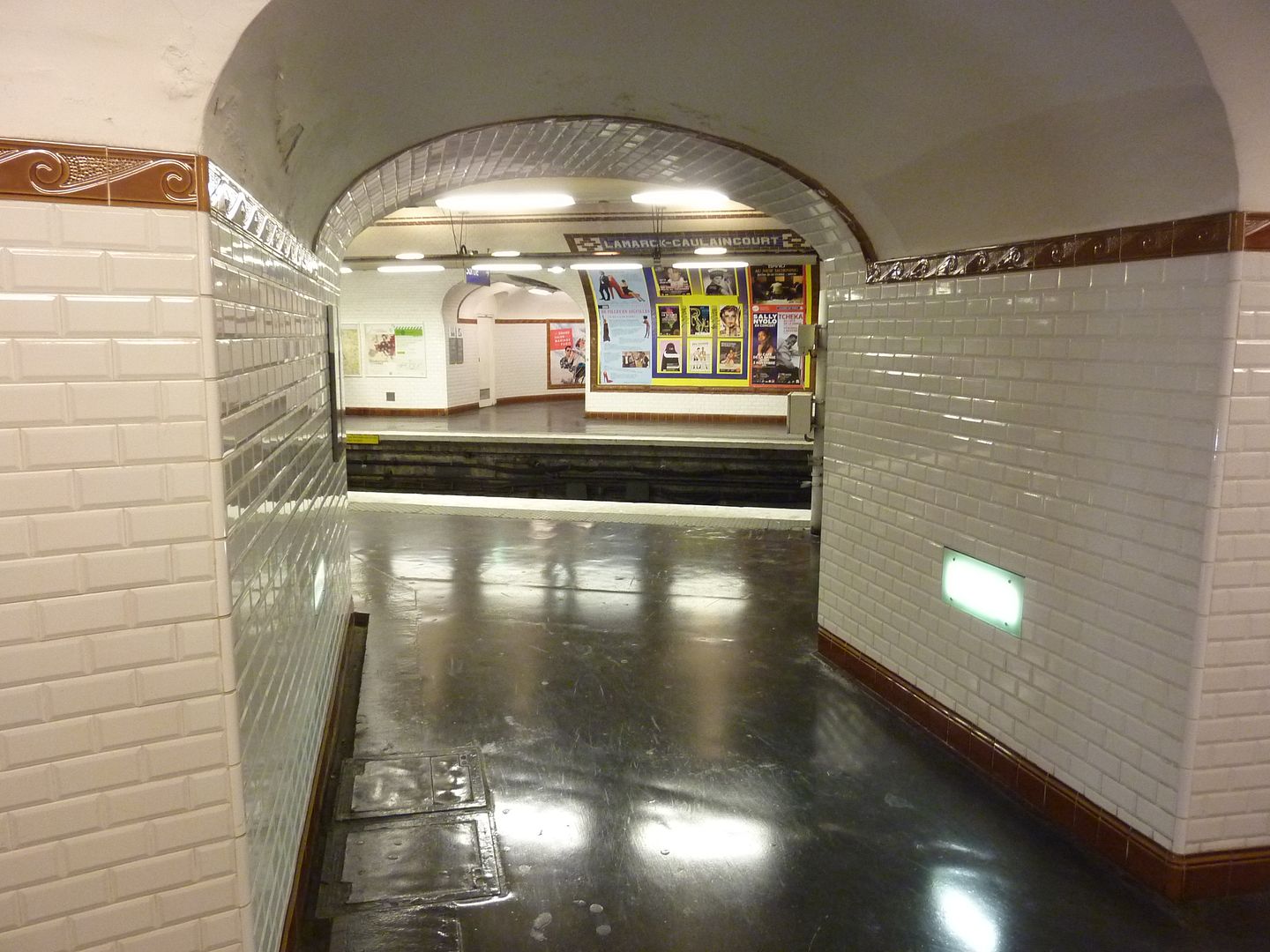
The elevators at both Lamarck-Caulaincourt and Abbesses are big enough for a regiment (well, maybe not quite). Did I say this is Sunday morning, before the crowds begin?
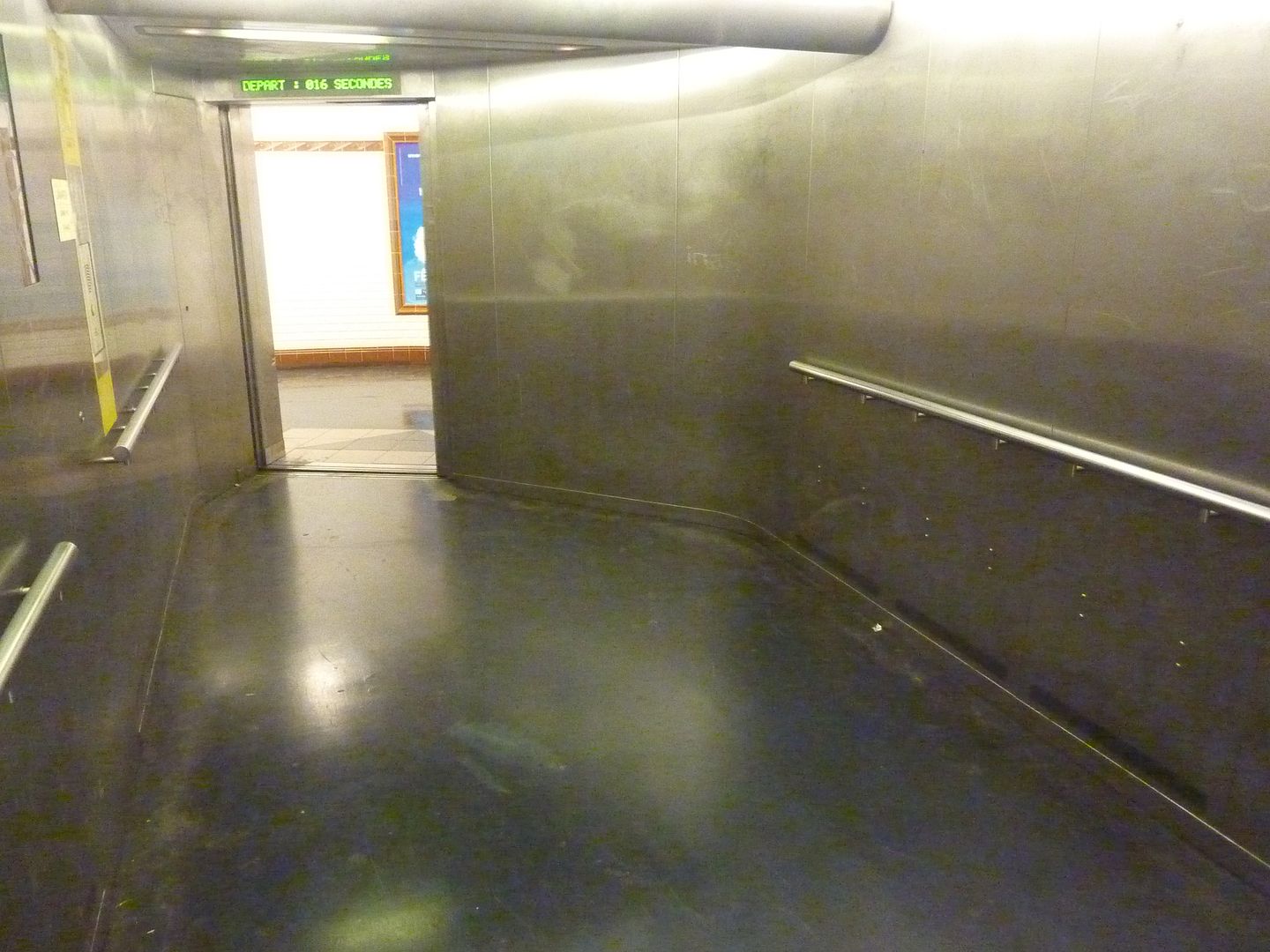
And we're out! Amélie Poulain had an important scene here in her movie.
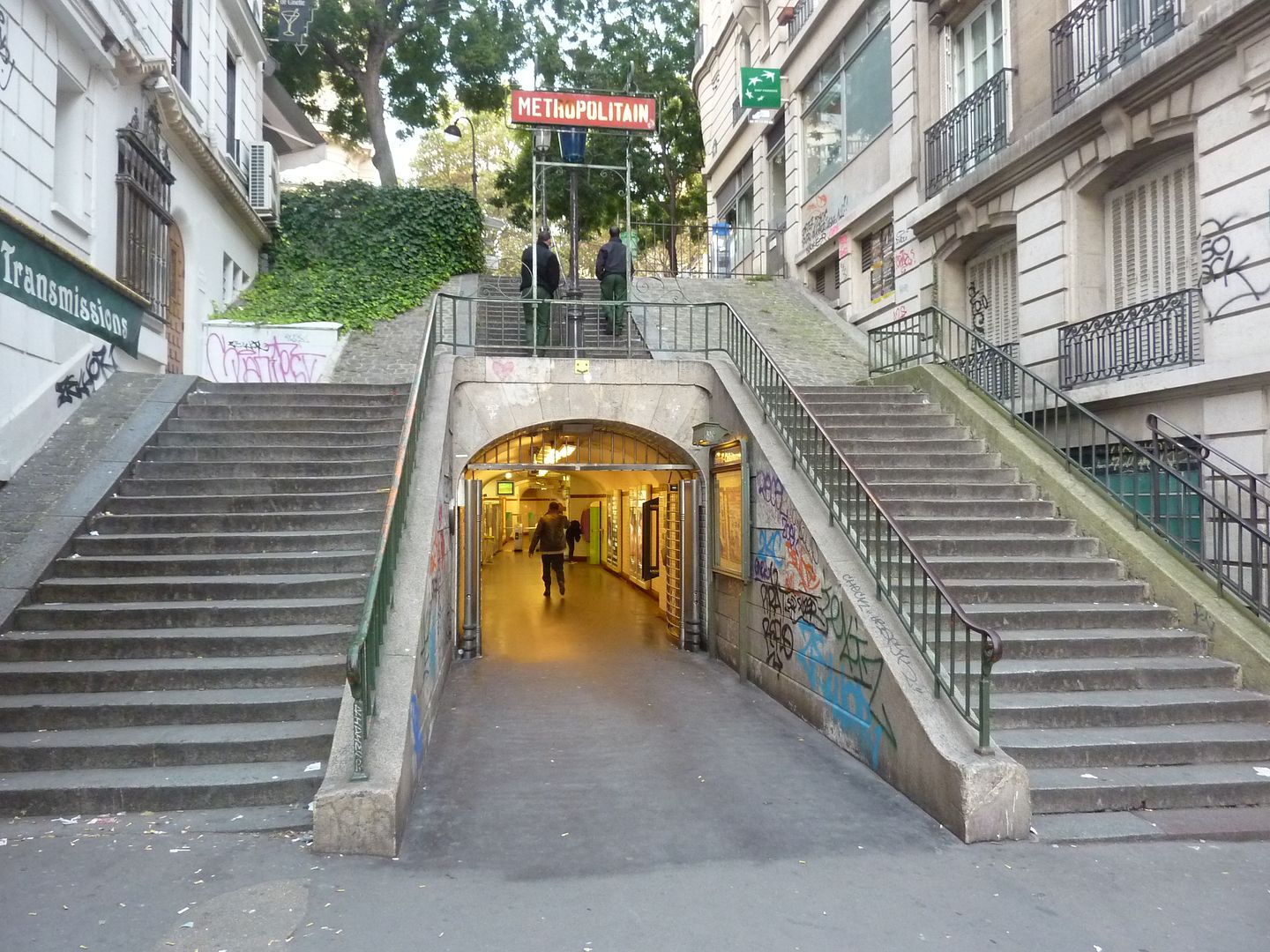
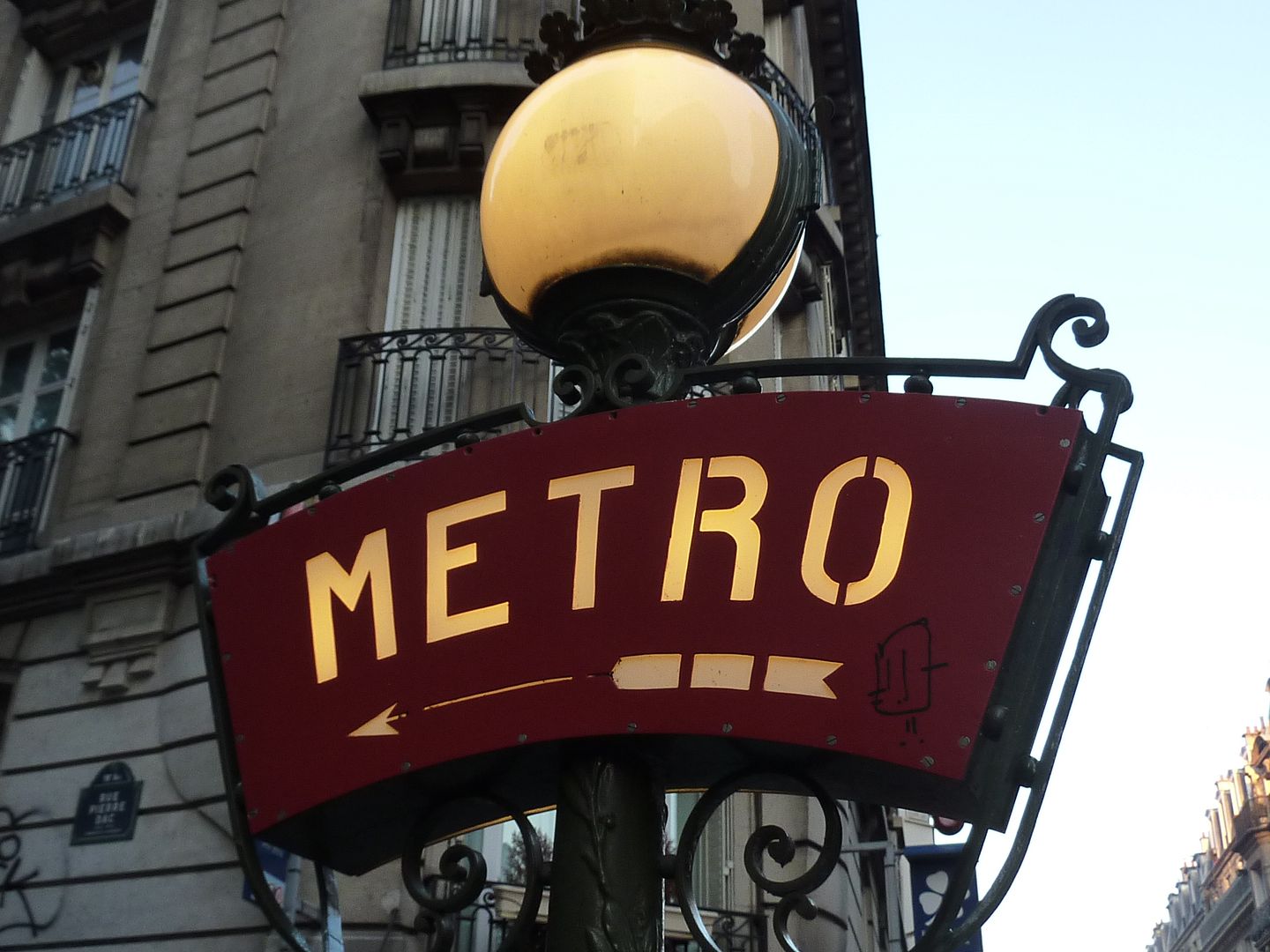
I love rue Caulaincourt, but it is not the object of my visit.
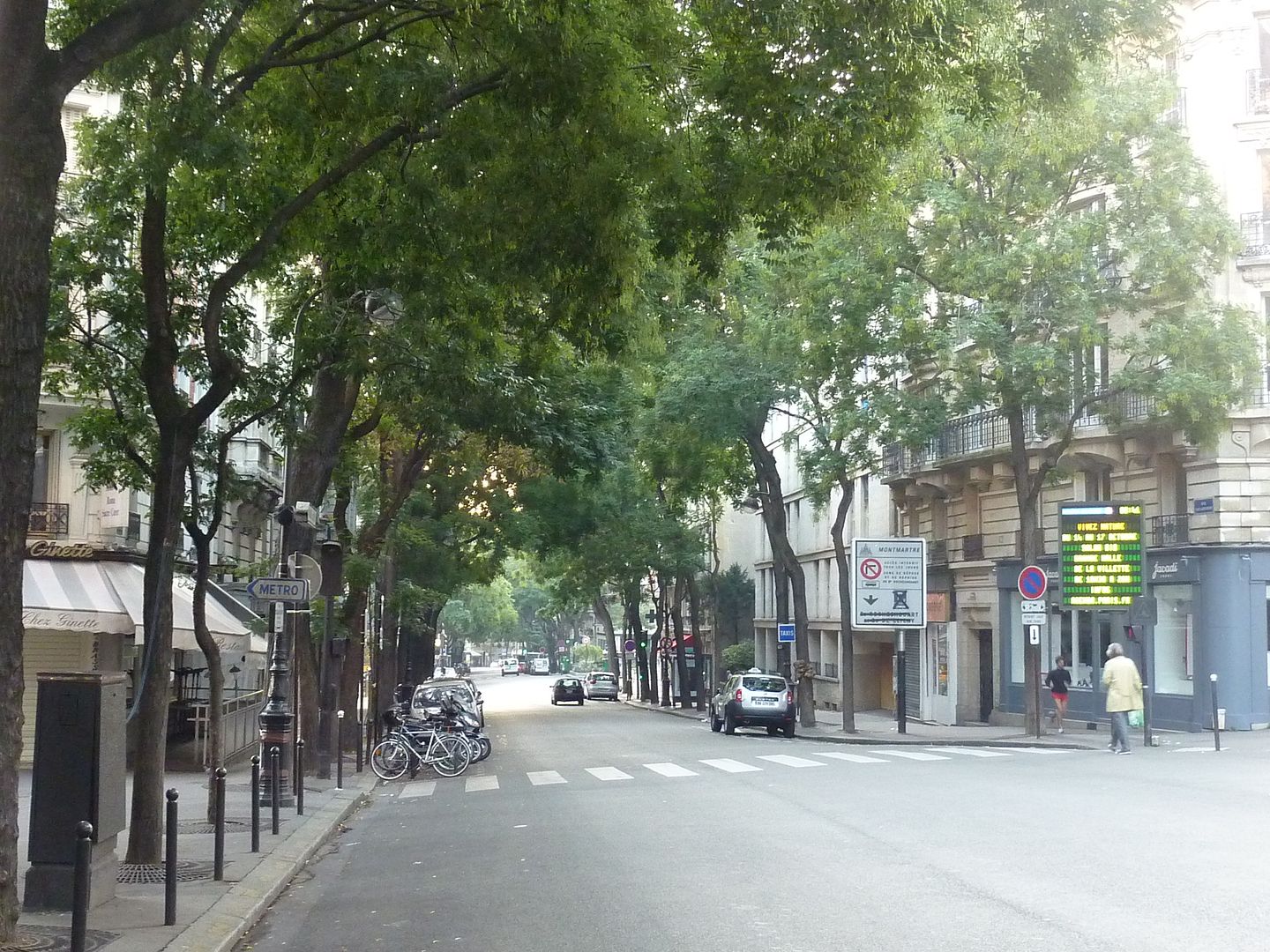
Huge numbers of Parisians now use motorcycles and scooters to get around.
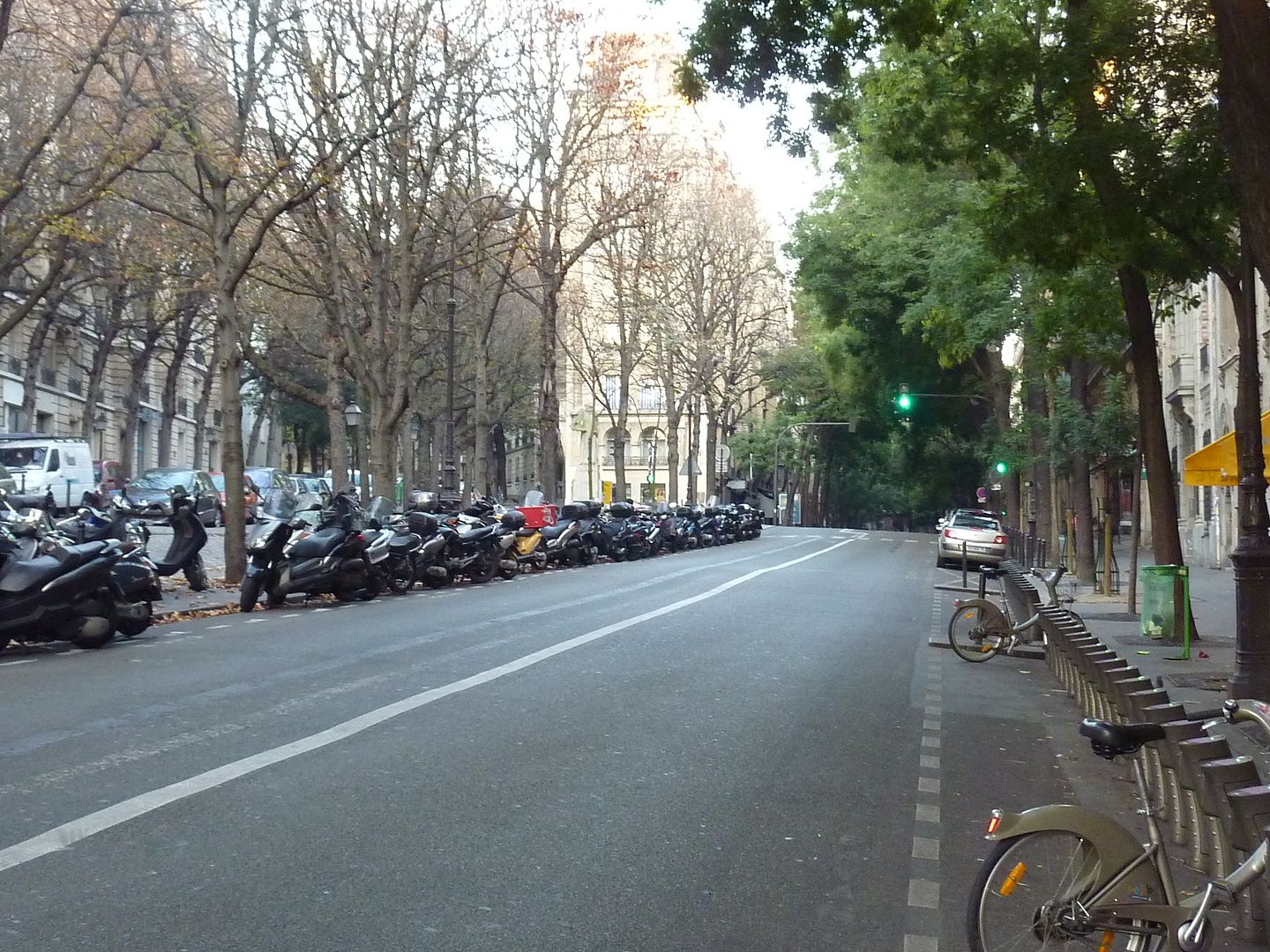
I really like the thin buildings, which ensure all sorts of windows with different views.
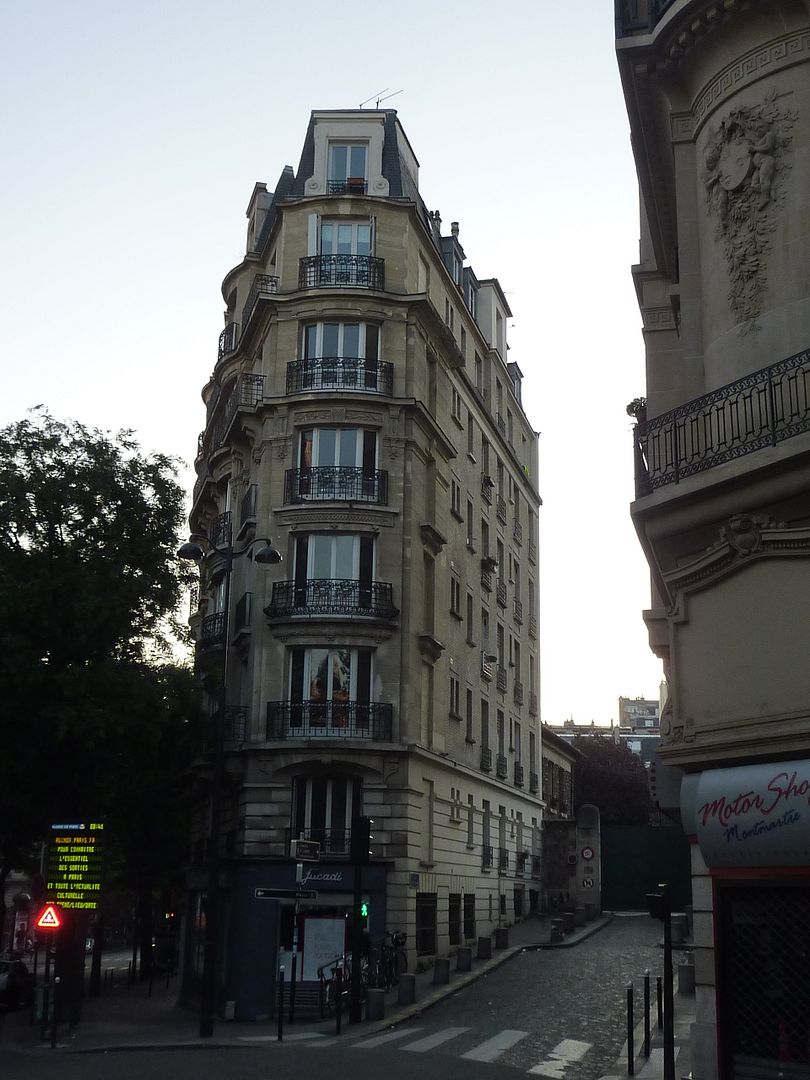
I live in a thin building myself (but not a nice one). I love having windows that show me three completely different scenes since I have windows on all three sides.
This takes us up to Place Dalida, named after a French cultural icon. She was an Italian from Alexandria, Egypt who became one of the most beloved pop singers. She was Miss Egypt in 1954 and committed suicide in 1987 due to a lack of love. This is also exactly where she lived in Paris, but not everybody seems to respect her memory.
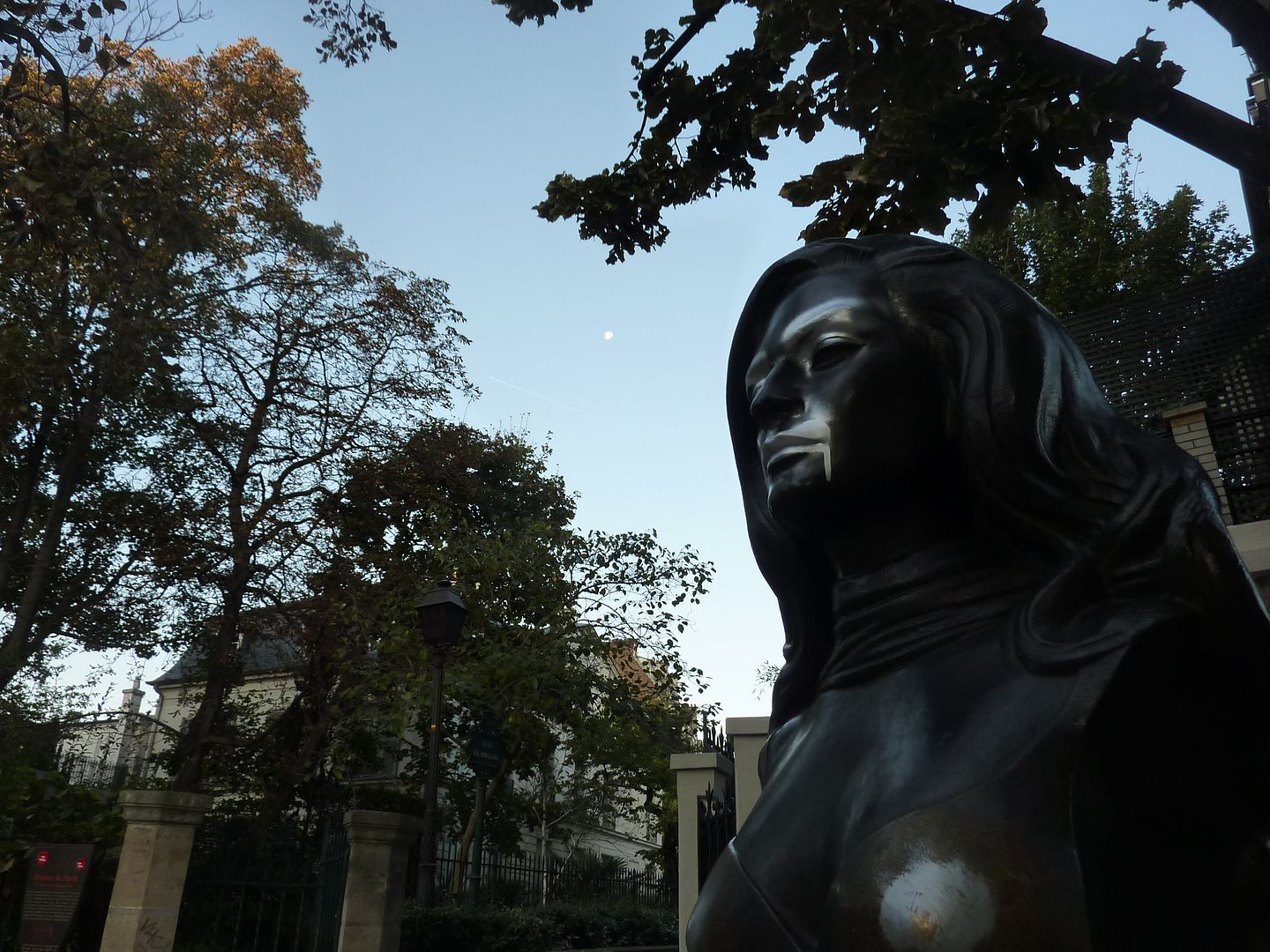
Looking in the direction of Sacré Coeur which you can't quite see...
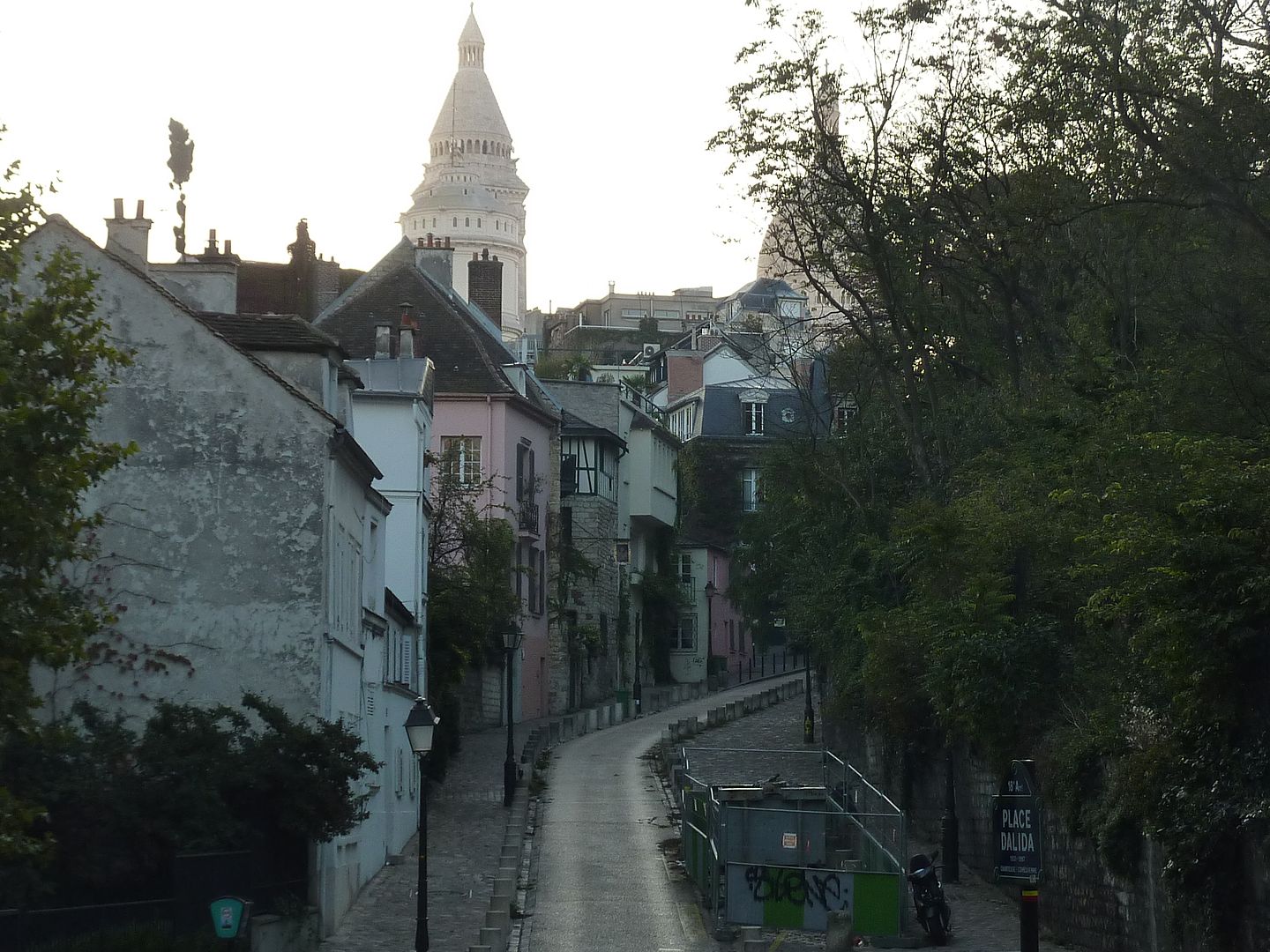
Okay, here is something that the tourists come looking for, le Passe-Muraille, a literary figure created by the author Marcel Aymé in 1943. Obviously, the character could walk through walls.
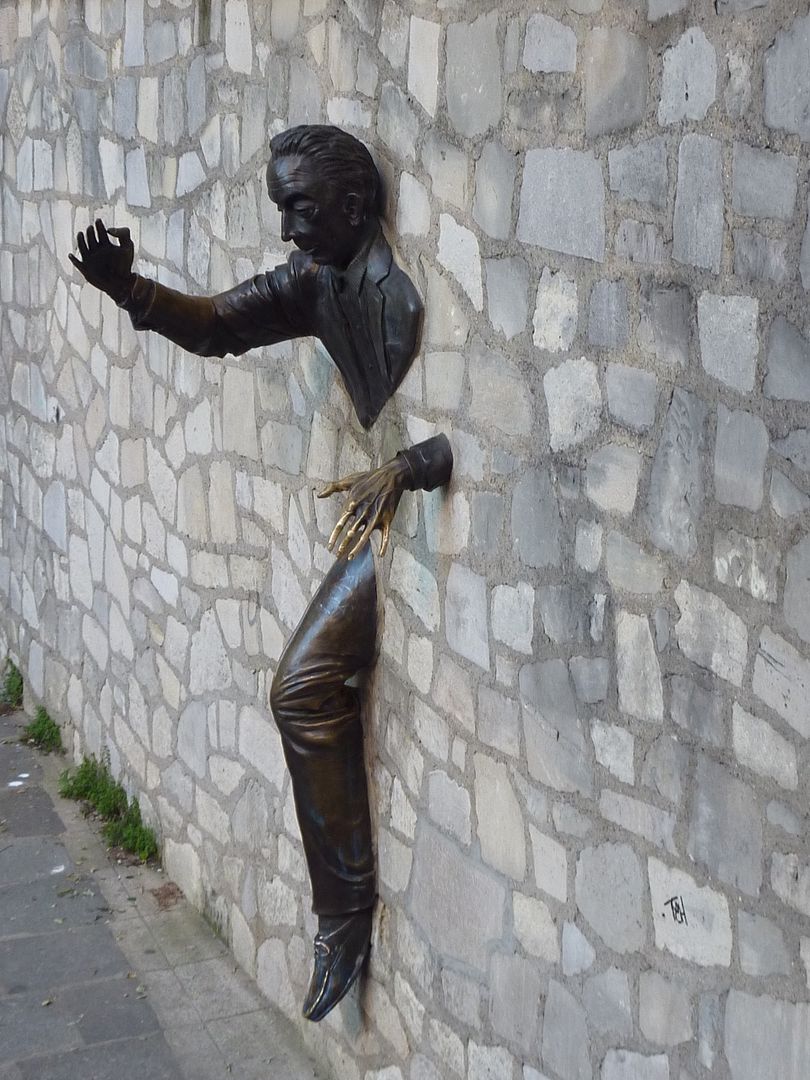
And also right here is the (completely reconstructed) Moulin de la Galette, dating from 1978. At least it looks the same as it did in 1809.

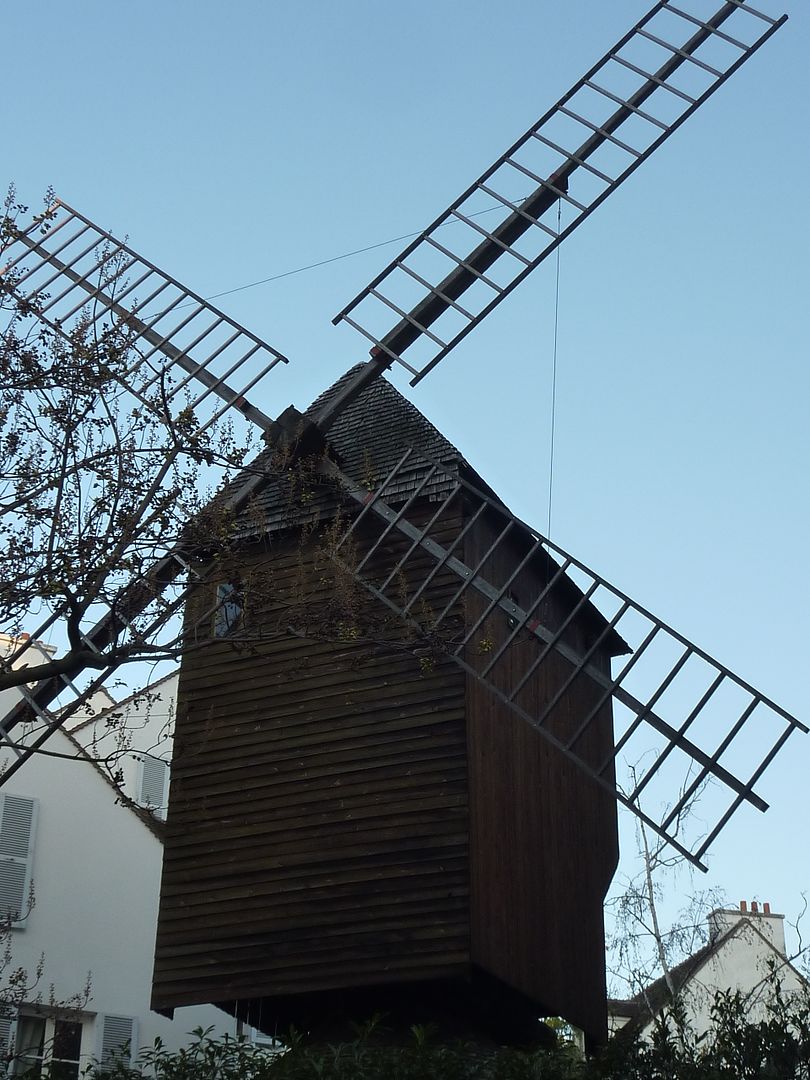
I still have all of the streets to myself.

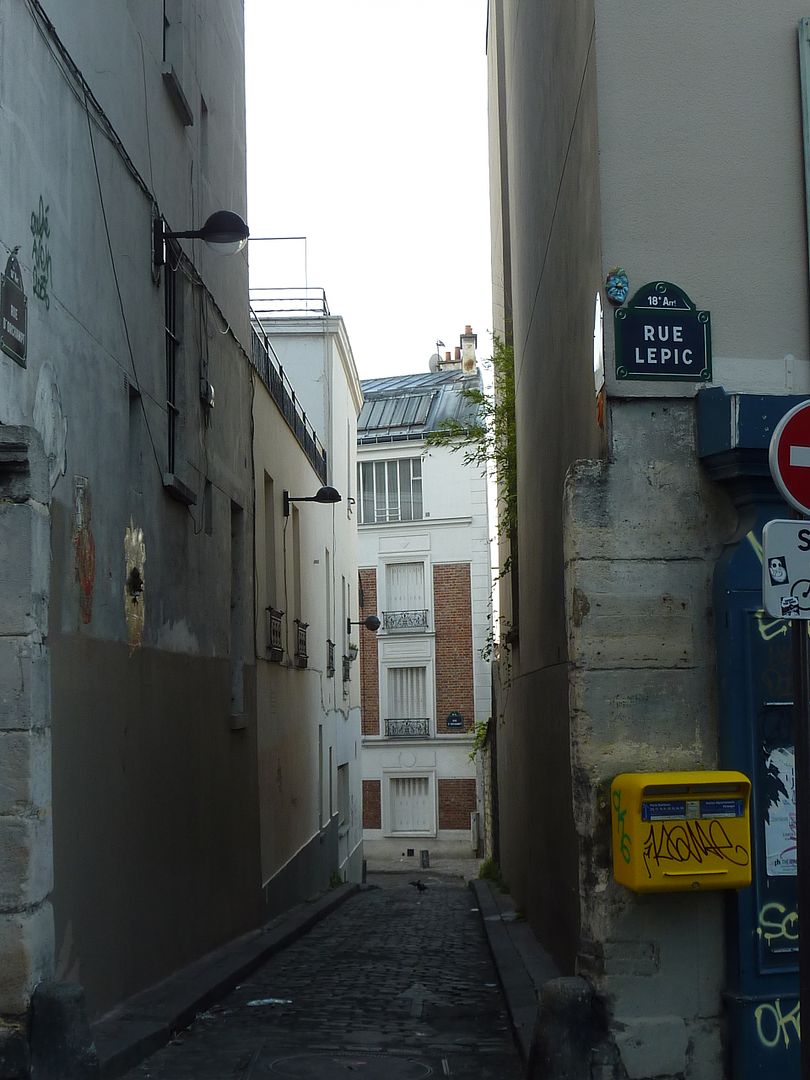


Avenue Junot is one of the most expensive streets in the city for real estate.
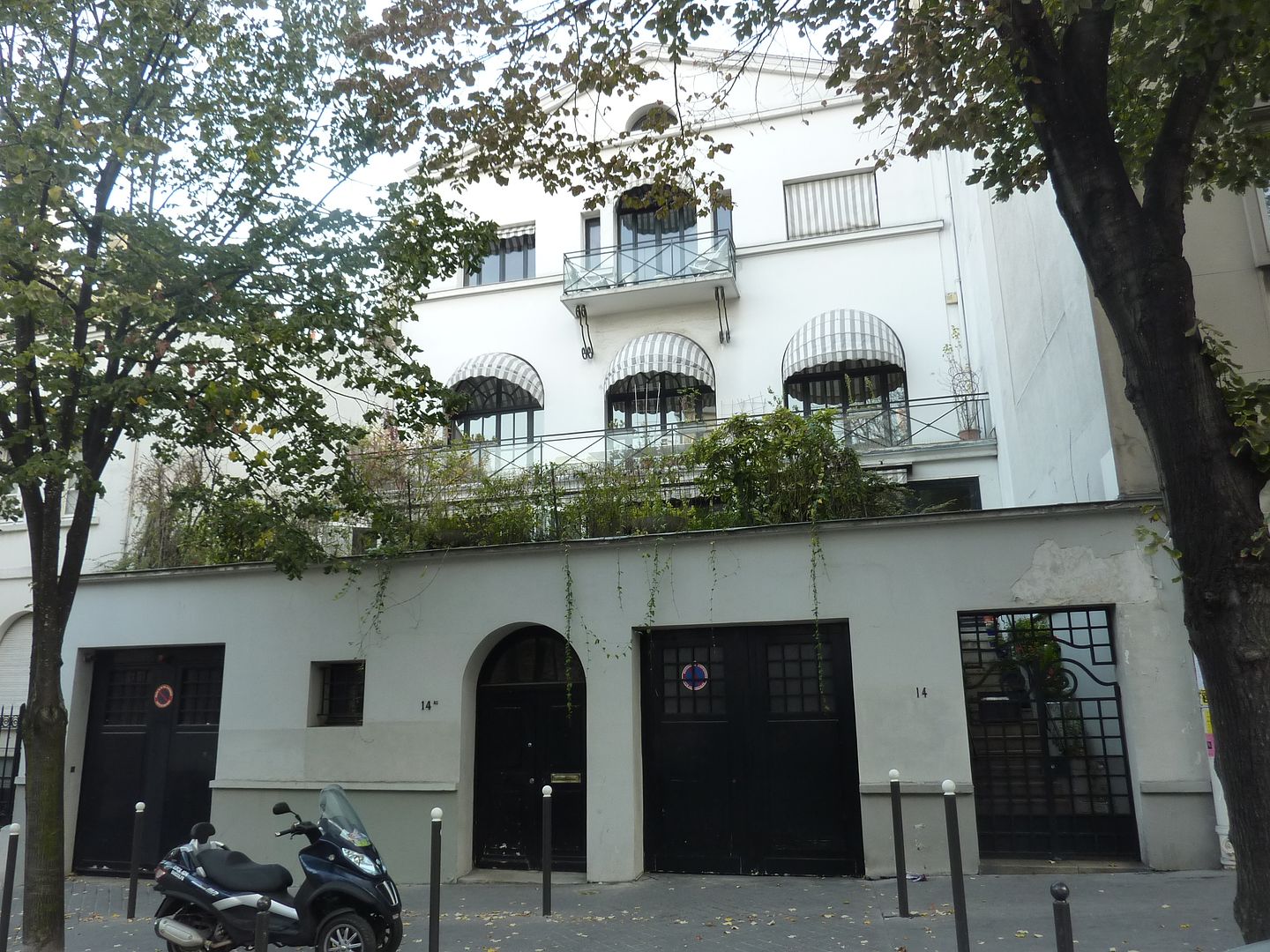
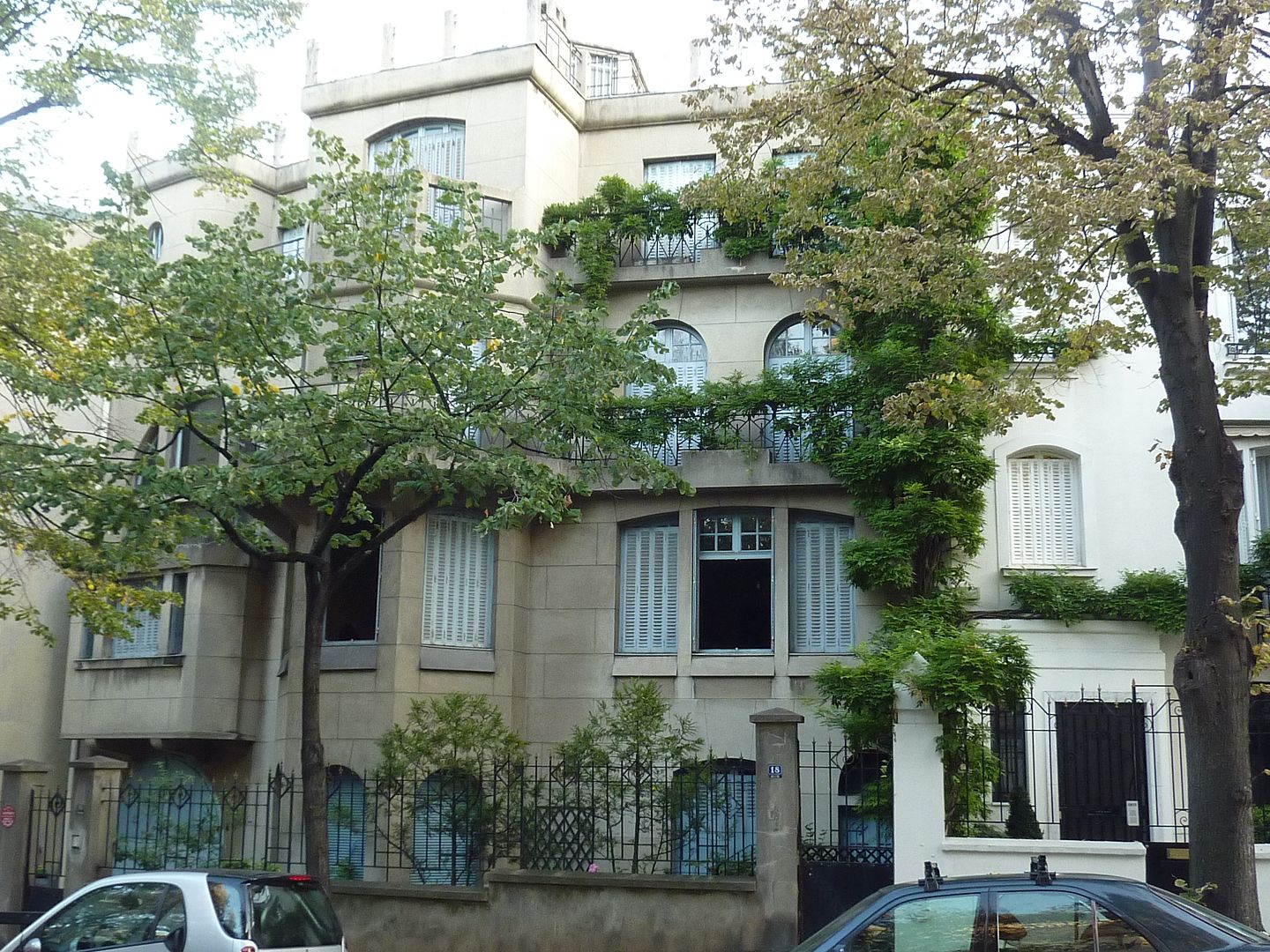
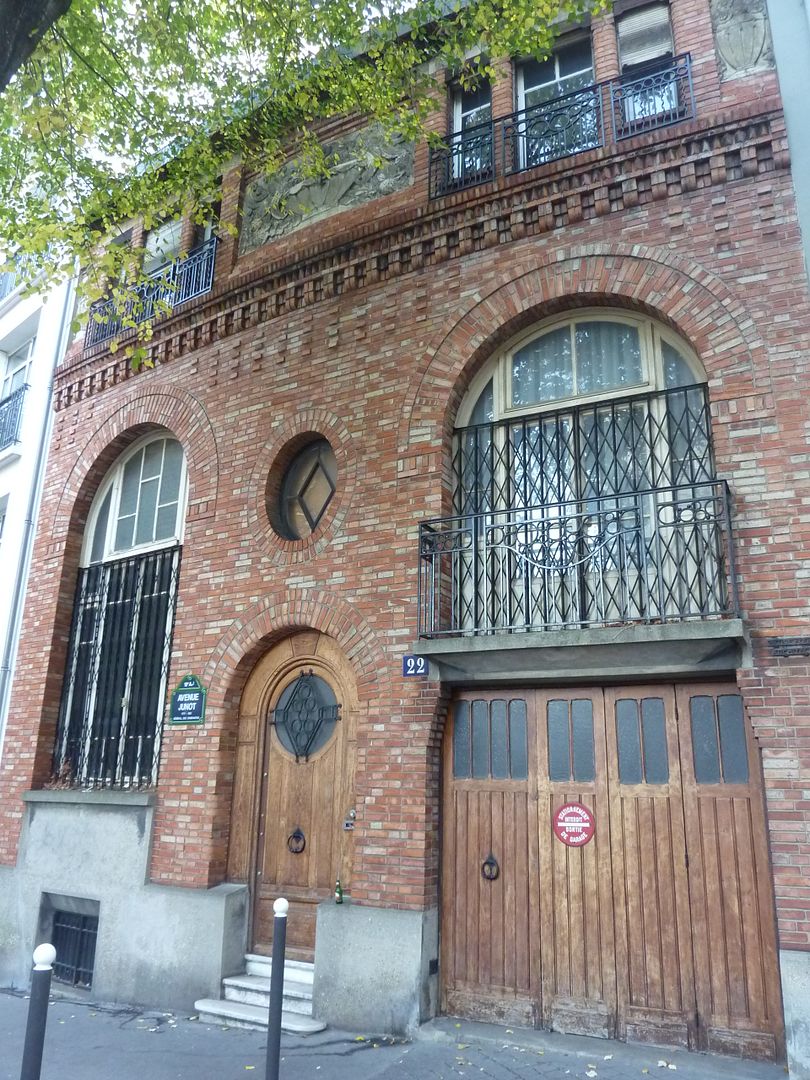
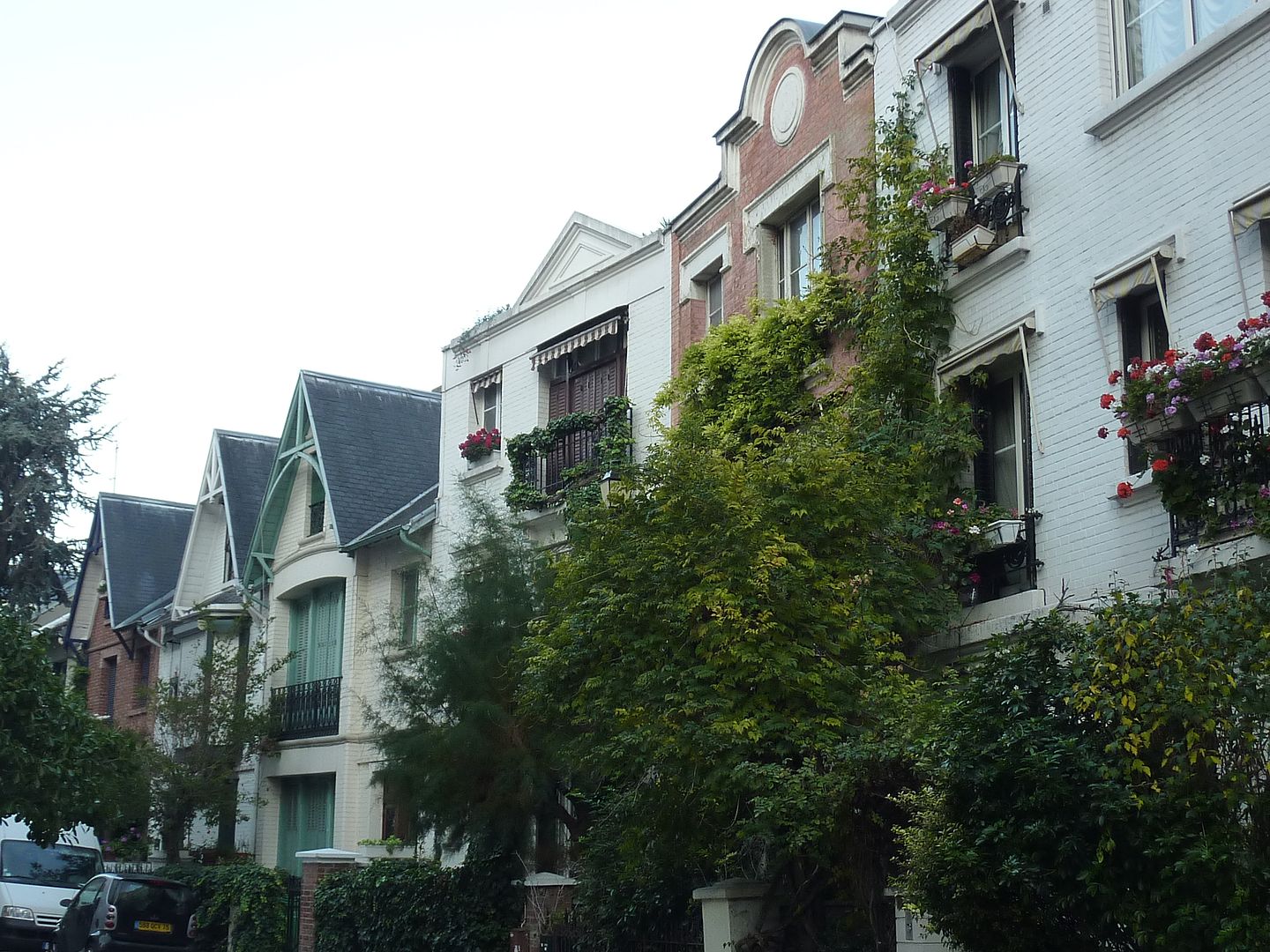

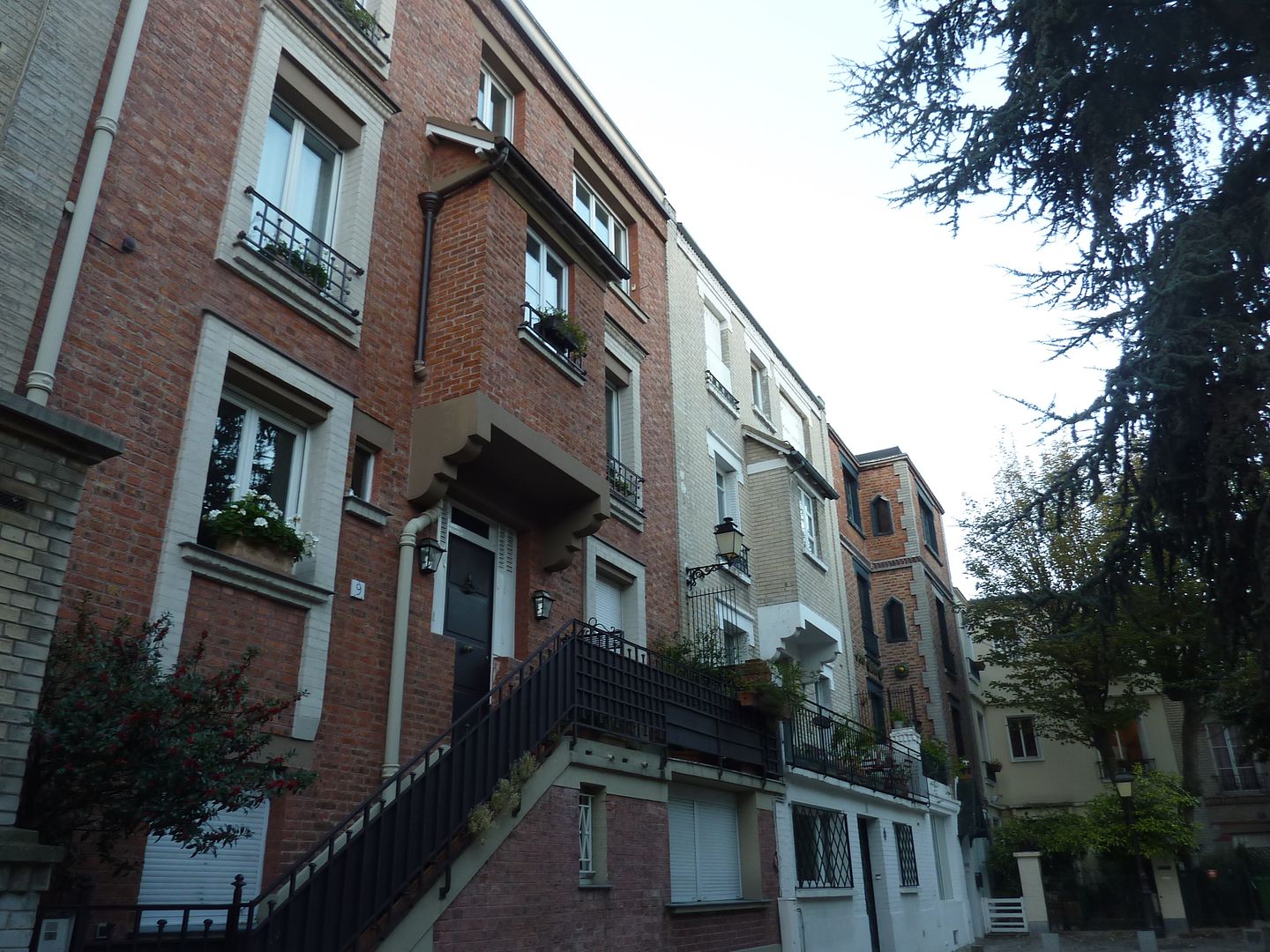
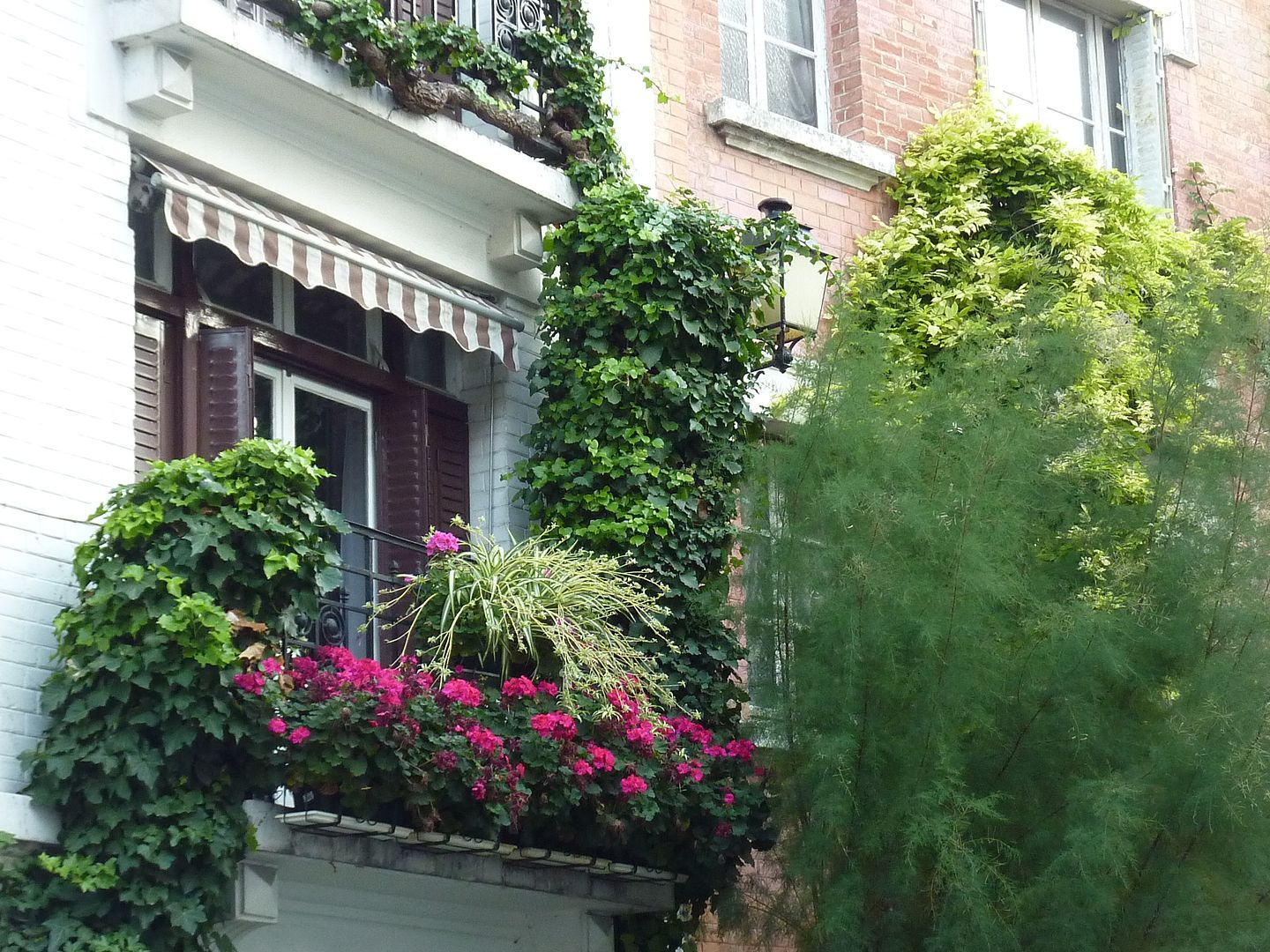
When you walk up some of the alleys, you can see new passages to totally inaccessible (to people like us) private neighbourhoods.
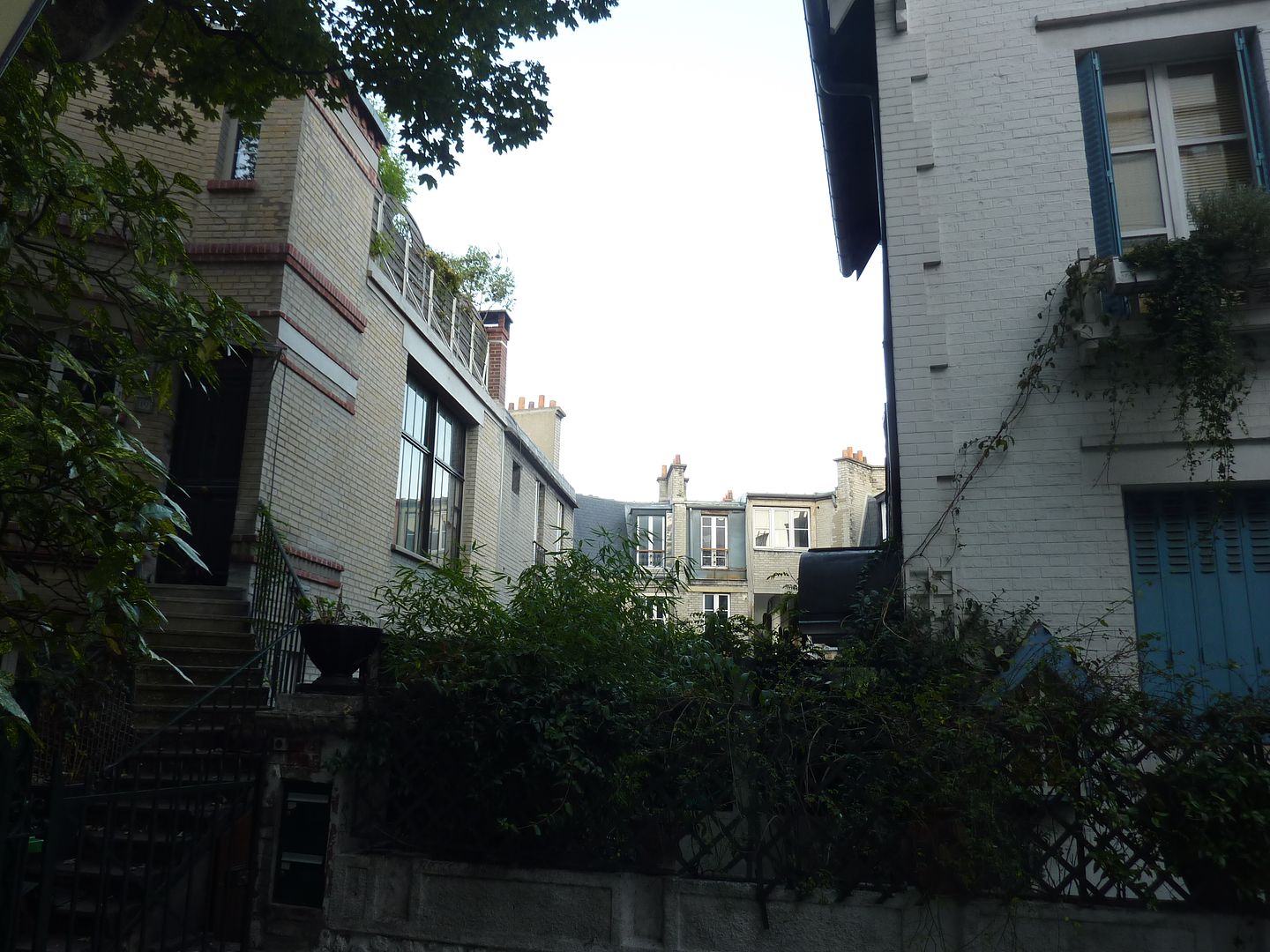
I could see a whole new world as I leaned through the grates. (Hello, kitty on the left!)
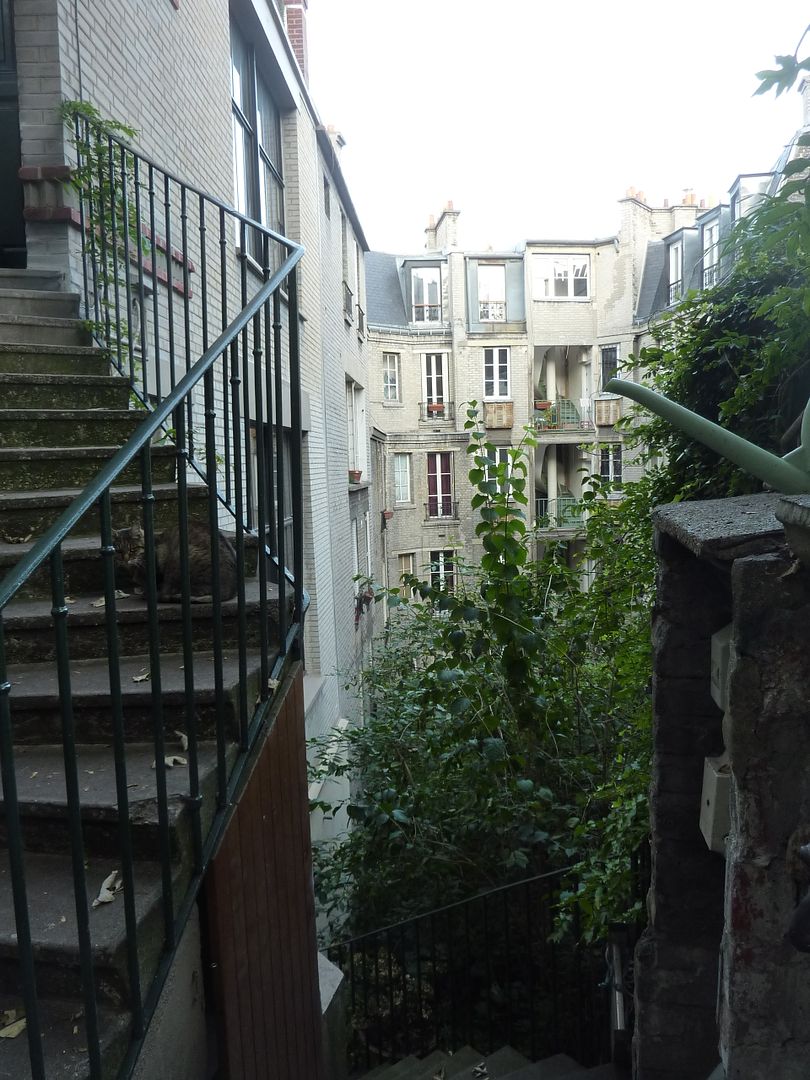
It should be mentioned that this area is the only tiny zone of the 18th arrondissement that votes for right wing candidates for some reason.

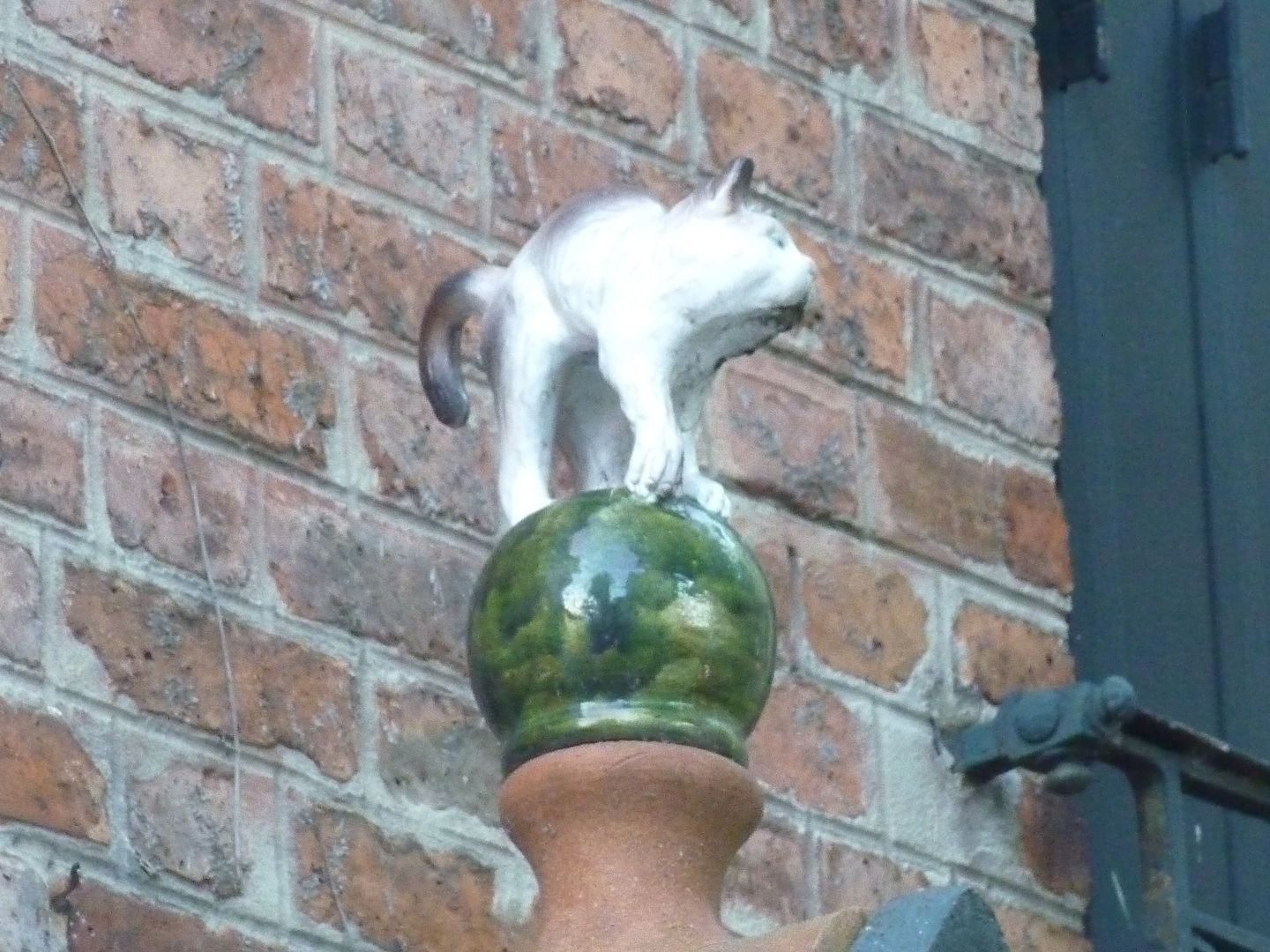
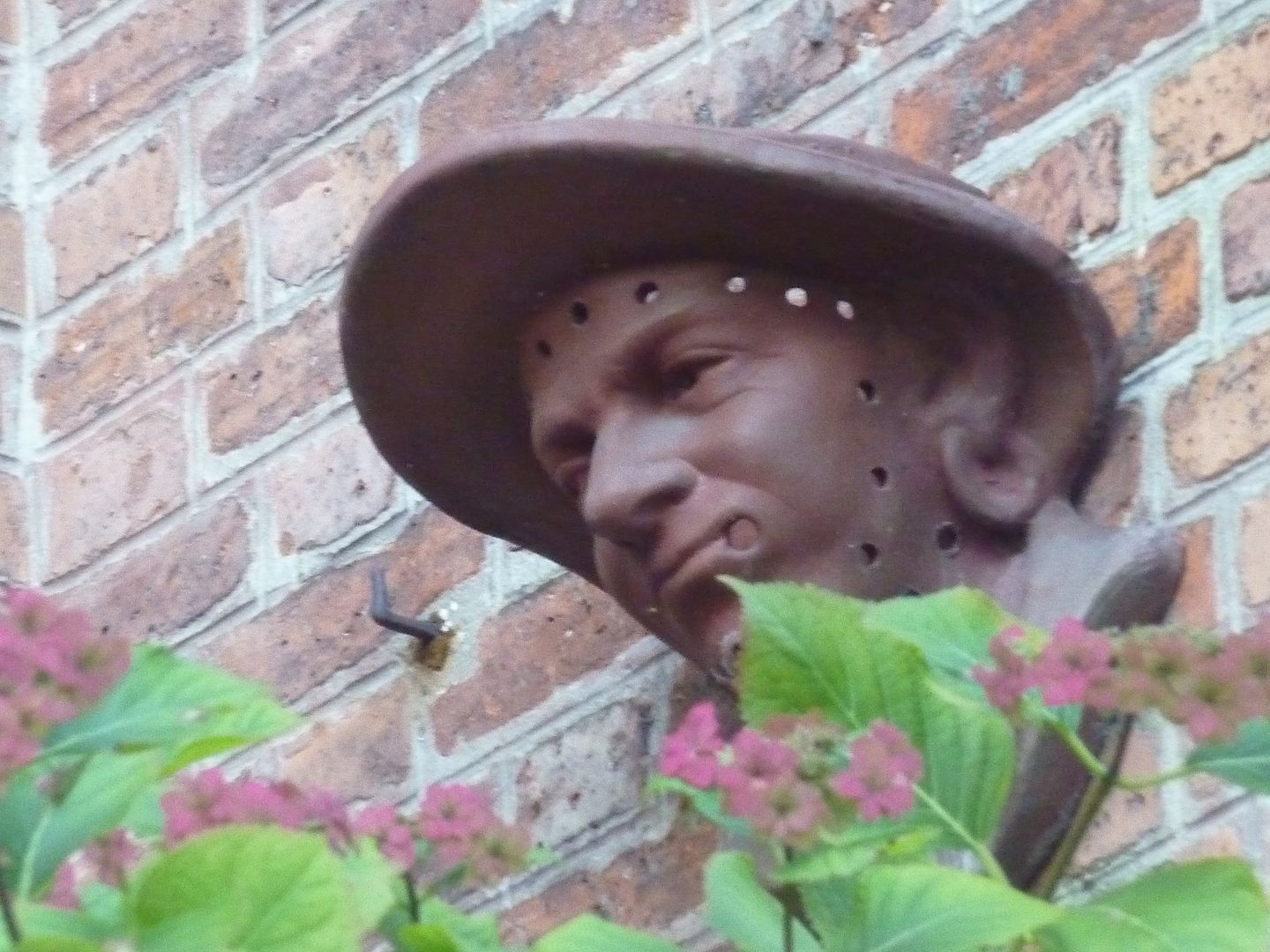
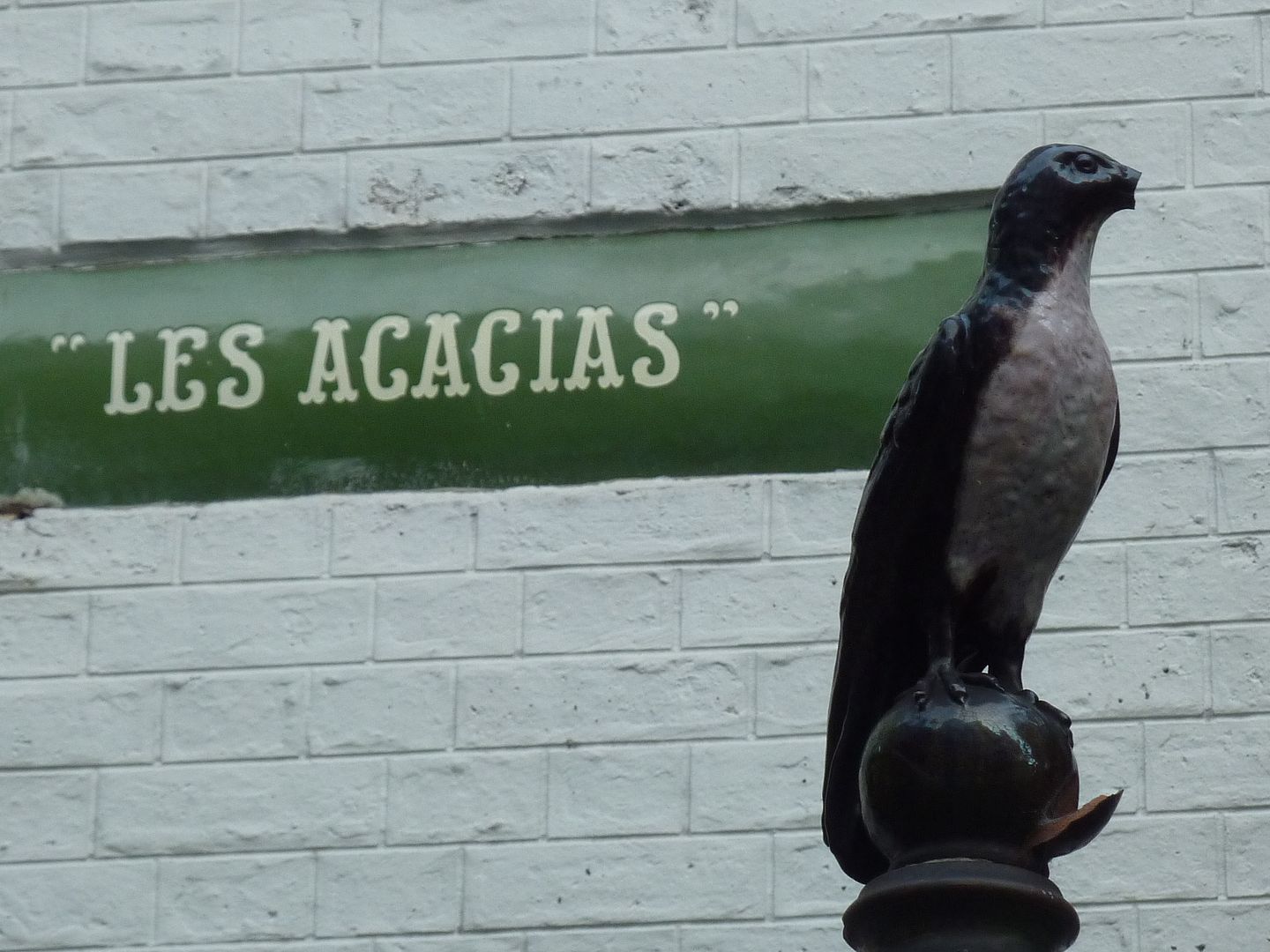
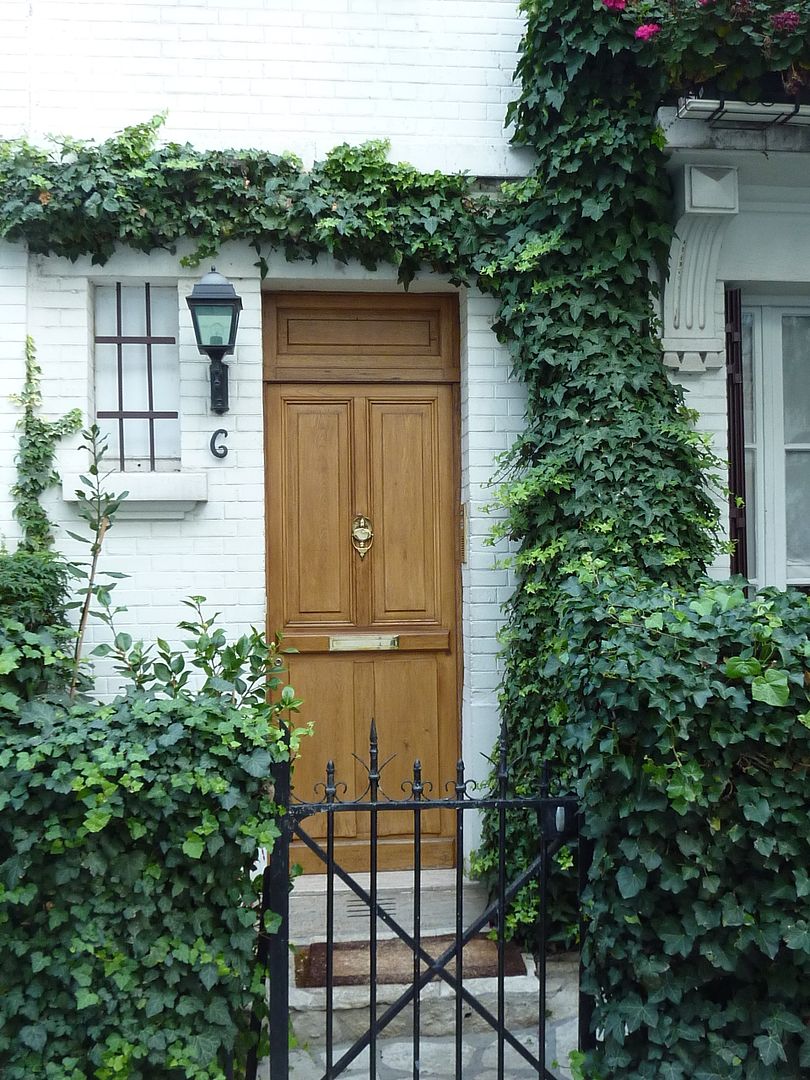
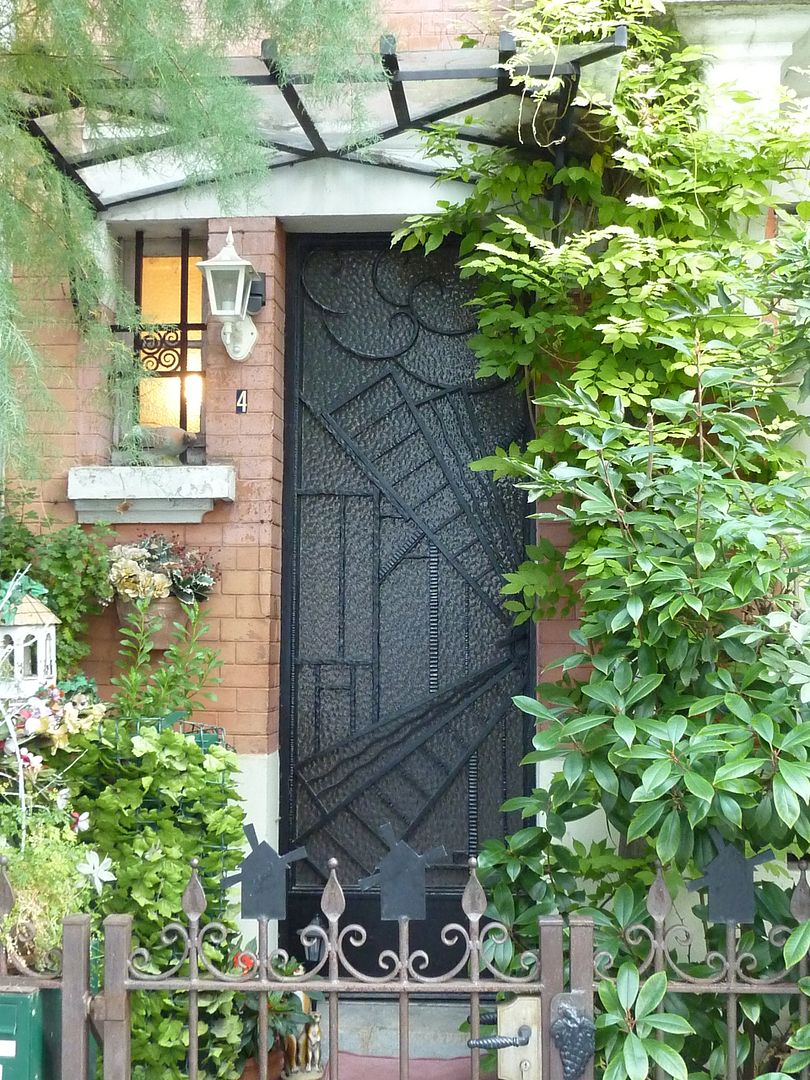
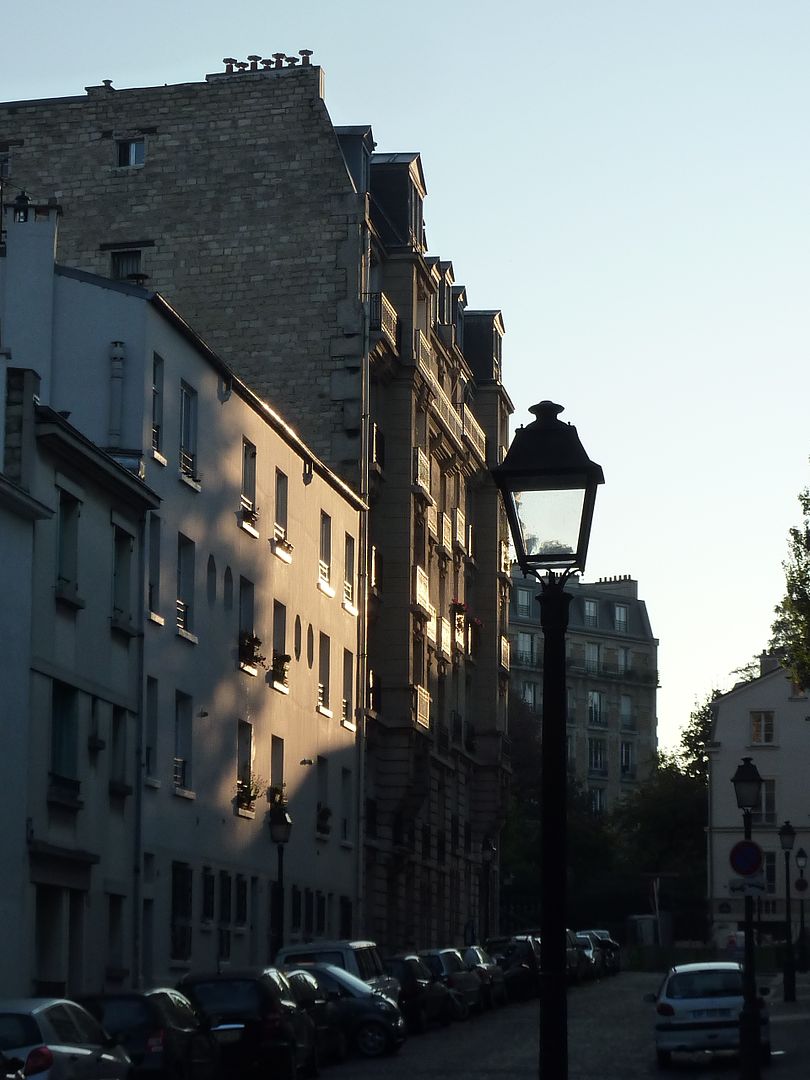


A local real estate agency gives an idea of the prices.
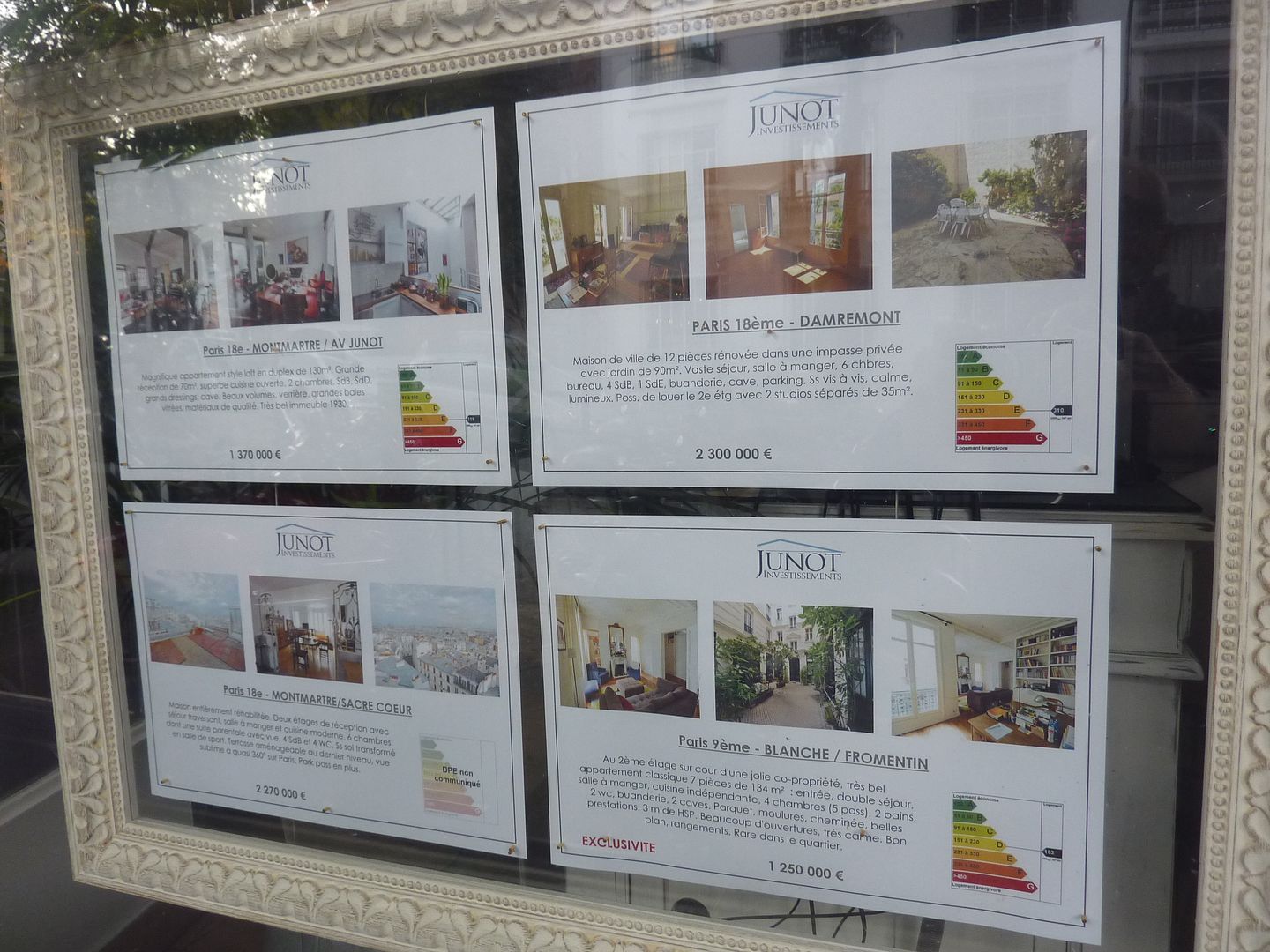
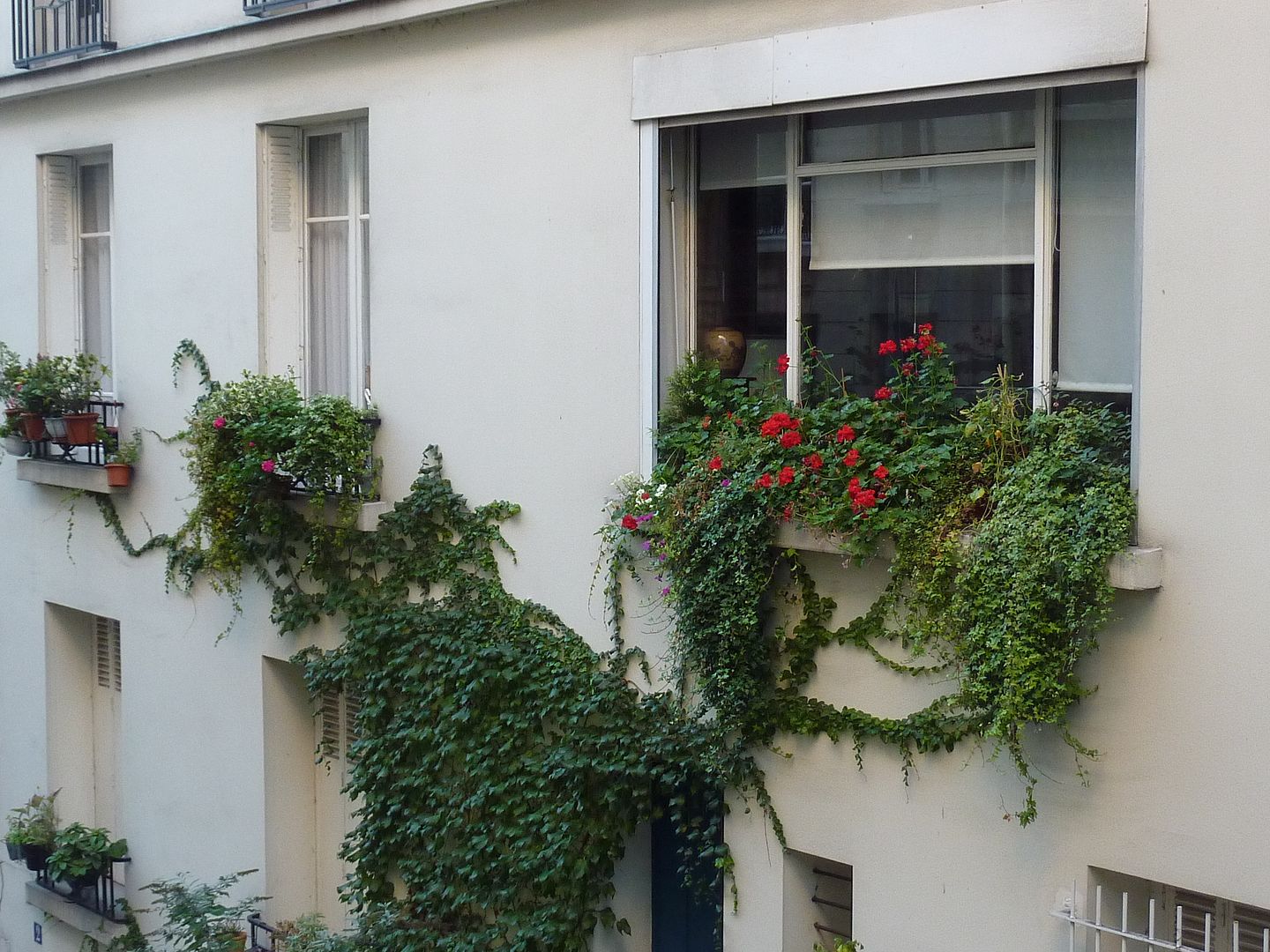
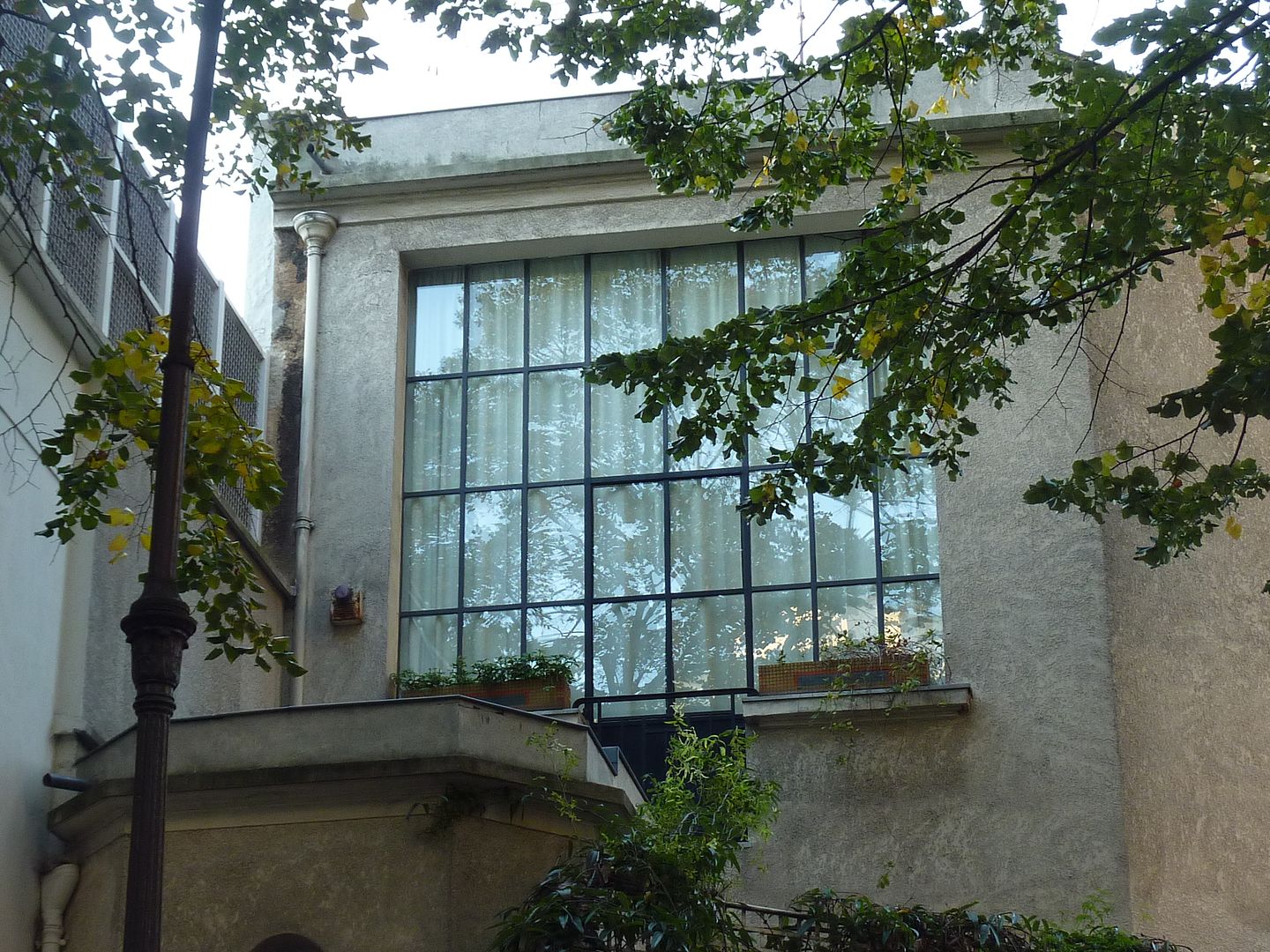

Parking can be a problem, however.
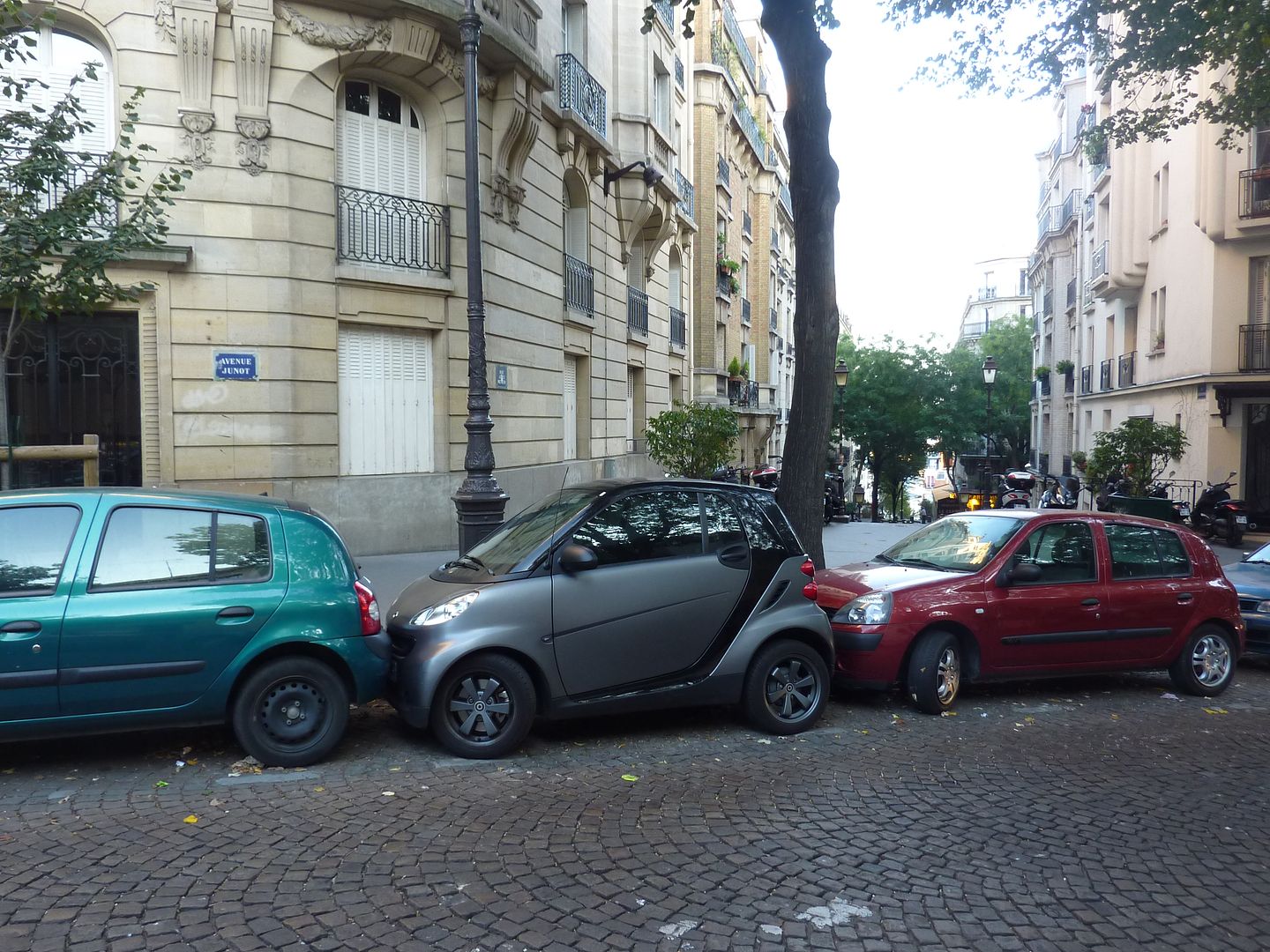
Because of all of the old quarries in Montmartre, it is impossible to build underground parking even under the rare new buildings here. My only claim to living anywhere near Montmartre was that I had to obtain a "quarry certificate" for insurance purposes when I bought my place to confirm that there was no risk of the building collapsing due to possible subterranean cavities. (There are at least one or two incidents a year that damage buildings, but the last building that fell down was in 2008 on rue Tholozé, quite near the area I was visiting -- just below the Moulin de la Galette.)
From avenue Junot, you just have to go down one flight of steps to get to very commercial rue Caulaincourt.
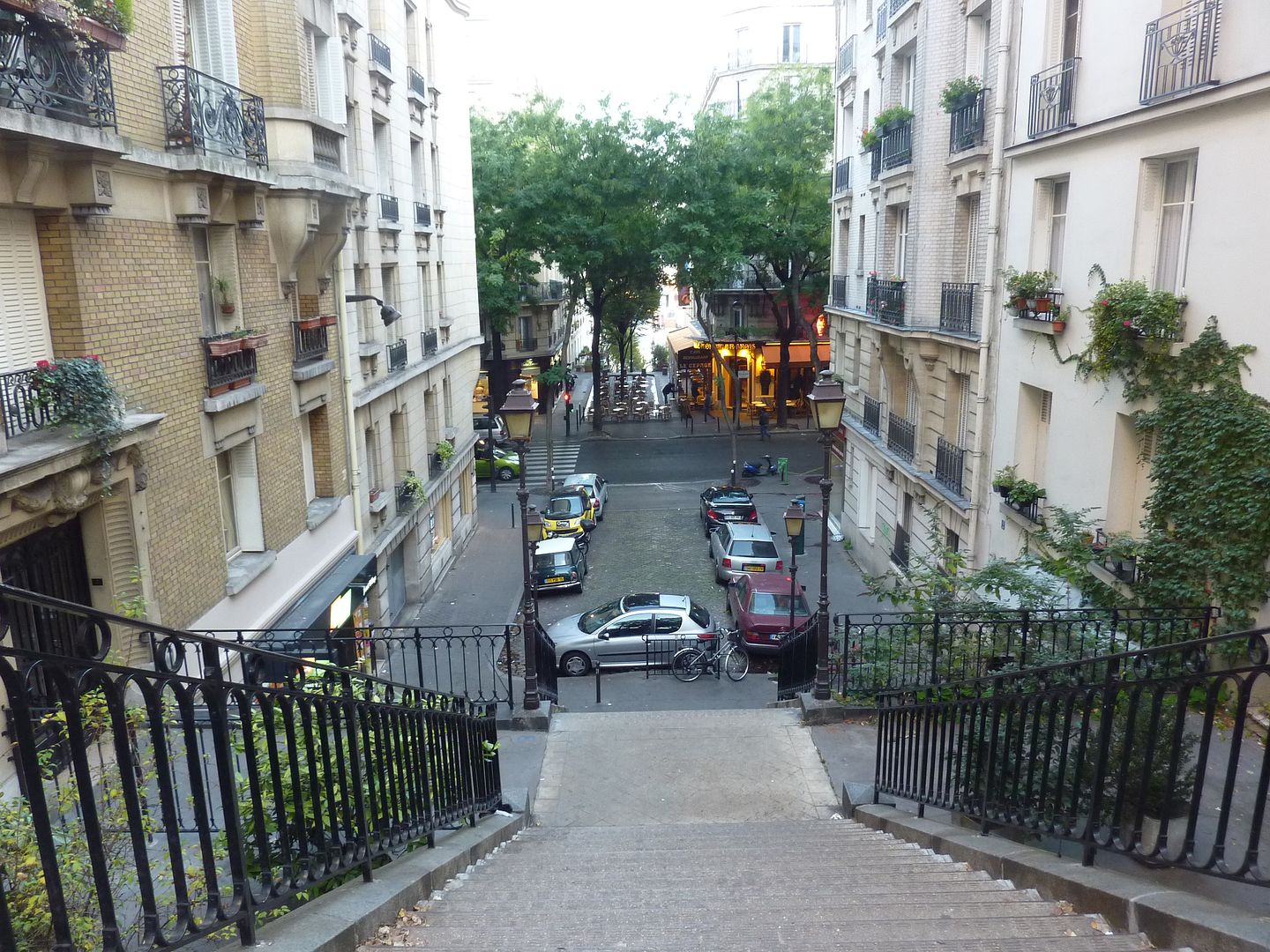
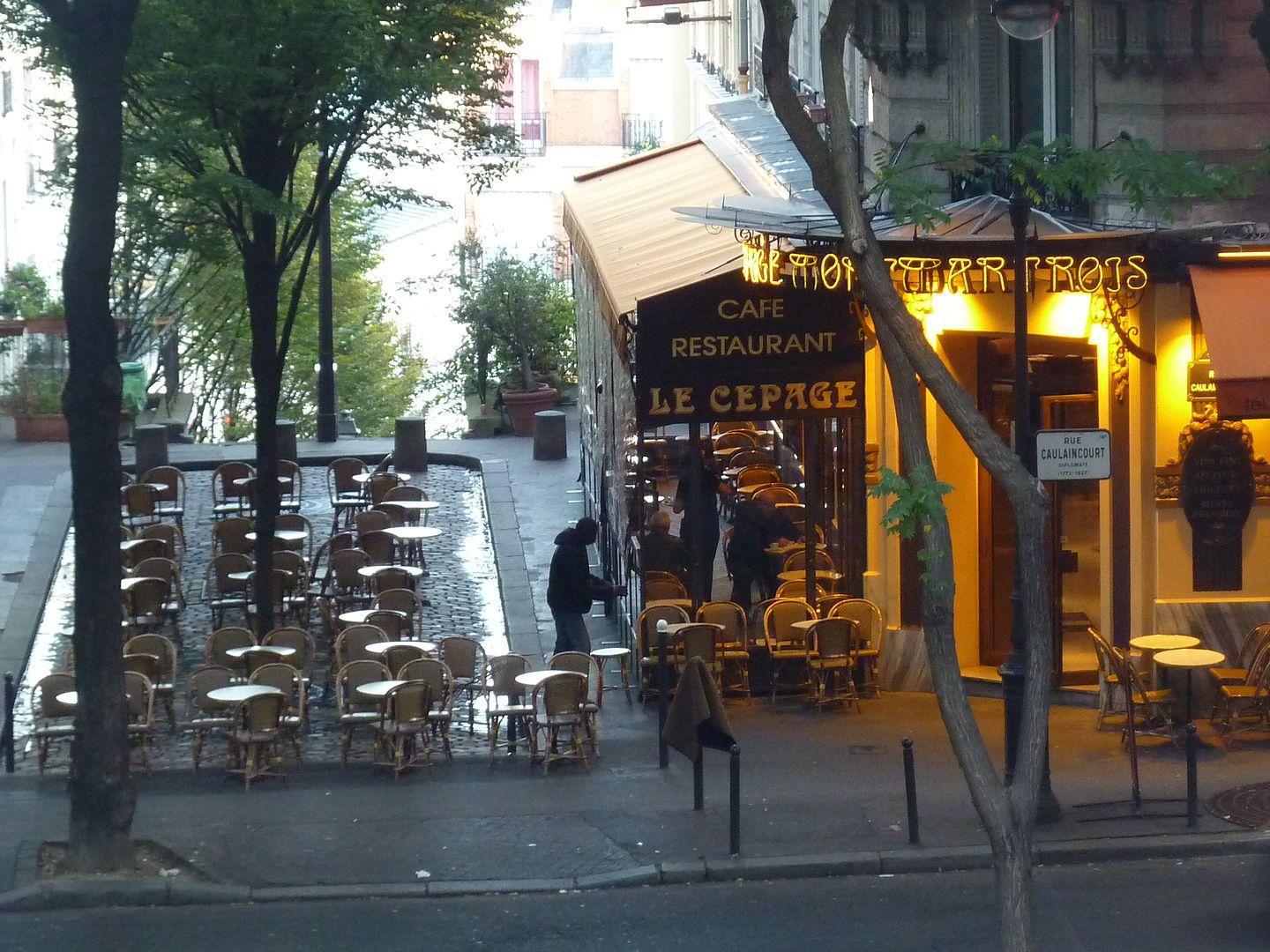
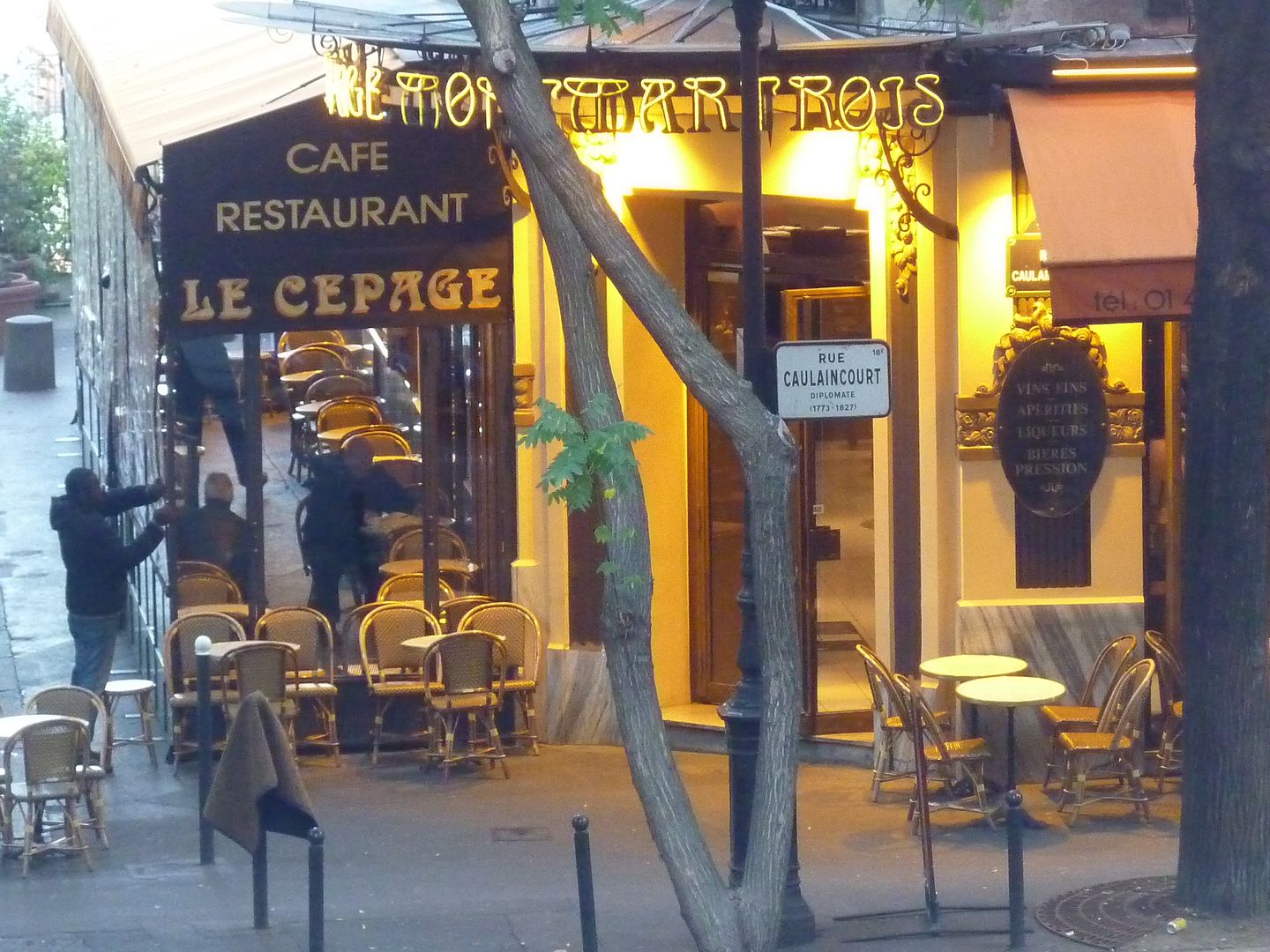
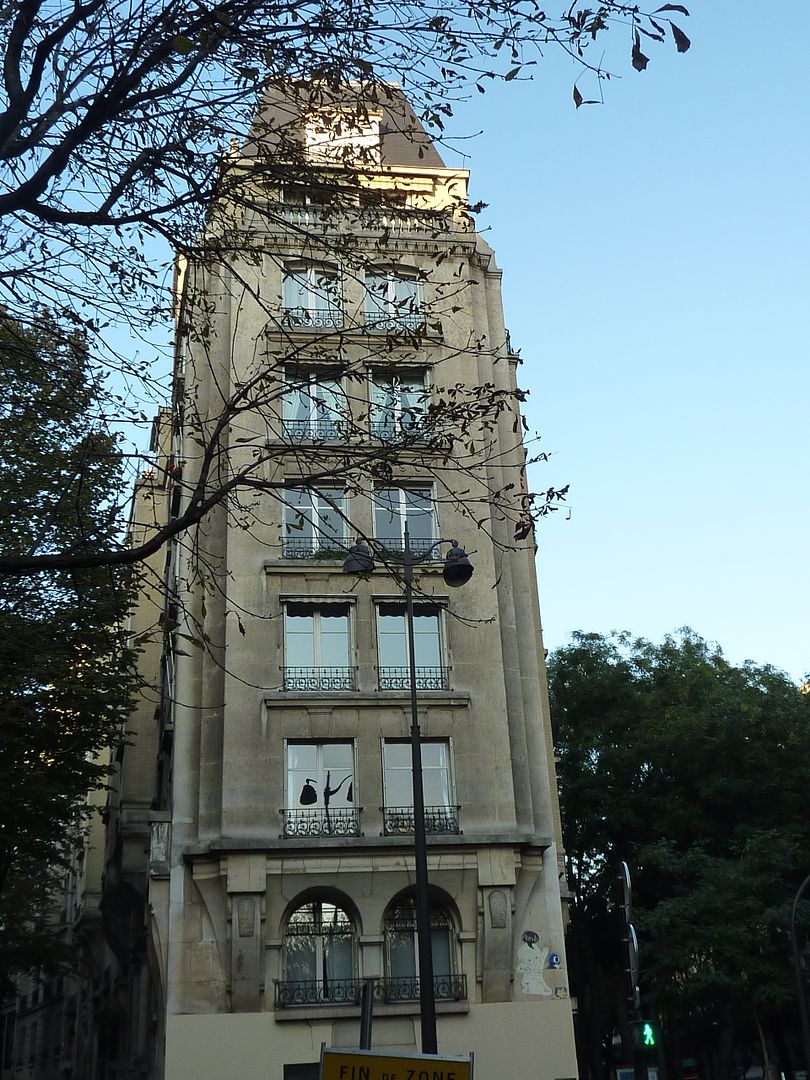
This is a medical center.
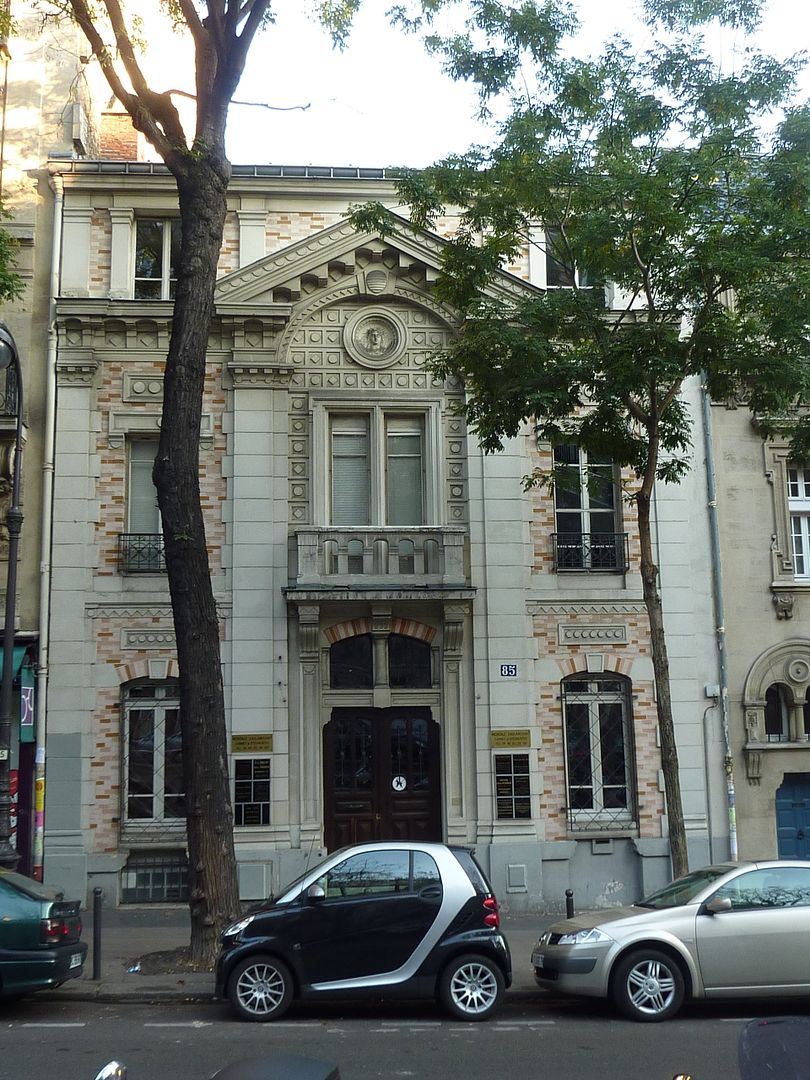
I had forgotten to recharge my camera battery and it was beginning to complain as it got down to its last 20% or so of power. So I decided that I would have to consider this brief tour of residential Montmartre as sufficient.

But, all of a sudden, what was this little cemetery that I had never noticed?

Better go in and take a look!
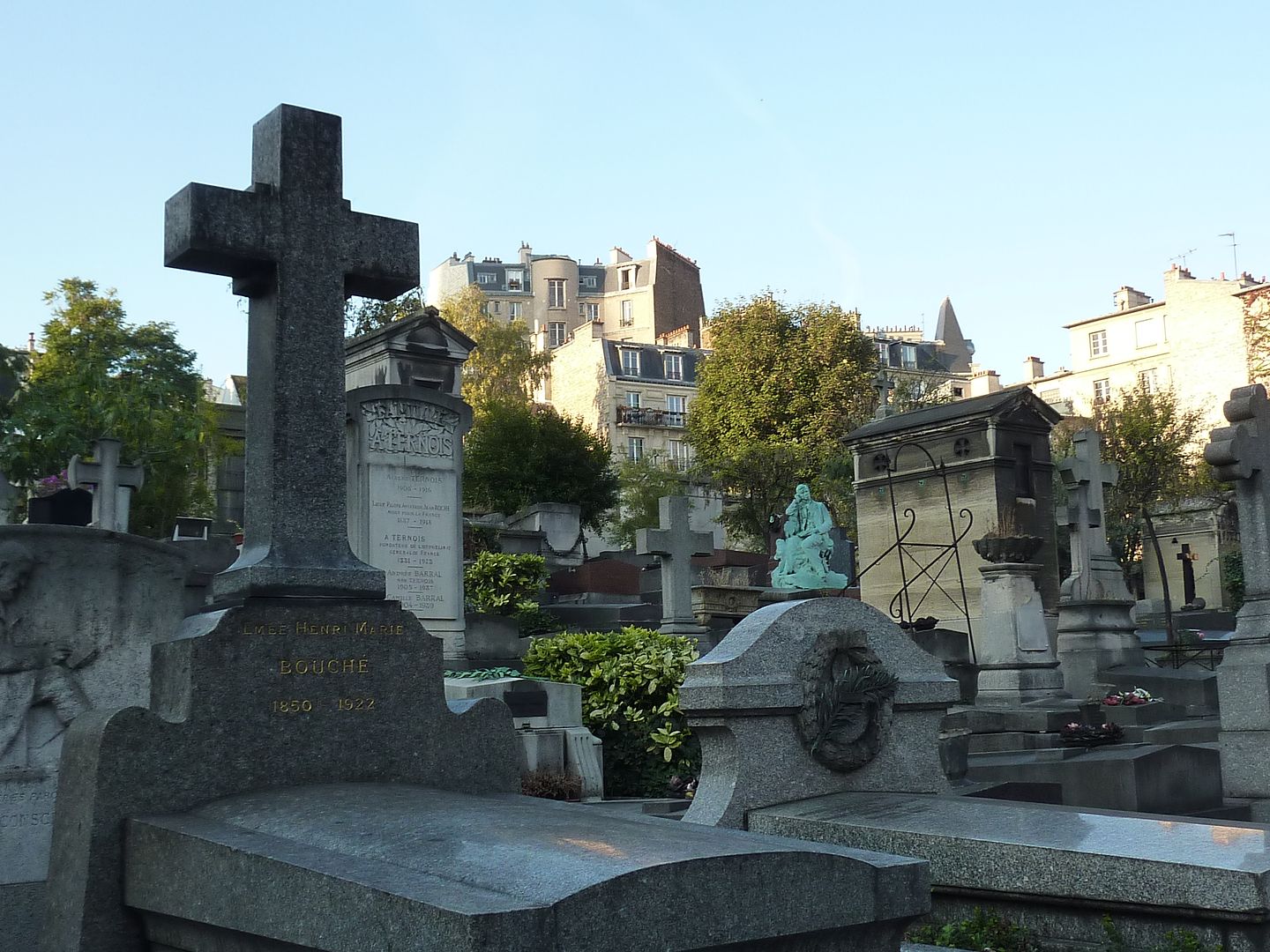
More lovely ivy-covered residences overlooked it.
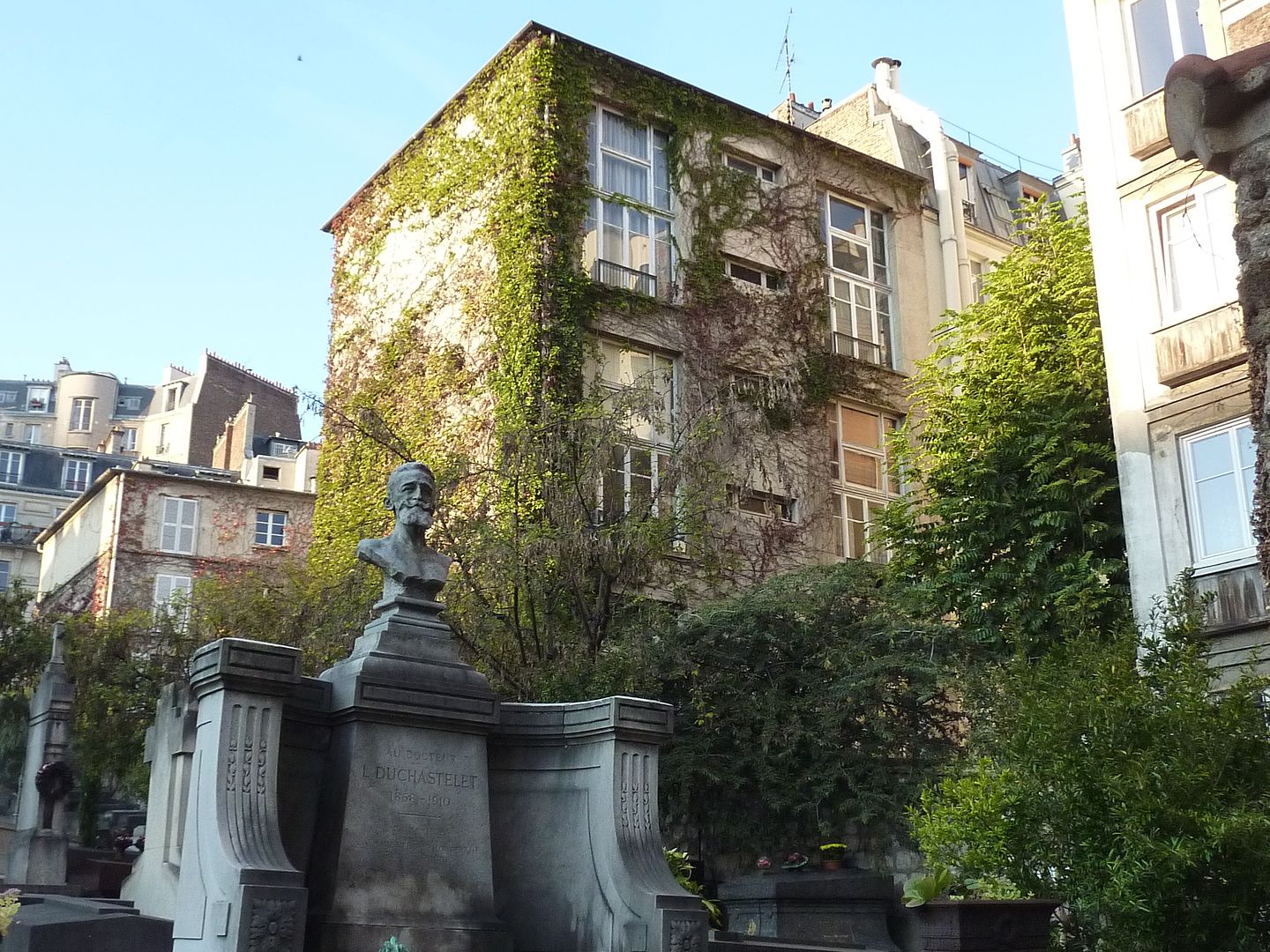
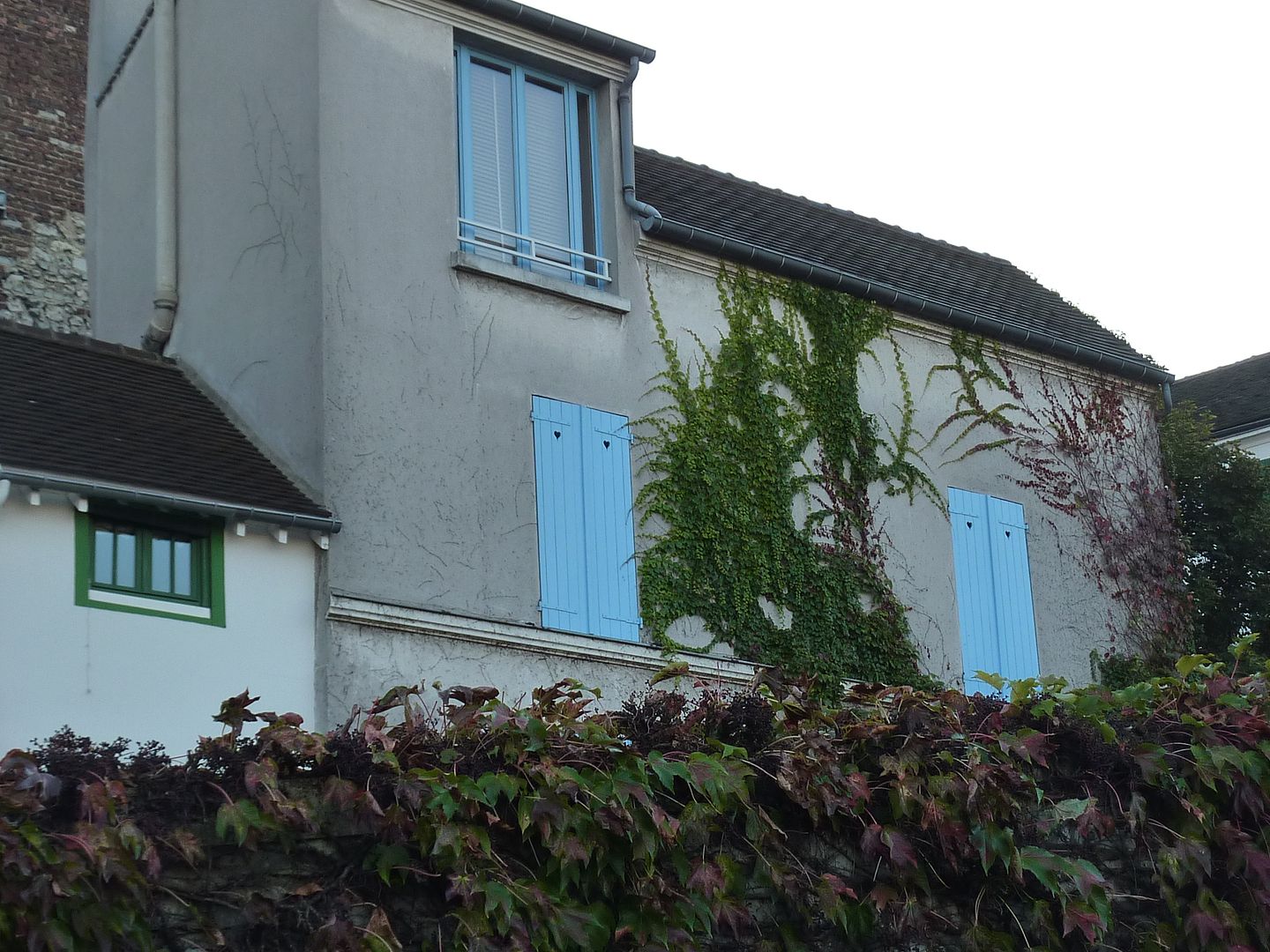
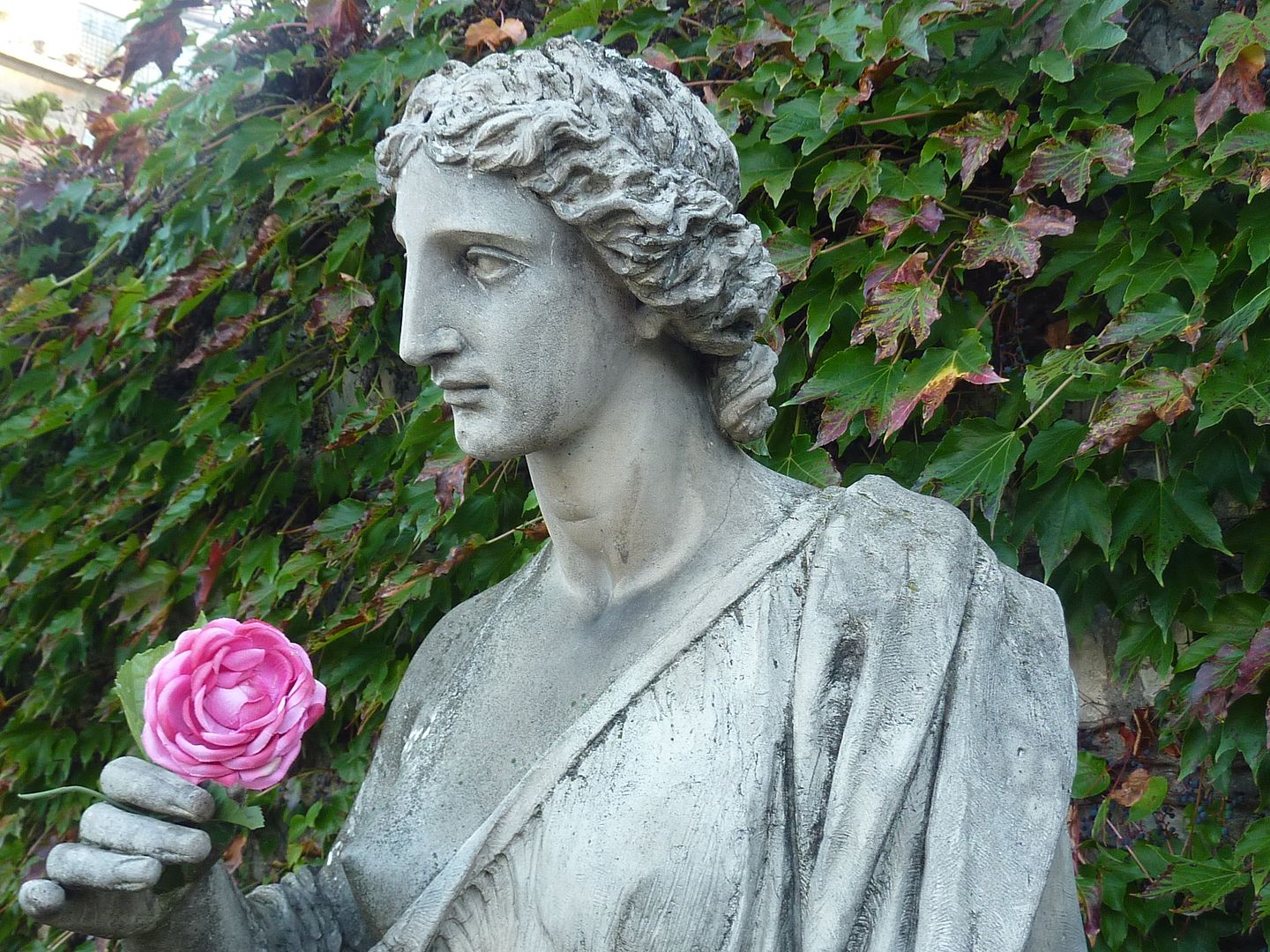
The tombs were mostly the usual old stuff....
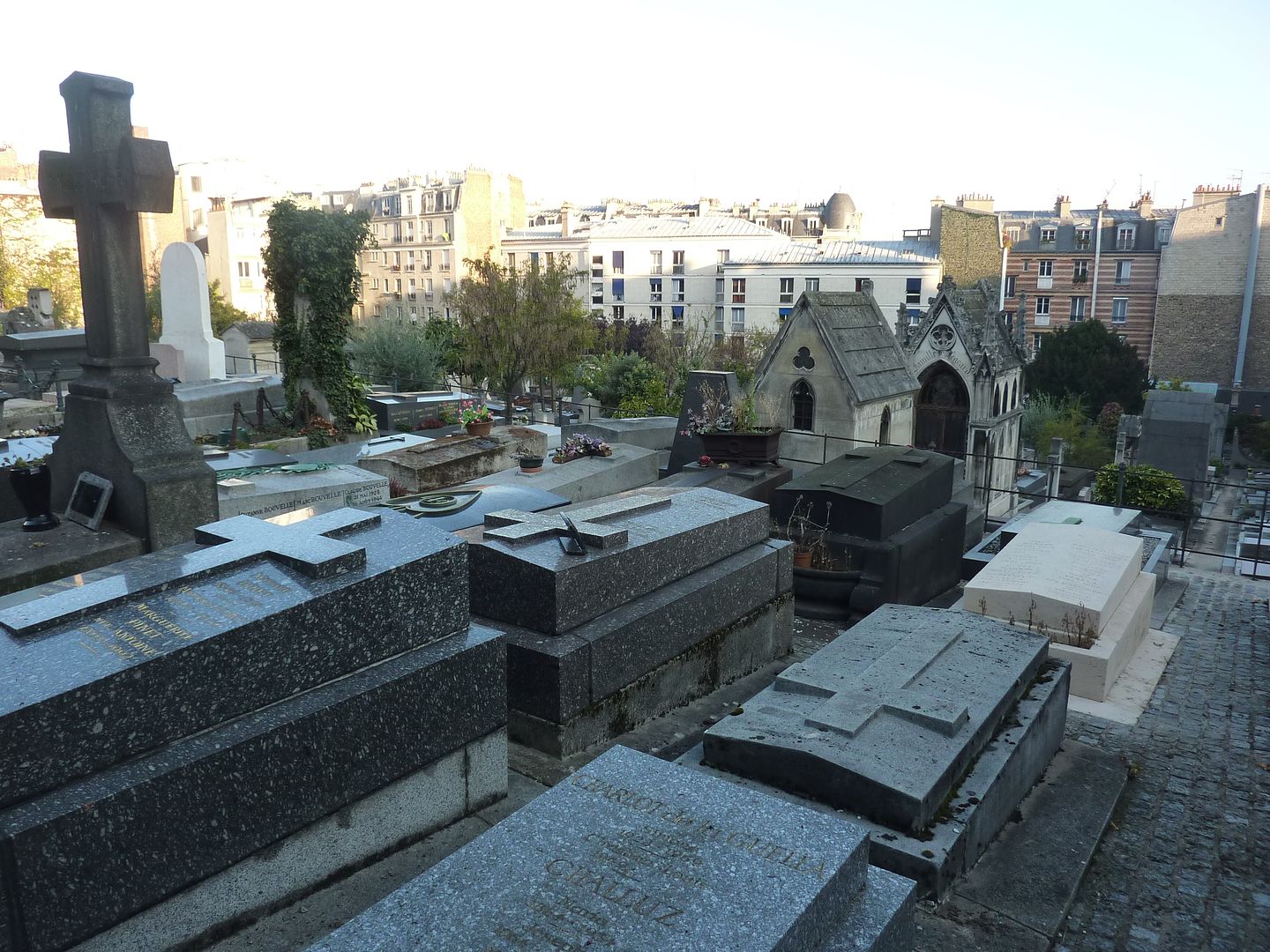
... but there were some great views over "lower" Paris.
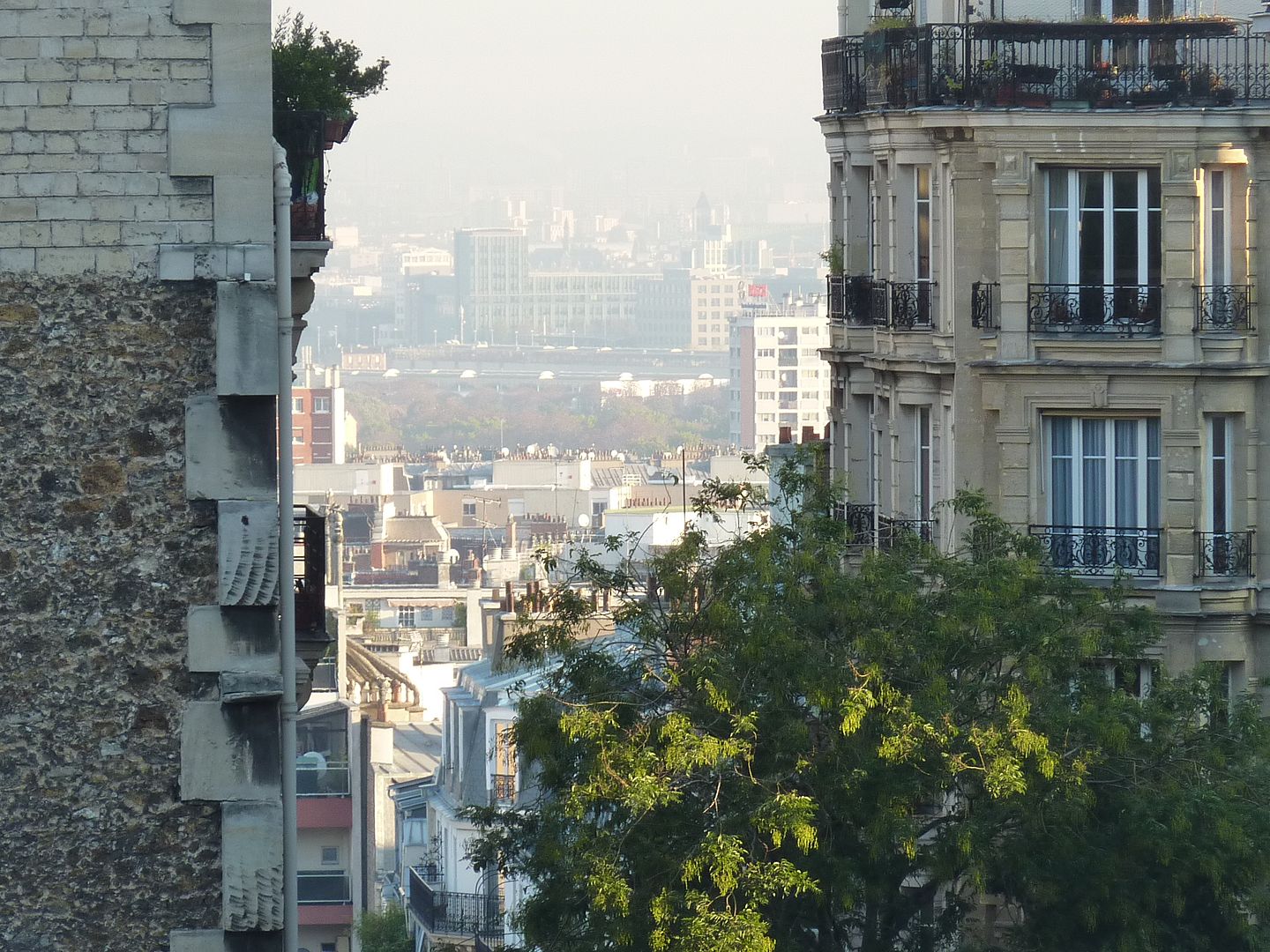
And who can resist the glorious autumn ivy? I certainly can't.



Some tombs were returning slowly to nature.

And nature was also chewing away at some railings.

I wandered through the alleys looking for little surprises.
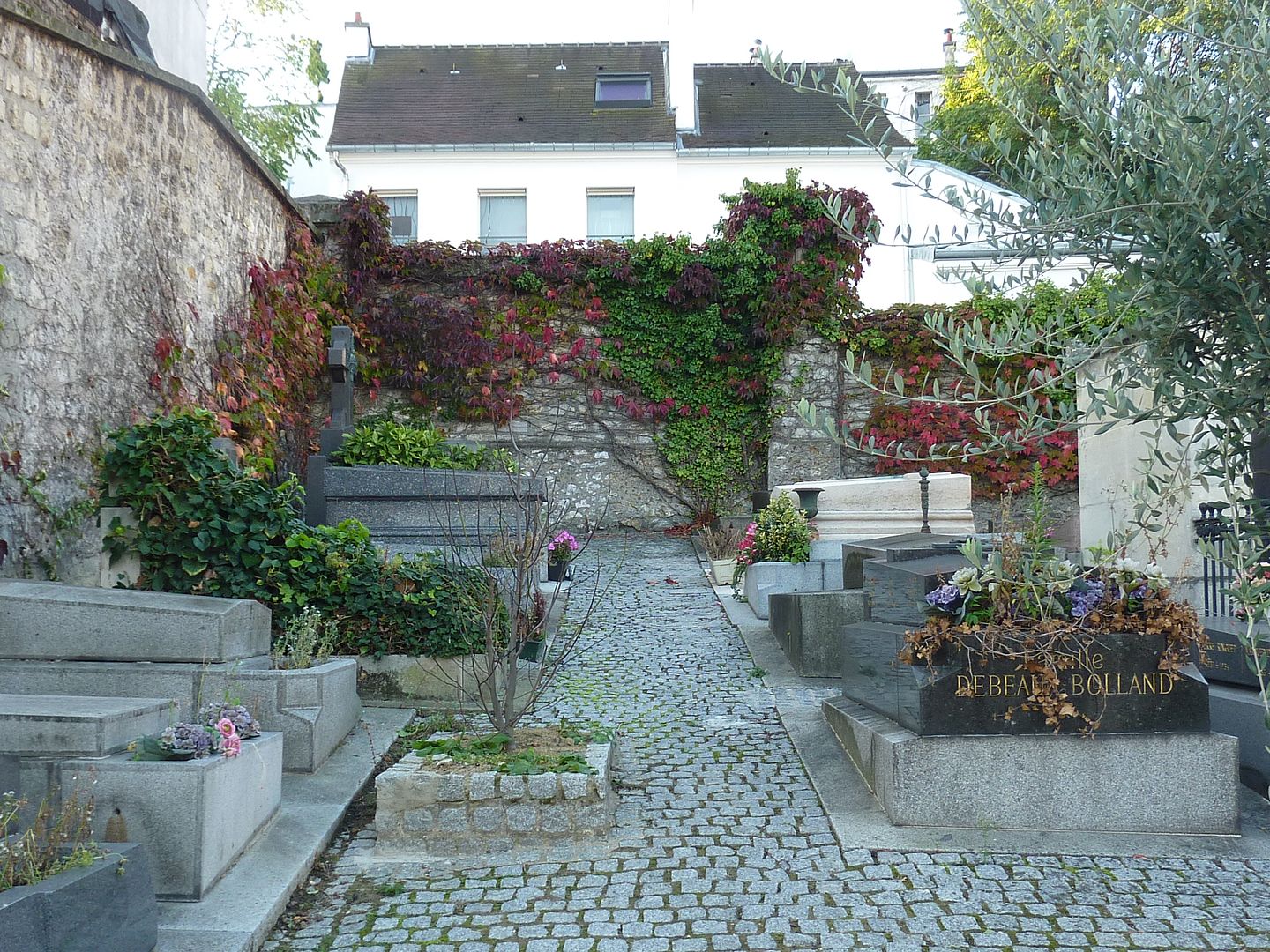
Did Mama die playing cards?
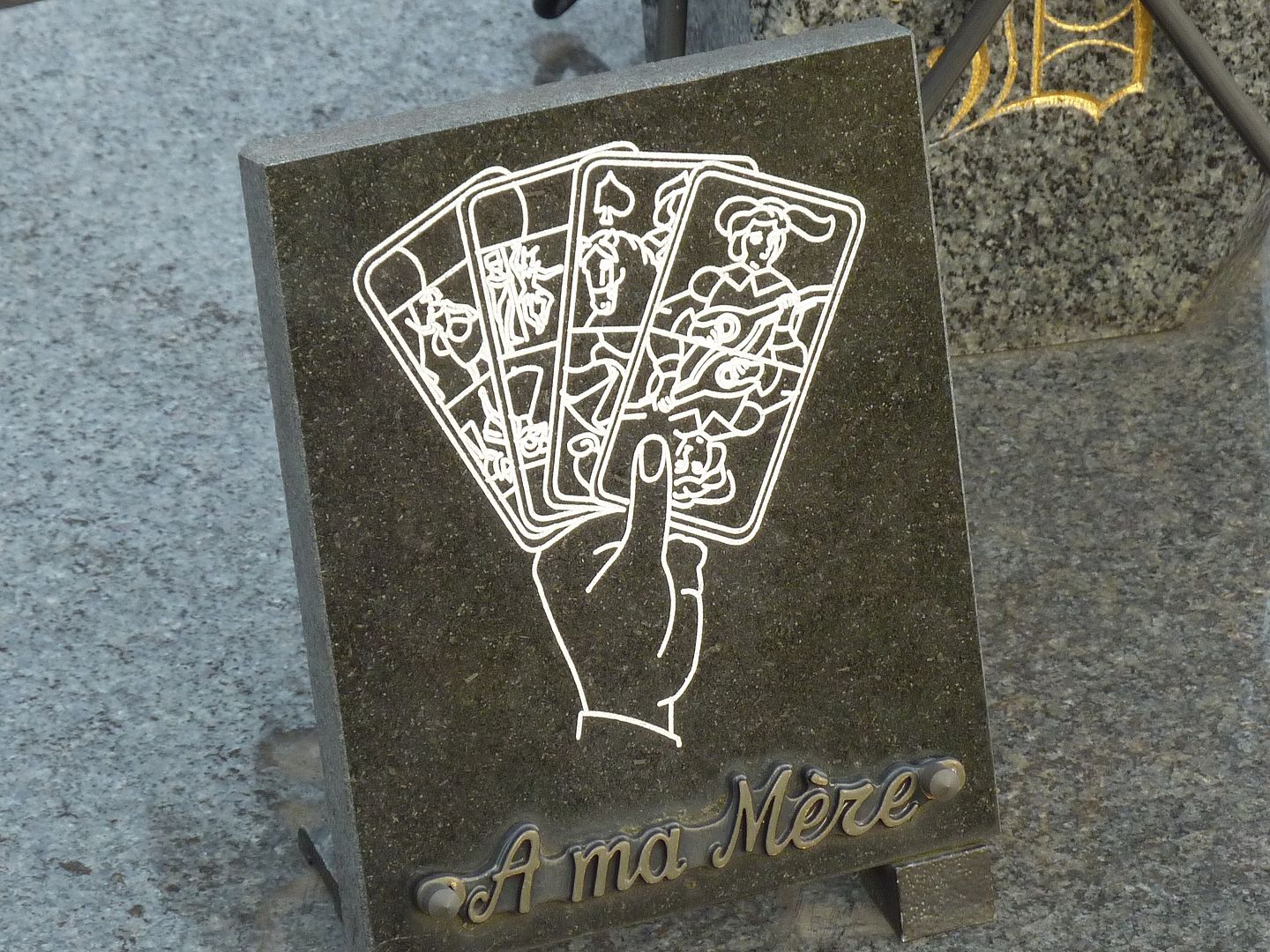
There were a couple places for people who didn't mind sharing.

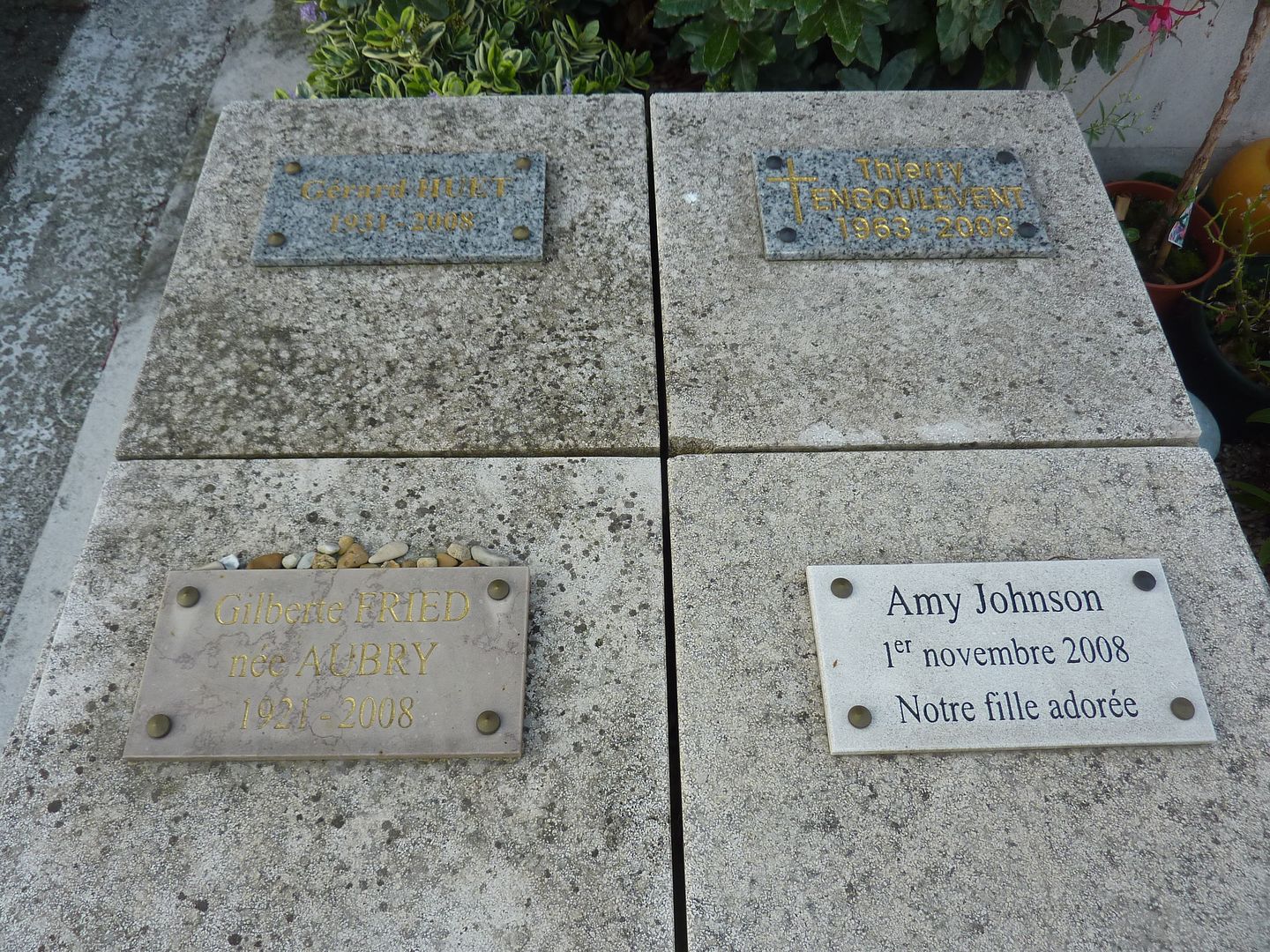
This WW1 nurse must have been an absolute heroine in view of her medals ("décorations" in French).
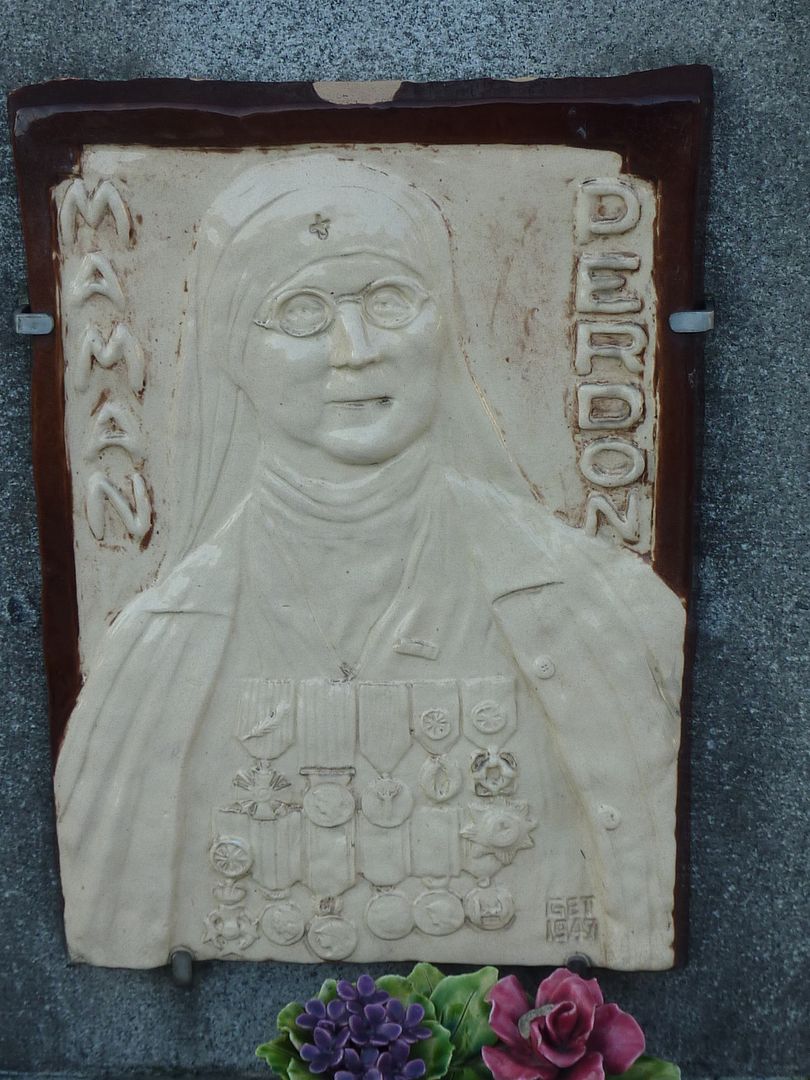

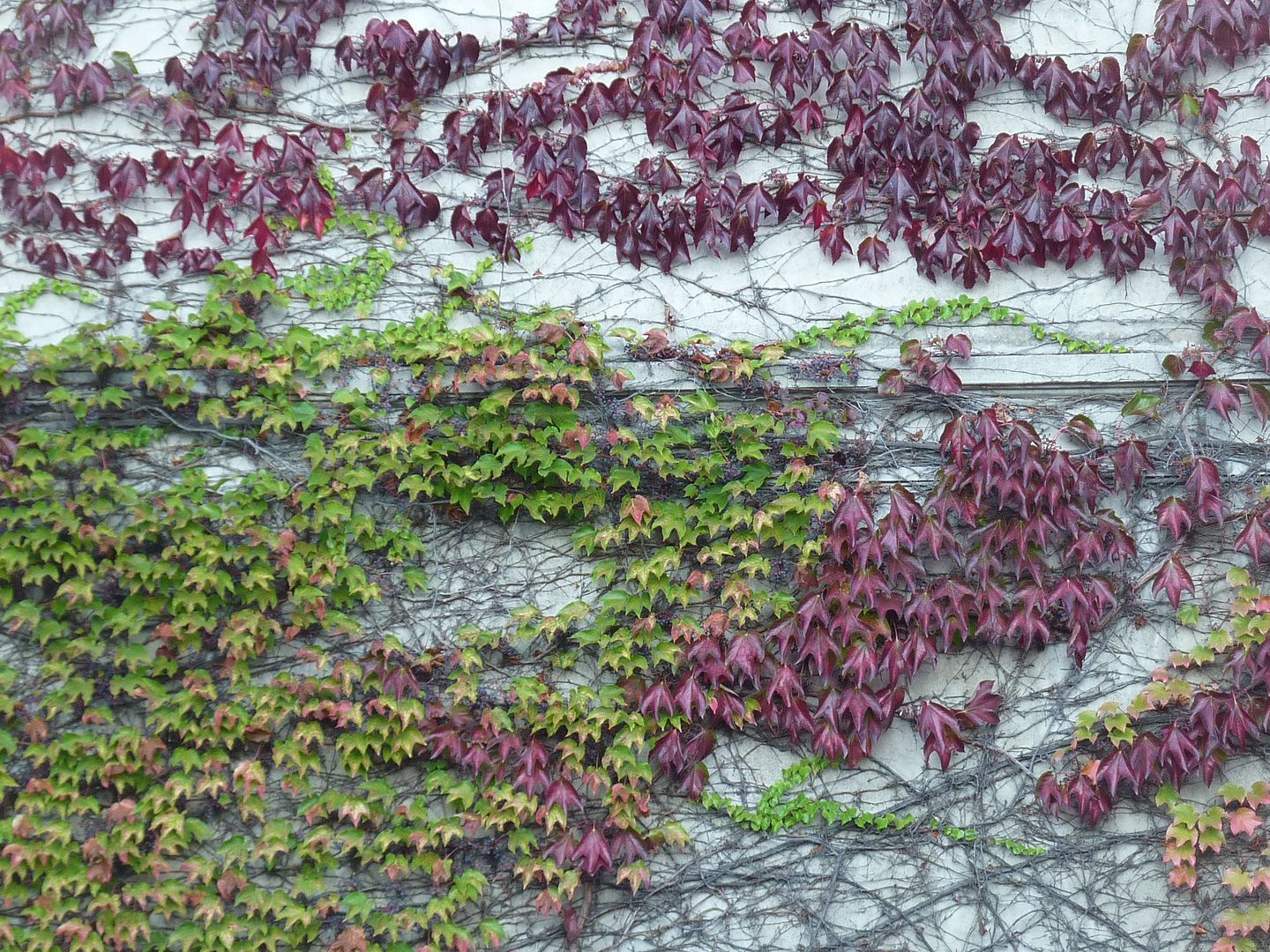

This cat surveyed its domain.
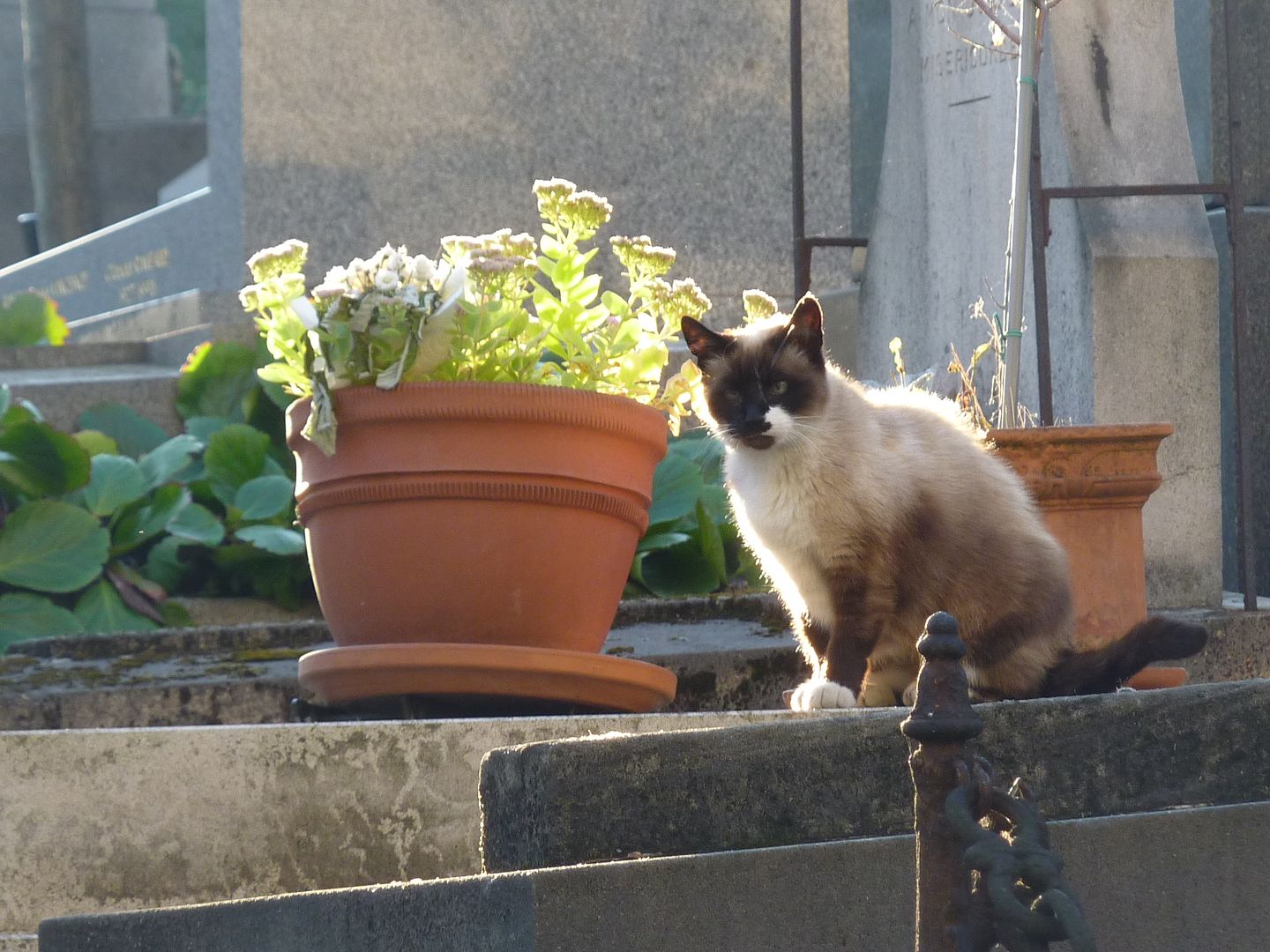
And then it came to take a crap.

In just two weeks, chrysanthemums will be everywhere!
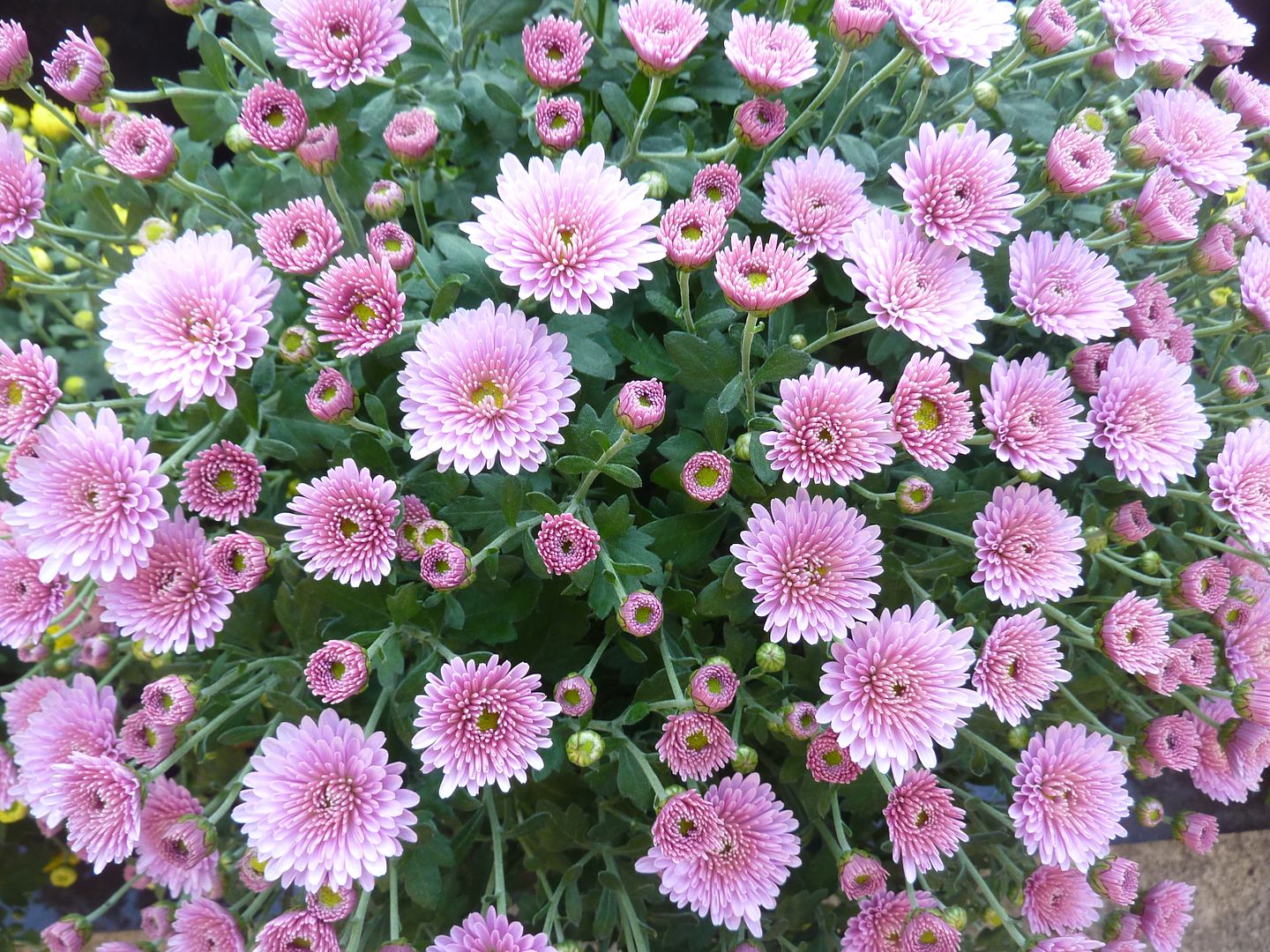
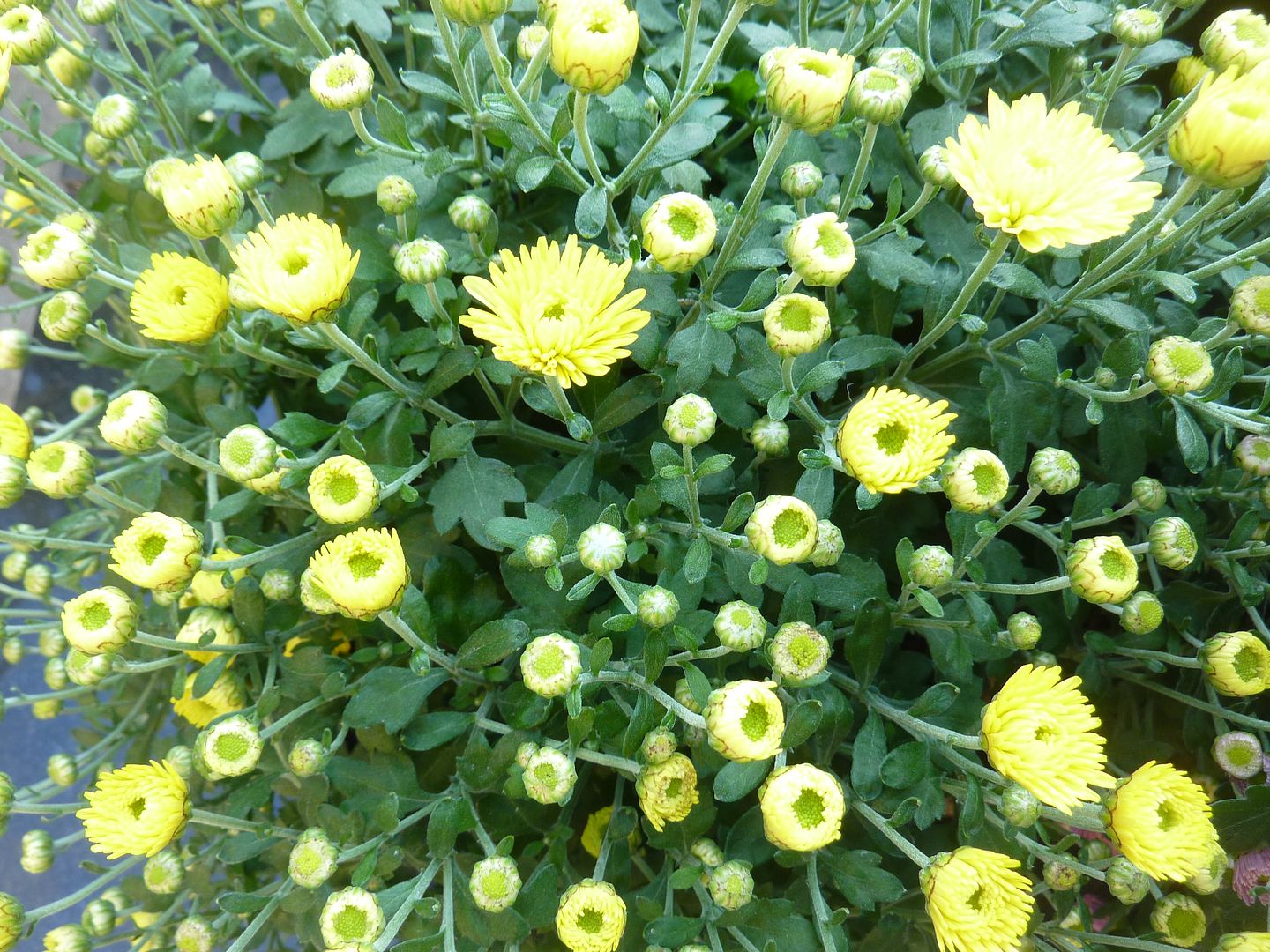
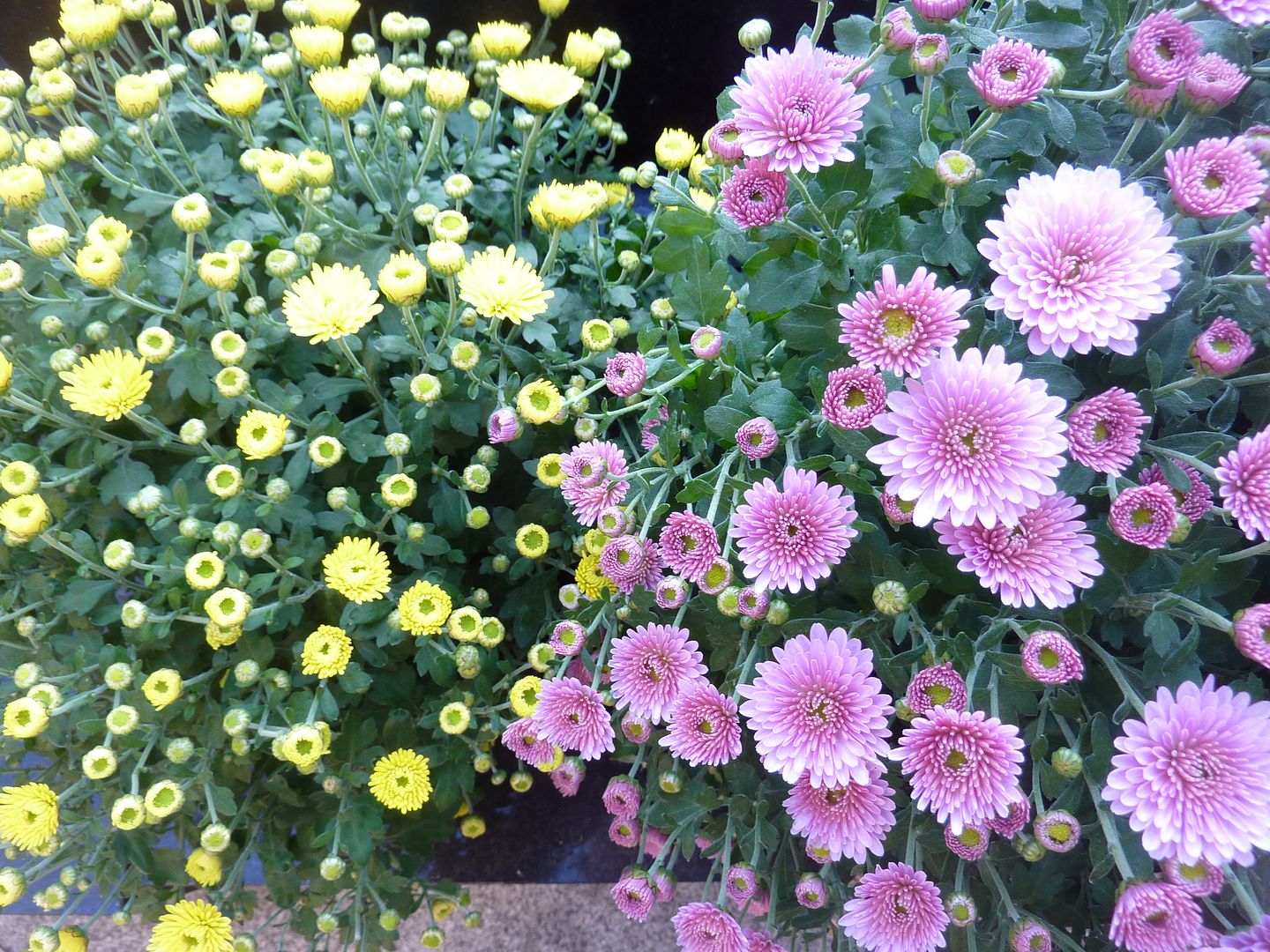
Cat returning home, feeling lighter.
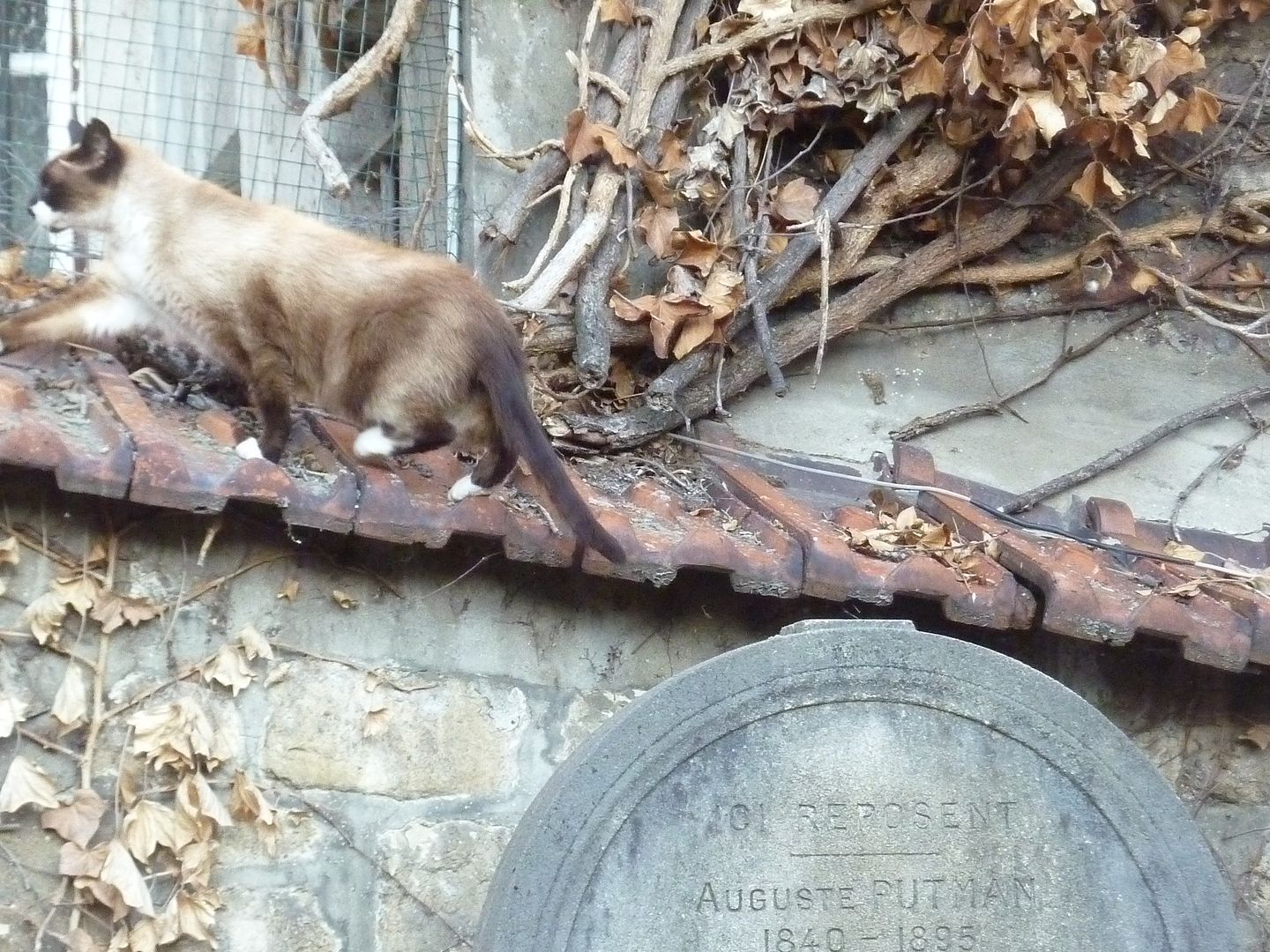
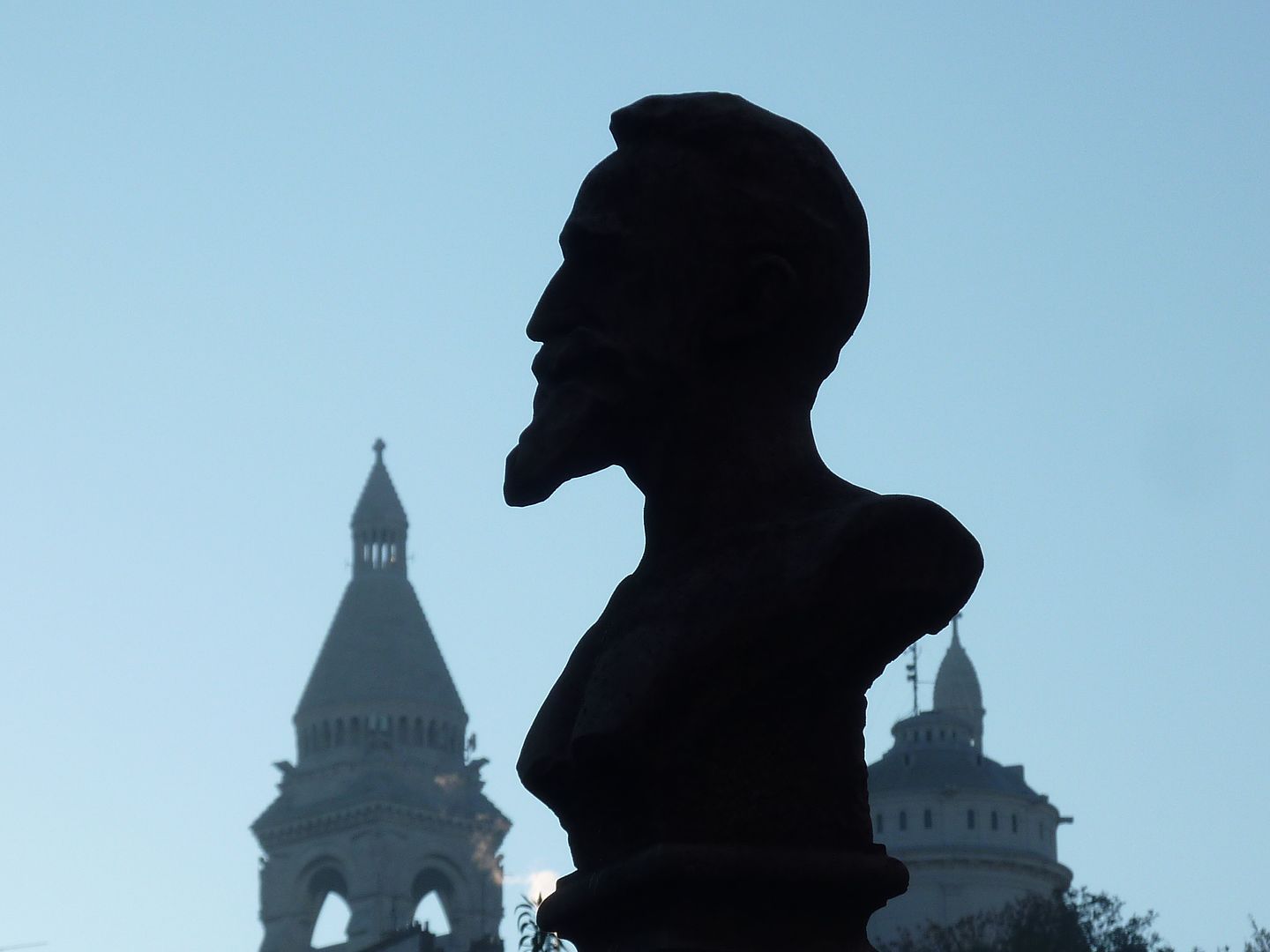
One of them is floating to heaven, I guess.


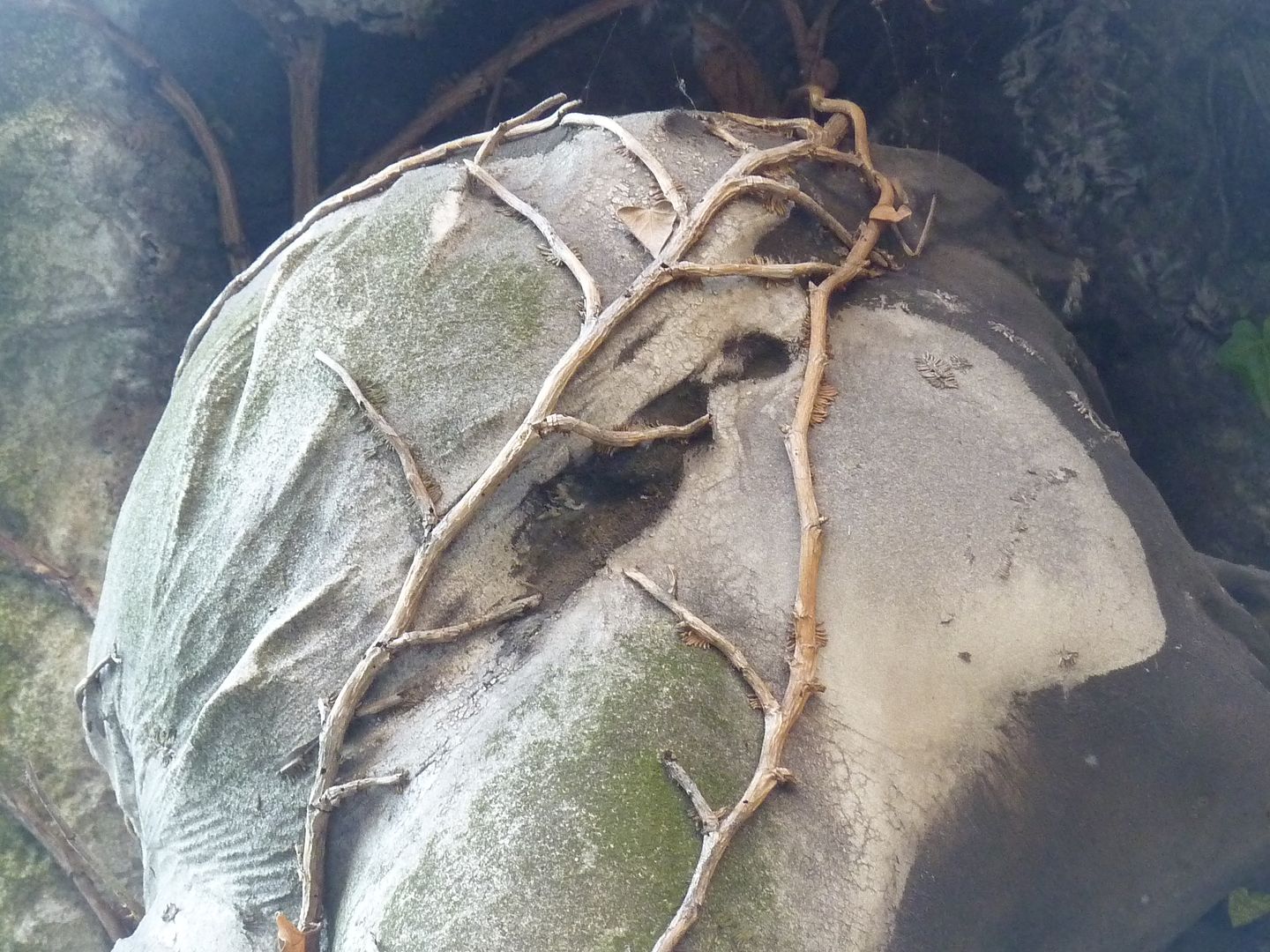
The Saint Vincent cemetery is really quite small.
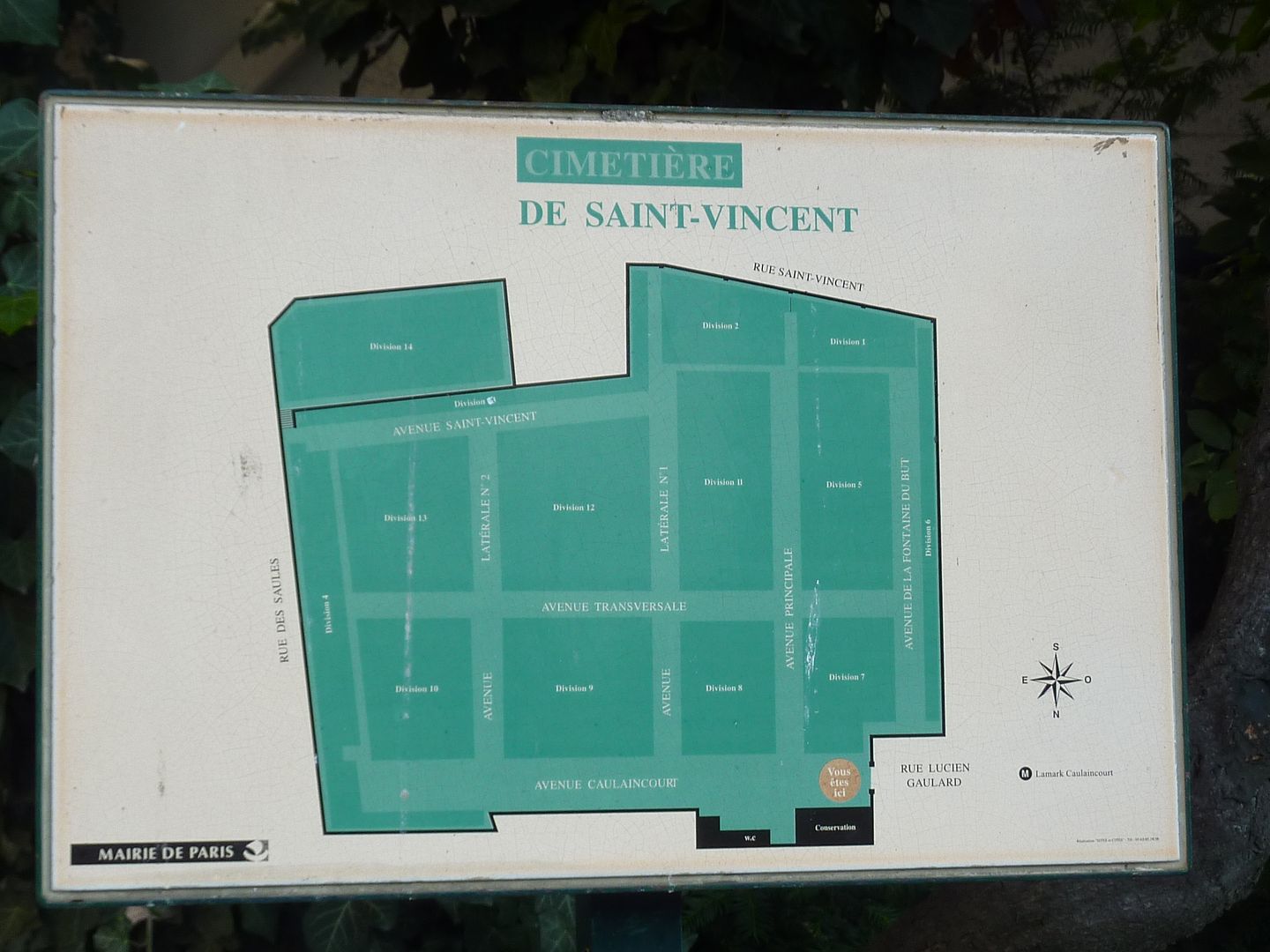
Signs try to reduce tourist confusion.
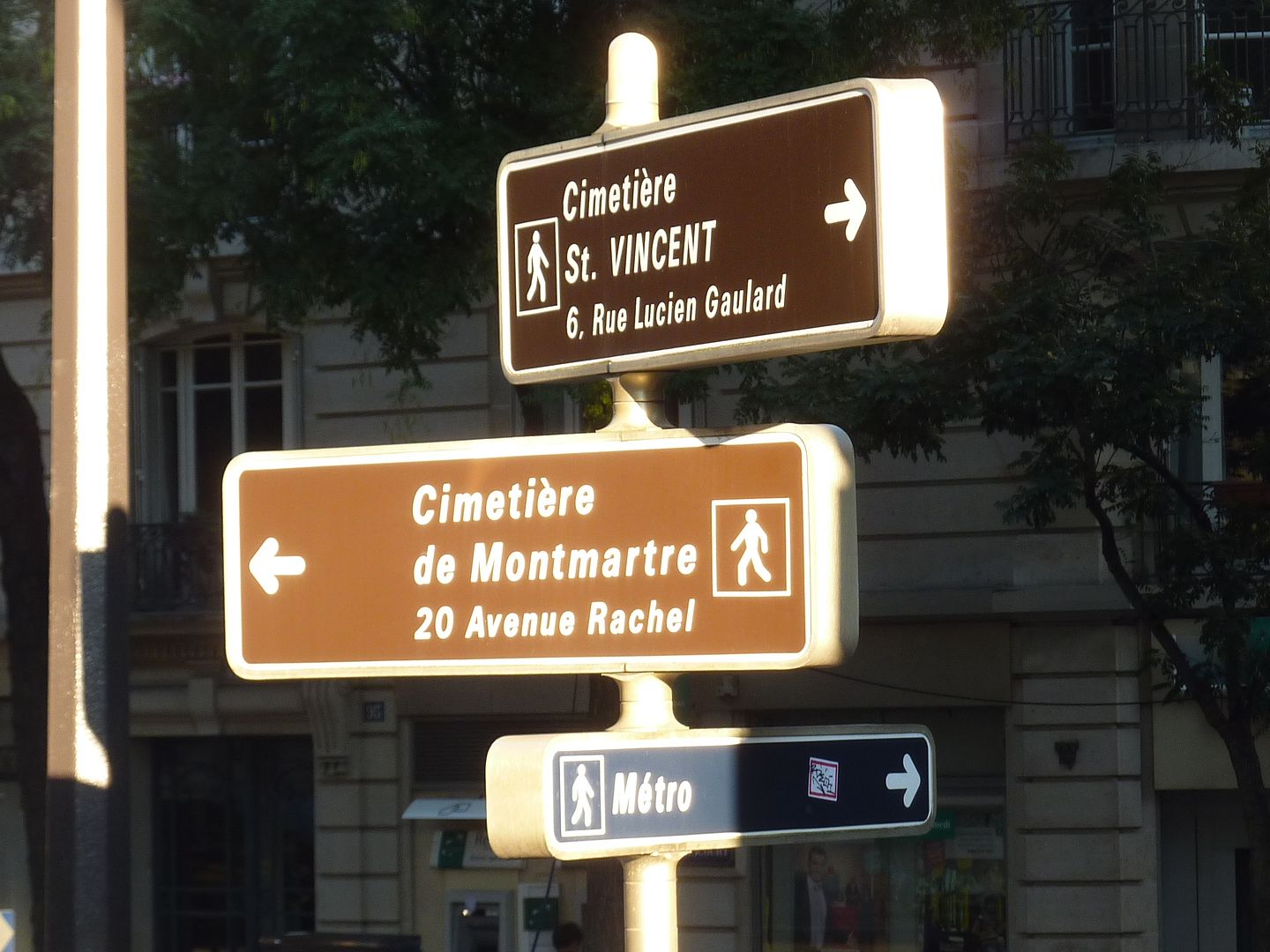
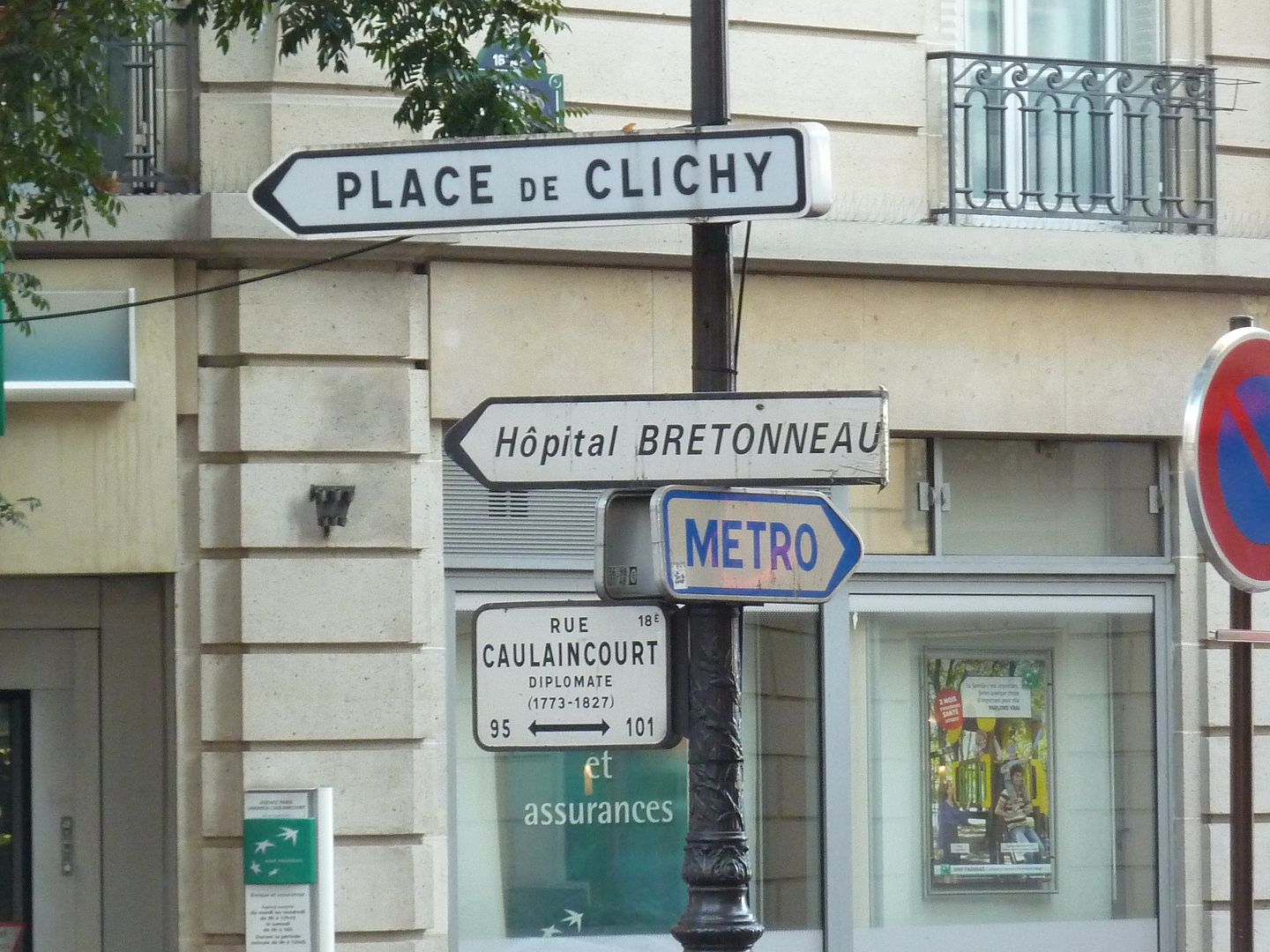
Just as I left Montmartre, the little tourist train was reporting to duty.

I really like Montmartre when I have it to myself.
The first "concept" of Montmartre is the Sacré Coeur area and all of the nearby hyper-tourist places: place du Tertre, rue des Abbesses, and of course rue de Steinkerque which leads most people from the Anvers metro station to the funicular. Nobody (not even Parisians) will deny the interest of seeing this aspect of Montmartre, even if it can be a pain during the height of the tourist season. It's impressive (Sacré Coeur and the view) and it's quaint (Montmartre village around Place du Tertre and the ultra-quaint little places all along rue des Abbesses). Everybody takes their country cousins there, but Parisians will try to avoid stopping in a café or restaurant there because of the "tourist" connotation and prices. However, it must be admitted that not every place is a tourist trap. It is sort of a hit-and-miss lottery.
Another idea of Montmartre is what Parisians call "Pigalle." Basically it is the area stretching across the zone of the Blanche-Pigalle-Anvers metro stations on line 2. Both sides of the boulevard are lined with sex shops and sex shows (and also the Moulin Rouge), and the streets branching off are full of hooker bars and streetwalkers, both on the 18th arrondissement side and on the 9th arrondissement side.
People who see only this are generally horrified, and there is a huge problem with the hotels and holiday rental apartments which all use the term "Montmartre" to advertise their location here. On a lot of the travel sites, I see warnings about how sleazy and horrible Montmartre is, which implies that this is all the visitors saw. Parisians do come here, but mostly because a lot of the rock and pop music venues are here. There are a few music bars and cafés as well, but most tourists would never know the difference and go to the wrong place.
And then there is the "real" Montmartre, where people live. This morning I went to the part where the rich live. I'm not rich and don't even know any rich people anymore (I used to), but it doesn't stop me from admiring some of the aspects of their neighbourhood.
So I took the metro to Lamarck-Caulaincourt this morning and just walked around approximately a six-block area (except that Montmartre has no blocks -- just winding streets that bump into other winding streets). This is just four metro stations from where I live but it is a completely different world.

Lamarck-Caulaincourt is one of the deepest stations in Paris because the people building the metro kept the tracks at the same level everywhere and just burrowed their way to the surface from there, so they went up a long way to hit daylight in Montmartre.
Did anybody say that the metro is dirty?

The elevators at both Lamarck-Caulaincourt and Abbesses are big enough for a regiment (well, maybe not quite). Did I say this is Sunday morning, before the crowds begin?

And we're out! Amélie Poulain had an important scene here in her movie.


I love rue Caulaincourt, but it is not the object of my visit.

Huge numbers of Parisians now use motorcycles and scooters to get around.

I really like the thin buildings, which ensure all sorts of windows with different views.

I live in a thin building myself (but not a nice one). I love having windows that show me three completely different scenes since I have windows on all three sides.
You have to climb a few stairs to get to the good places.
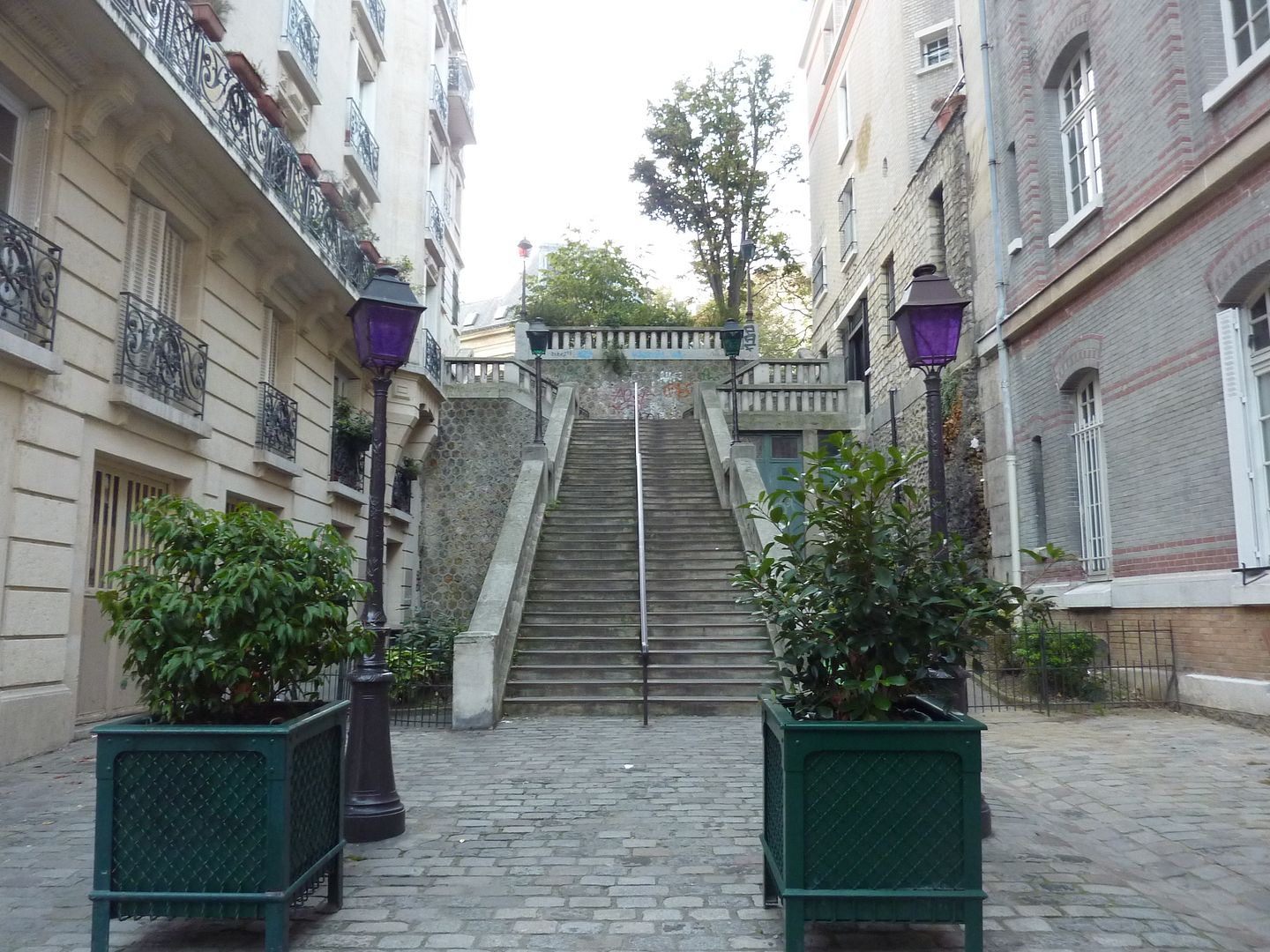
You can also look back to see where you have been.
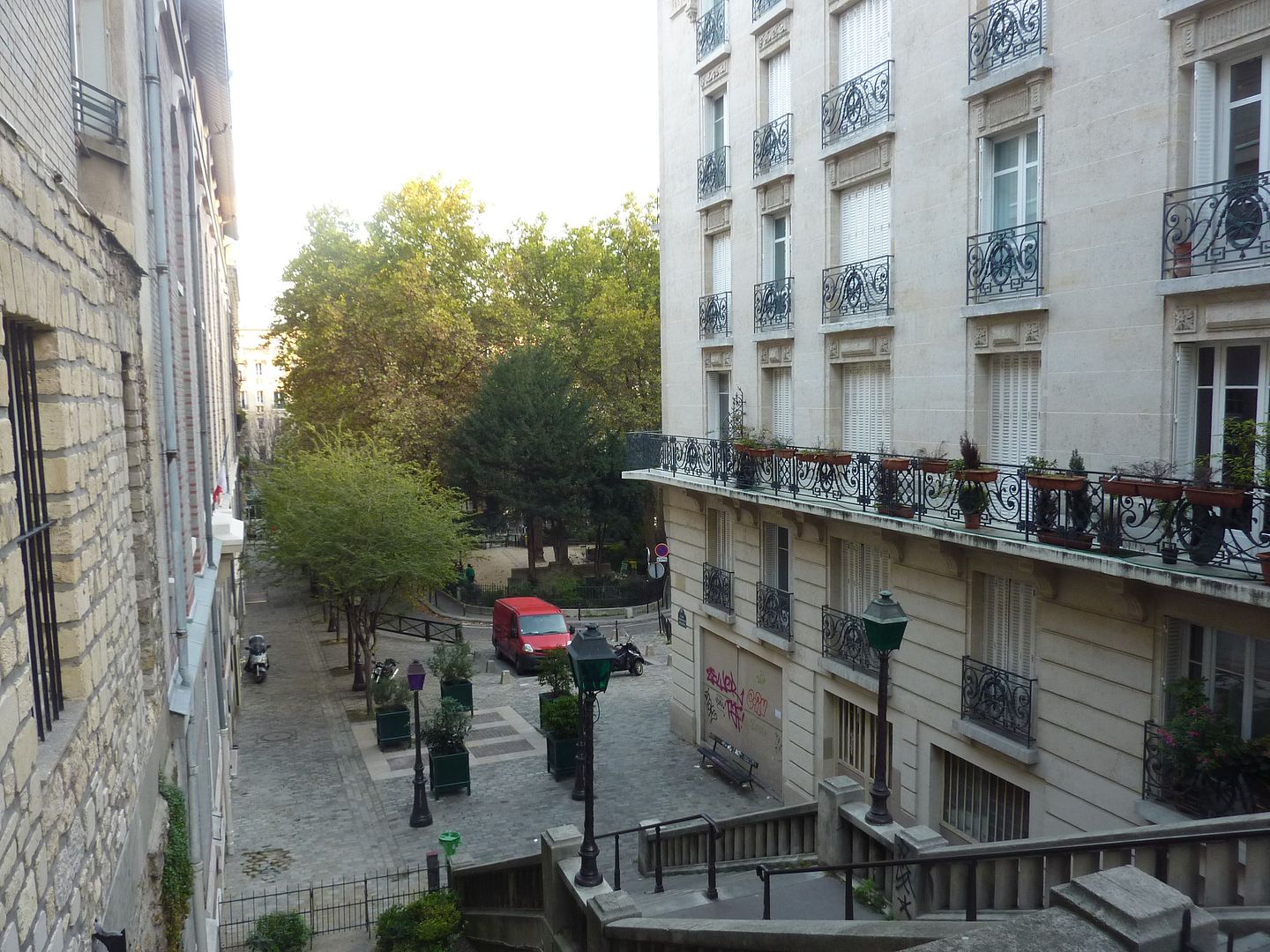

You can also look back to see where you have been.

This takes us up to Place Dalida, named after a French cultural icon. She was an Italian from Alexandria, Egypt who became one of the most beloved pop singers. She was Miss Egypt in 1954 and committed suicide in 1987 due to a lack of love. This is also exactly where she lived in Paris, but not everybody seems to respect her memory.

Looking in the direction of Sacré Coeur which you can't quite see...

The amount of gardens and open space is remarkable up here. I saw this gate...

... and walked up to get a better look. Who lives here?
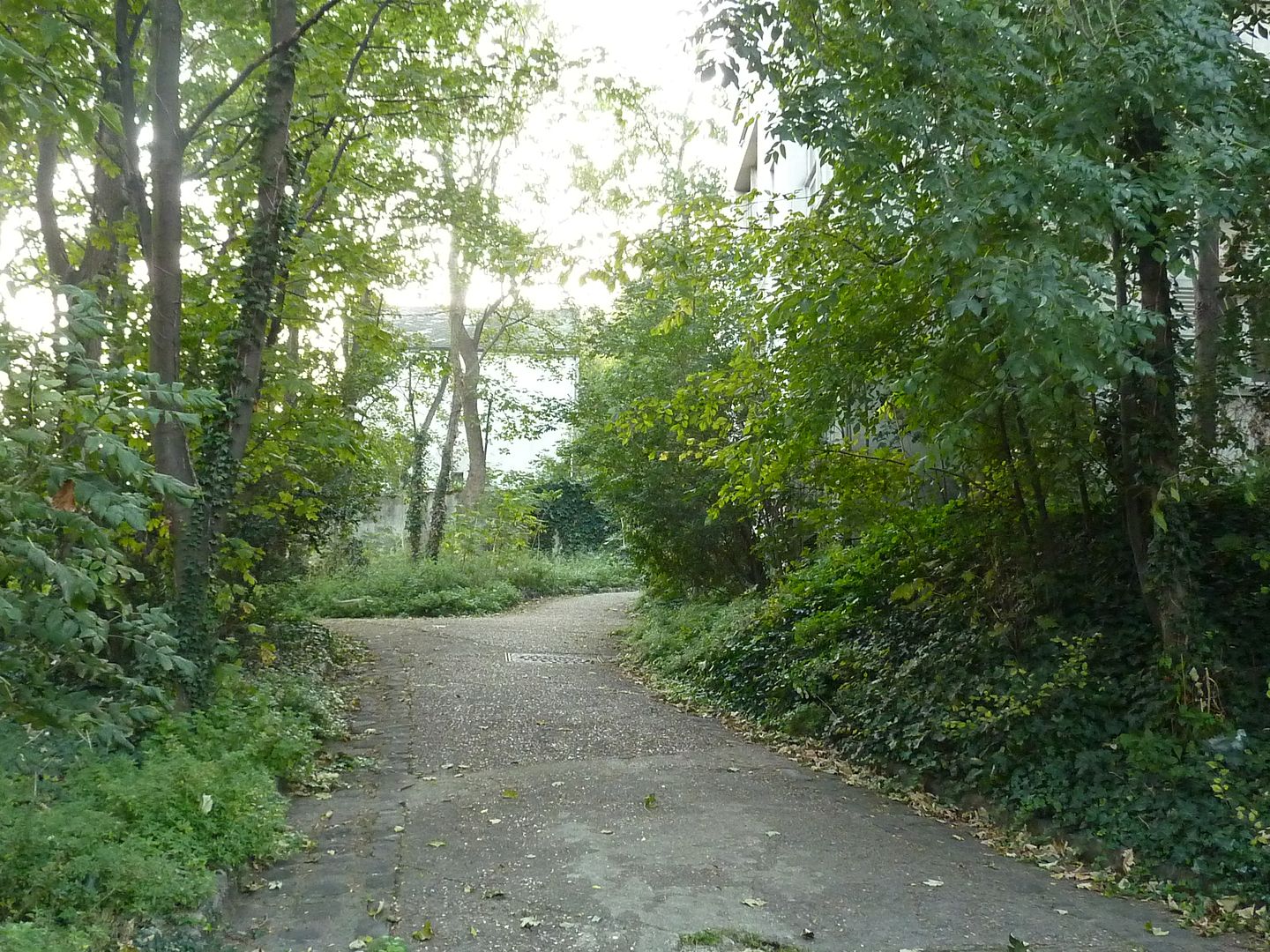
Lots of similar mysteries...
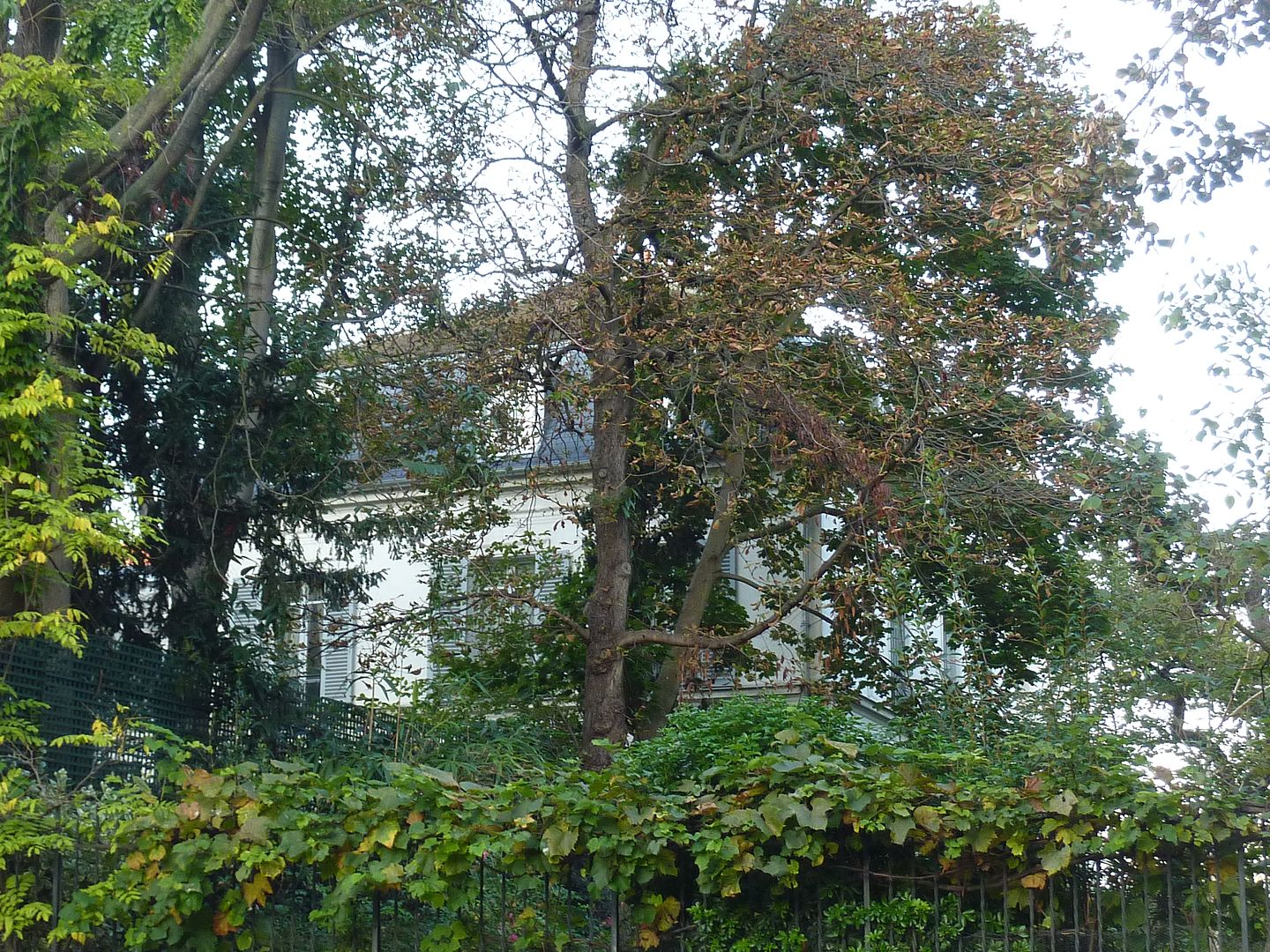
This is the private cinema of Claude Lelouch (but you can rent it for a private party).

On the right is another private alley of beautiful residences.
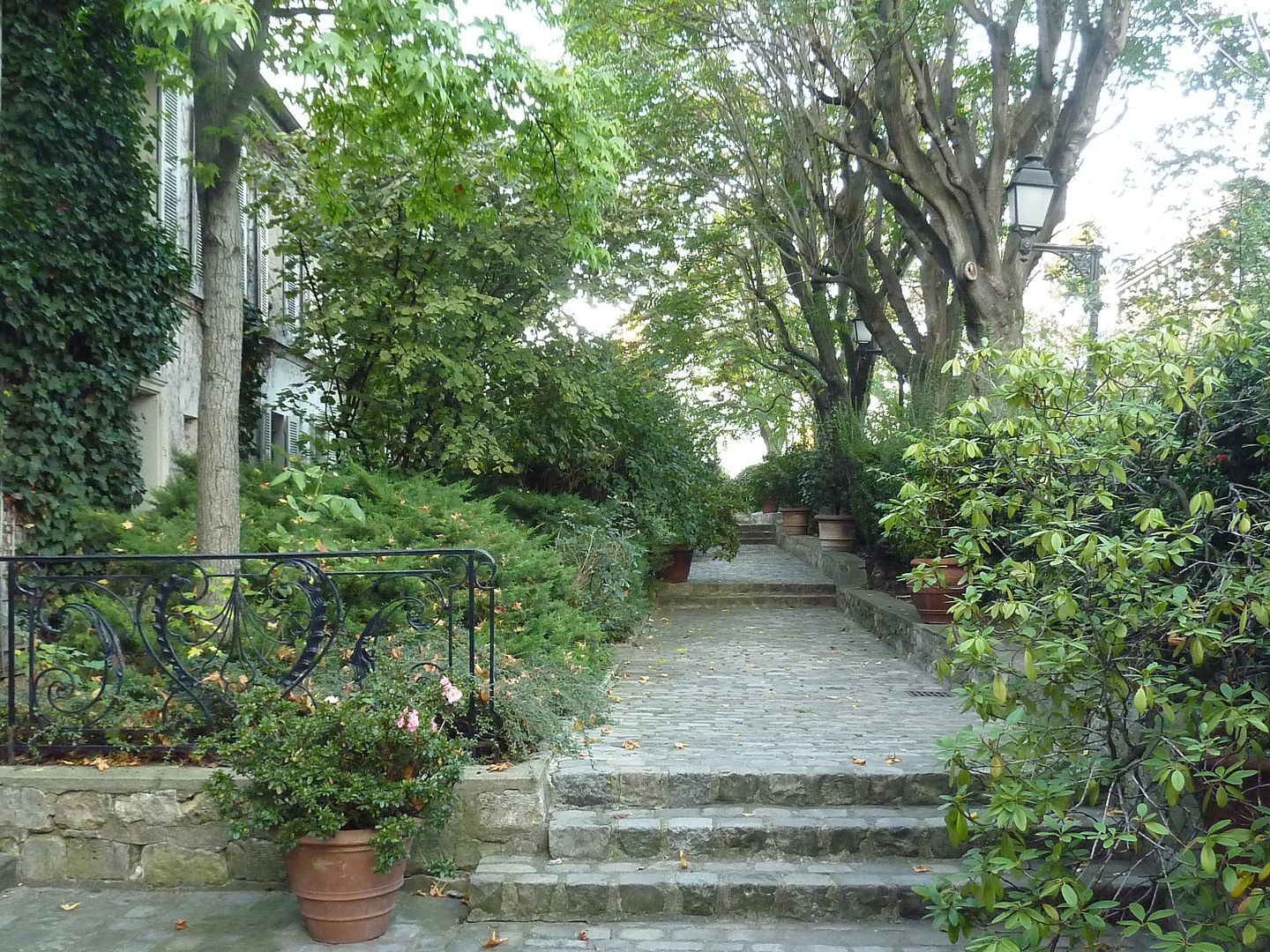
Note: you must like ivy to live in this part of Montmartre.
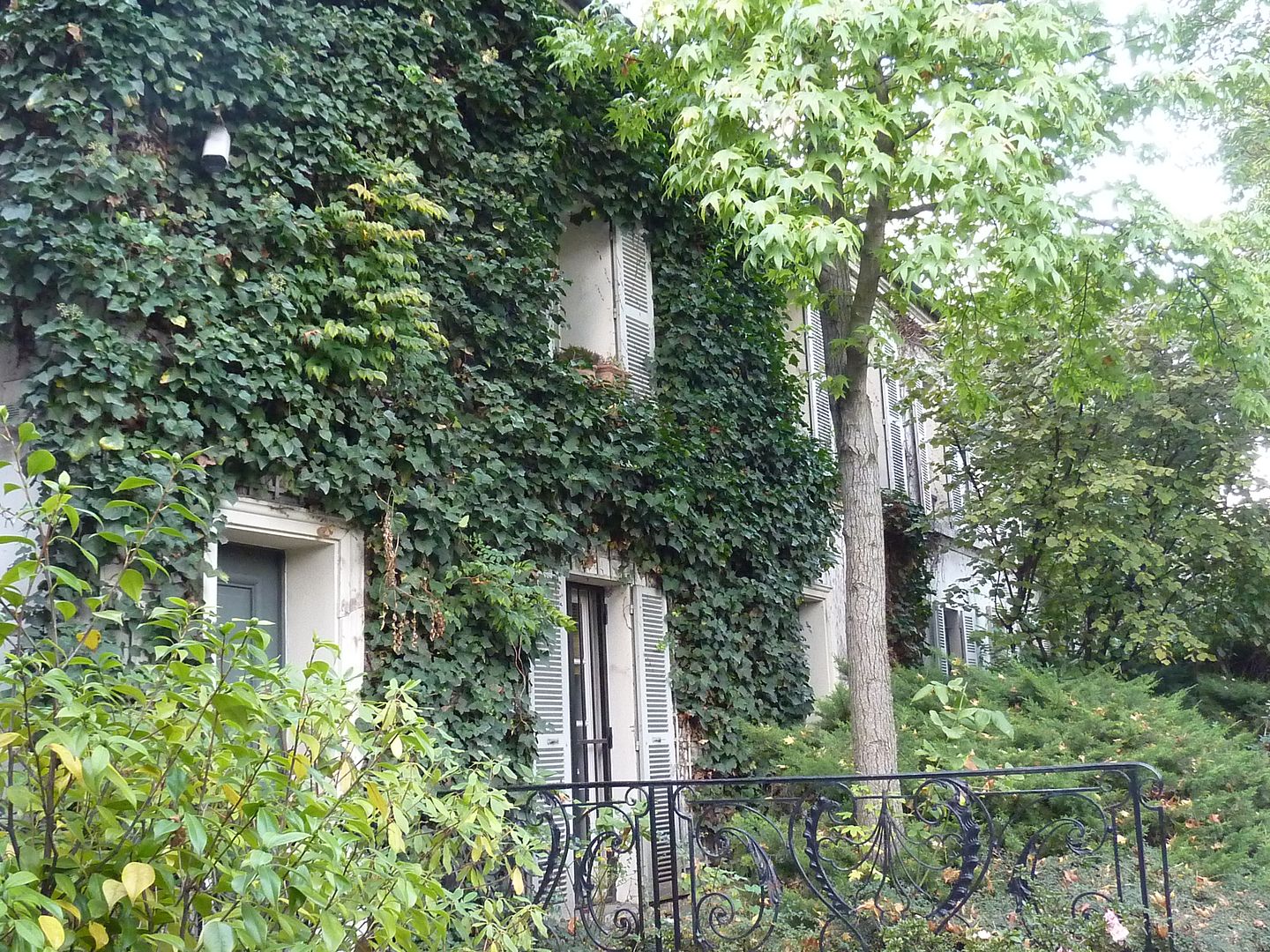
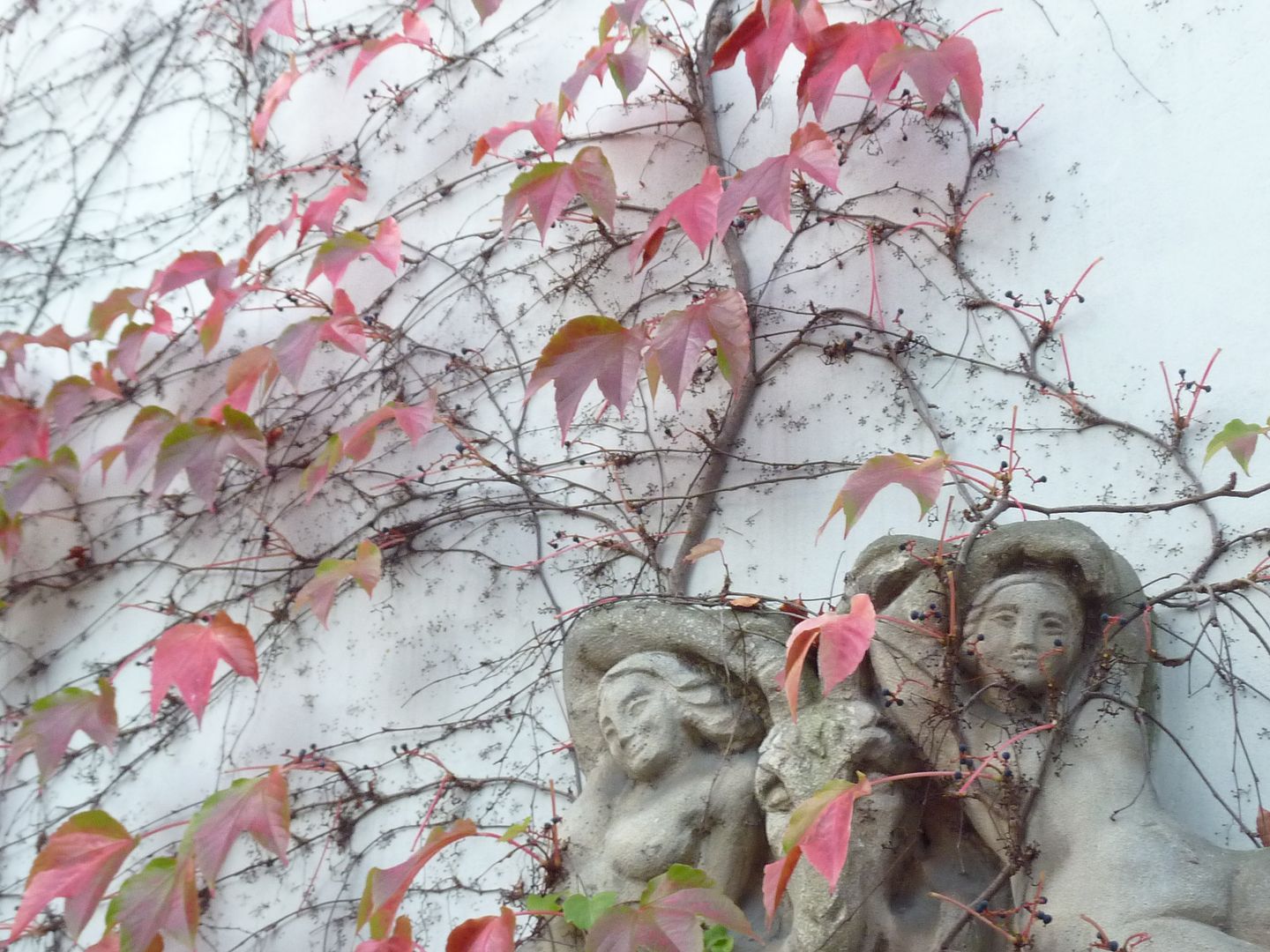
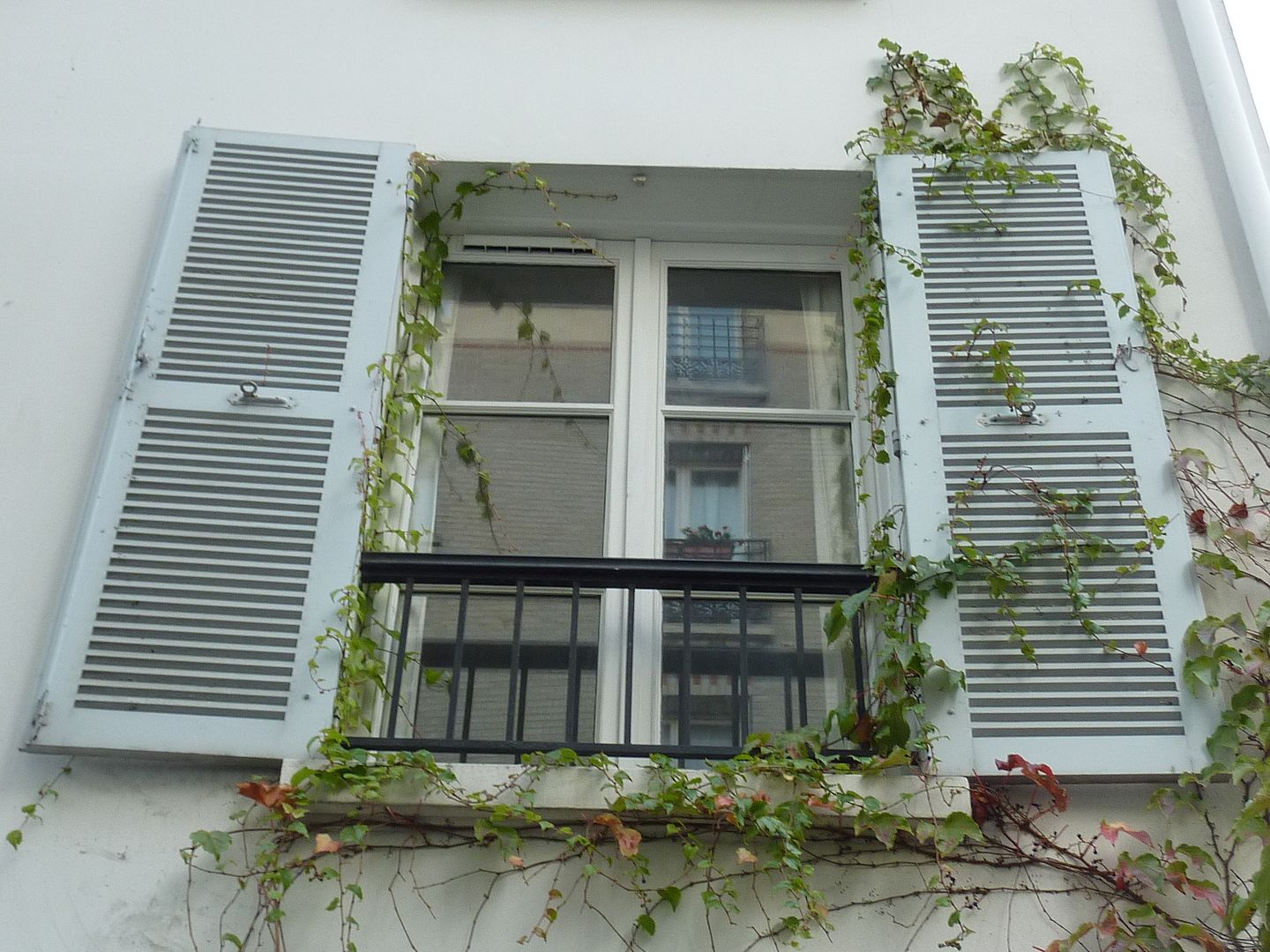
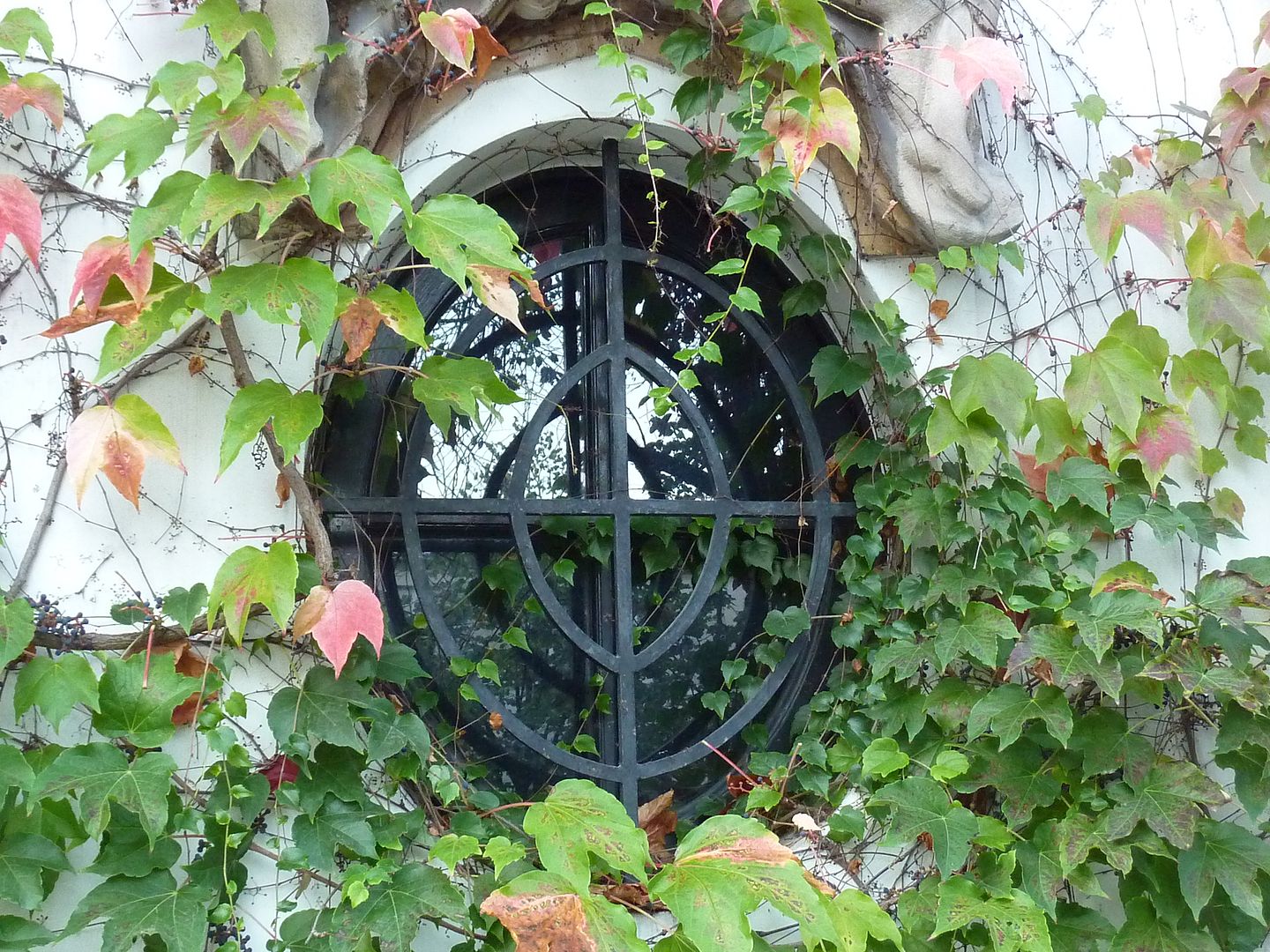
Secret gardens behind secret doors....


... and walked up to get a better look. Who lives here?

Lots of similar mysteries...

This is the private cinema of Claude Lelouch (but you can rent it for a private party).

On the right is another private alley of beautiful residences.

Note: you must like ivy to live in this part of Montmartre.




Secret gardens behind secret doors....

Okay, here is something that the tourists come looking for, le Passe-Muraille, a literary figure created by the author Marcel Aymé in 1943. Obviously, the character could walk through walls.

And also right here is the (completely reconstructed) Moulin de la Galette, dating from 1978. At least it looks the same as it did in 1809.


I still have all of the streets to myself.




Avenue Junot is one of the most expensive streets in the city for real estate.







When you walk up some of the alleys, you can see new passages to totally inaccessible (to people like us) private neighbourhoods.

I could see a whole new world as I leaned through the grates. (Hello, kitty on the left!)

It should be mentioned that this area is the only tiny zone of the 18th arrondissement that votes for right wing candidates for some reason.









A local real estate agency gives an idea of the prices.




Parking can be a problem, however.

Because of all of the old quarries in Montmartre, it is impossible to build underground parking even under the rare new buildings here. My only claim to living anywhere near Montmartre was that I had to obtain a "quarry certificate" for insurance purposes when I bought my place to confirm that there was no risk of the building collapsing due to possible subterranean cavities. (There are at least one or two incidents a year that damage buildings, but the last building that fell down was in 2008 on rue Tholozé, quite near the area I was visiting -- just below the Moulin de la Galette.)
From avenue Junot, you just have to go down one flight of steps to get to very commercial rue Caulaincourt.




This is a medical center.

I had forgotten to recharge my camera battery and it was beginning to complain as it got down to its last 20% or so of power. So I decided that I would have to consider this brief tour of residential Montmartre as sufficient.

But, all of a sudden, what was this little cemetery that I had never noticed?

Better go in and take a look!

More lovely ivy-covered residences overlooked it.



The tombs were mostly the usual old stuff....

... but there were some great views over "lower" Paris.

And who can resist the glorious autumn ivy? I certainly can't.



Some tombs were returning slowly to nature.

And nature was also chewing away at some railings.

I wandered through the alleys looking for little surprises.

Did Mama die playing cards?

There were a couple places for people who didn't mind sharing.


This WW1 nurse must have been an absolute heroine in view of her medals ("décorations" in French).




This cat surveyed its domain.

And then it came to take a crap.

In just two weeks, chrysanthemums will be everywhere!



Cat returning home, feeling lighter.


One of them is floating to heaven, I guess.



The Saint Vincent cemetery is really quite small.

Signs try to reduce tourist confusion.


Just as I left Montmartre, the little tourist train was reporting to duty.

I really like Montmartre when I have it to myself.



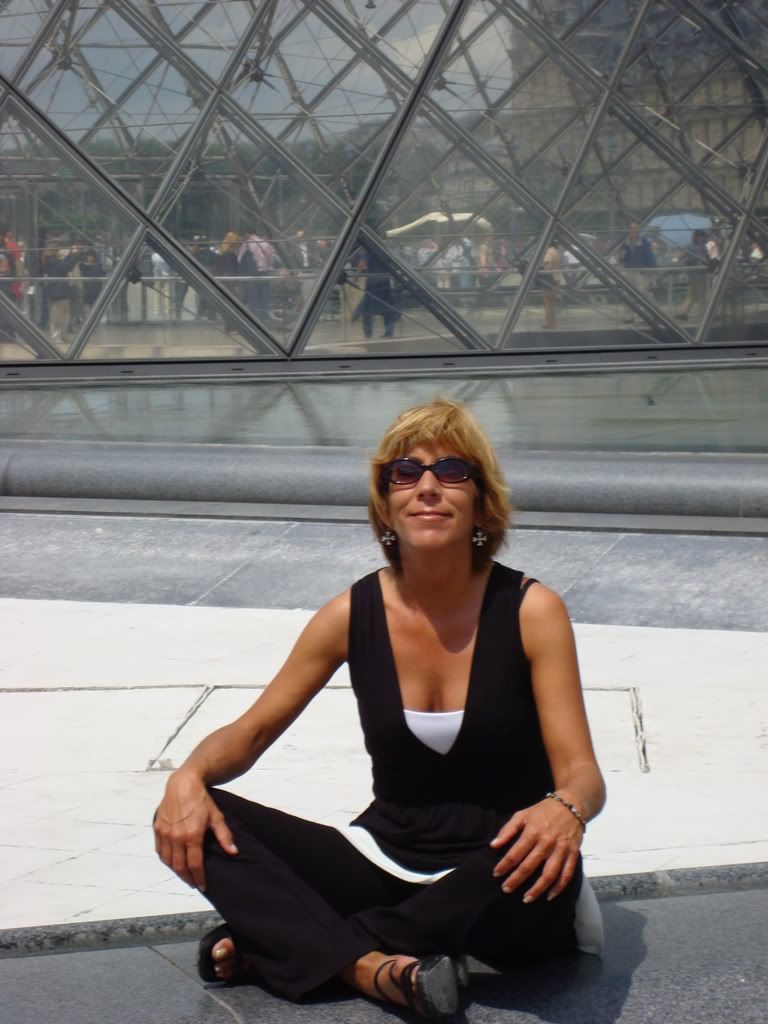




 hahahha
hahahha